Andrei Shleifer
description: a Russian-American economist and a professor at Harvard University, known for his work in the field of finance
110 results
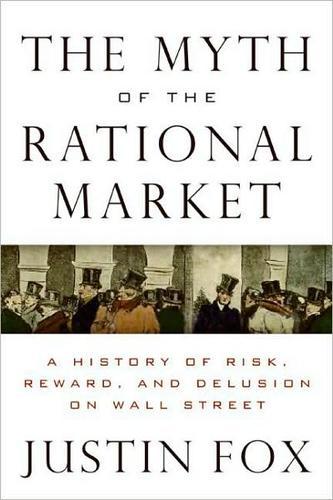
The Myth of the Rational Market: A History of Risk, Reward, and Delusion on Wall Street
by
Justin Fox
Published 29 May 2009
James Tobin, “A Proposal for International Monetary Reform,” Eastern Economic Journal (July–Oct. 1978): 153–59; Keynes, General Theory, 160; “Glass’s 5% Tax Plan Stirs Wall Street,” New York Times, June 6, 1929, 6. CHAPTER 14: ANDREI SHLEIFER MOVES BEYOND RABBI ECONOMICS 1. Andrei Shleifer, “Do Demand Curves for Stocks Slope Down?” Journal of Finance (July 1986): 579–90. 2. This is Shleifer’s recollection. Scholes doesn’t recall the event but admits it sounds like something he would’ve said. 3. Oliver Blanchard, “In Honor of Andrei Shleifer: Winner of the John Bates Clark Medal,” Journal of Economic Perspectives (Winter 2001): 189–204. 4. Shleifer ran an advisory office in Moscow that was affiliated with Harvard and funded by the U.S.
…
She was rebuffed by Greenspan and her fellow Clinton administration financial regulators, and late in 2000 Congress passed—and President Clinton signed—legislation barring regulation of over-the-counter derivatives. The market was working, the reasoning went. Why get in the way? THE FALL CHAPTER 14 ANDREI SHLEIFER MOVES BEYOND RABBI ECONOMICS The efficient market’s critics triumph by showing why irrational market forces can sometimes be just as pervasive as the rational ones. IN 1985, MIT GRADUATE STUDENT Andrei Shleifer assembled what he thought was compelling evidence against the efficient market hypothesis. He found that, starting in September 1976—the month after Vanguard launched the first retail index fund—new stocks being added to the S&P 500 went up relative to the rest of the market.
…
Journal of Portfolio Management (Summer 1993): 51–62. 7. Josef Lakonishok, Andrei Shleifer, Richard Thaler, Robert Vishny, “Window Dressing by Pension Fund Managers,” American Economic Review (May 1991): 227–31. 8. “Pensions & Investments/Watson Wyatt World 500: The world’s largest managers,” Pensions & Investments, Oct. 13, 2008. Shleifer and Vishny had by this point both left the firm. 9. John Maynard Keynes, General Theory (New York: Harcourt, Brace, 1936), 157. 10. Amir Barnea, Robert A. Haugen, and Lemma W. Senbet, Agency Problems and Financial Contracting (Englewood Cliffs, N.J.: Prentice-Hall, 1985). 11. Andrei Shleifer and Robert W. Vishny, “The Limits of Arbitrage,” Journal of Finance (March 1997): 37. 12.
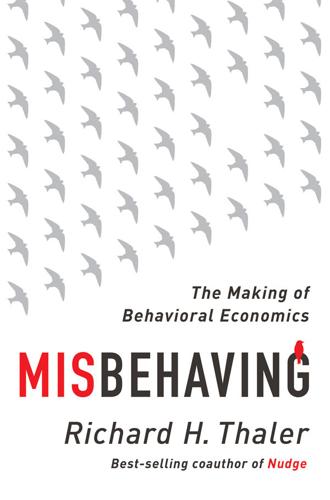
Misbehaving: The Making of Behavioral Economics
by
Richard H. Thaler
Published 10 May 2015
.”* Three graduate students who had met when they shared a suite during their first year as undergraduates—Brad De Long, Andrei Shleifer, and Robert Waldmann—joined Summers to produce a more rigorous, thorough, and polite version of the “idiots” paper. The model they proposed used closed-end funds as an example of the type of asset that their model might help understand, but they had not done any empirical testing. Charles and I thought we might be able to build on some of the work Charles had done for his term paper to fill in that gap, and we asked Andrei Shleifer, who had recently joined the faculty at the University of Chicago, to join us on this project.
…
“Golden Eggs and Hyperbolic Discounting.” Quarterly Journal of Economics 112, no. 2: 443–78. Lakonishok, Josef, Andrei Shleifer, and Robert W. Vishny. 1994. “Contrarian Investment, Extrapolation, and Risk.” Journal of Finance 49, no. 5: 1541–78. Lamont, Owen A., and Richard H. Thaler. 2003. “Can the Market Add and Subtract? Mispricing in Tech Stock Carve-Outs.” Journal of Political Economy 111, no. 2: 227–68. Landsberger, Michael. 1966. “Windfall Income and Consumption: Comment.” American Economic Review 56, no. 3: 534–40. Lee, Charles, Andrei Shleifer, and Richard H. Thaler. 1991. “Investor Sentiment and the Closed-End Fund Puzzle.”
…
These columns were lightly edited and published in book form with the title The Winner’s Curse (the title of one of the columns). I then wrote a few more on an occasional basis, though without the quarterly deadline, their appearances becoming increasingly irregular. The last appeared in 2006. Shortly thereafter, the column was officially retired. The editor of the journal at that time, Andrei Shleifer, declared that their purpose had been served. That was a polite way of saying that my job chronicling anomalies had ended. I was fired. ________________ * One of the joys of writing the Anomalies columns was that the editors themselves handled the refereeing process, and every paper also received true “editing” to make it intelligible for non-specialists.
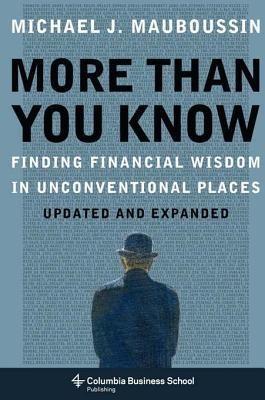
More Than You Know: Finding Financial Wisdom in Unconventional Places (Updated and Expanded)
by
Michael J. Mauboussin
Published 1 Jan 2006
So while understanding individual behavioral pitfalls may improve your own decision making, appreciation of the dynamics of the collective is key to outperforming the market. Behavioral-finance enthusiasts often fail to distinguish between the individual and the collective. Mug’s Game? Behavioral-finance experts understand the role of diversity in price formation. As Andrei Shleifer writes in his excellent book Inefficient Markets: An Introduction to Behavioral Finance:The efficient market hypothesis does not live or die by investor rationality. In many scenarios where some investors are not fully rational, markets are still predicted to be efficient. In one commonly discussed case, the irrational investors in the market trade randomly.
…
Mauboussin and Kristen Bartholdson, “Long Strange Trip: Thoughts on Stock Market Returns,” Credit Suisse First Boston Equity Research, January 9, 2003. 8 Benartzi and Thaler, “Myopic Loss Aversion,” 80. 9 James K. Glassman and Kevin A. Hassett, Dow 36,000: The New Strategy for Profiting from the Coming Rise in the Stock Market (New York: Times Books, 1999). 10 Josef Lakonishok, Andrei Shleifer, and Robert W. Vishny, “Contrarian Investment, Extrapolation, and Risk,” Journal of Finance 49, no. 5 (December 1994): 1541-78. 11 Bernstein, “Of Risk and Myopia.” 9. The Low Down on the Top Brass 1 Berkshire Hathaway Annual Letter to Shareholders, 1993, http://berkshire-hathaway. com/letters/1993.html. 2 Jim Collins, Good to Great (New York: HarperBusiness, 2001), 21. 3 Meghan Felicelli, “2006 YTD CEO Turnover,” SpencerStuart, December 31, 2006.
…
Bartholdi III, “Centralized Versus Decentralized Control in Manufacturing: Lessons from Social Insects,” in Complexity and Complex Systems in Industry, ed. Ian P. McCarthy and Thierry Rakotobe-Joel (Warwick: University of Warwick, 2000), 92-105; http://www2.isye.gatechedu/˜carl/papers/cc.pdf. 4 For a discussion about the limits of arbitrage, see Andrei Shleifer, Inefficient Markets: An Introduction to Behavioral Finance (Oxford: Oxford University Press, 2000). 5 Investors should also note that feedback operates at different levels. There can be feedback at the product level, the company level, and the market level. Sometimes these layers of feedback are correlated; at other times they’re not. 6 Sushil Bikhchandani and Sunil Sharma, “Herd Behavior in Financial Markets,” IMF Staff Paper 47, no. 3 (2001), http://www.imf.org/External/Pubs/FT/staffp/2001/01/pdf/bikhchan.pdf. 7 Sushil Bikhchandani, David Hirshleifer, and Ivo Welch, “Informational Cascades and Rational Herding: An Annotated Bibliography,” Working Paper: UCLA/Anderson and Michigan/GSB (June 1996). 8 Duncan J.

Irrational Exuberance: With a New Preface by the Author
by
Robert J. Shiller
Published 15 Feb 2000
If the description given was that the person was artistic and sensitive, they tended to choose conductor or sculptress, rather than laborer or secretary, disregarding entirely the fact that the former occupations are extremely rare and thus that the answers are much less likely to be right.18 It would be wiser, in answering such questions, almost never to guess the occupation conductor or sculptress, since the base rate probabilities are so low. But people look for the best-fit occupation, disregarding the base rate probabilities. Economists Nicholas Barberis, Andrei Shleifer, and Robert Vishny have developed the representativeness heuristic into a theory of investors’ selective overconfidence and into a psychological theory of an expectational feedback loop. These authors argue that investors, when they see stock prices move in the same direction for a while, gradually begin to assume that the trend is representative of many trends that they have seen in other economic data.
…
A number of studies of international data have provided evidence that countries with more highly developed financial markets show higher economic growth or allocate resources more efficiently. See Robert G. King and Ross Levine, “Finance and Growth: Schumpeter May Be Right,” Quarterly Journal of Economics, 108 (1993): 717–37; Rafael LaPorta, Florencio Lopez-de-Silanes, and Andrei Shleifer, “Corporate Ownership around the World,” Journal of Finance, 54 (1999): 471–518; and Jeffrey Wurgler, “Financial Markets and the Allocation of Capital,” unpublished paper, Yale University, 1999. 2. One study finds that individual investors tend to be less heavily invested in stocks during business cycle troughs, when expected returns tend to be high, while institutional investors tend to do the opposite, and hence to work in the direction of stabilizing the market.
…
See Meir Statman and Steven Thorley, “Overconfidence, Disposition, and Trading Volume,” unpublished paper, Santa Clara University, 1999. 17. Brad M. Barber and Terrance Odean, “Online Investors: Do the Slow Die First?” unpublished paper, University of California at Davis, 1999. 244 NOT ES TO PAGES 60–65 18. A psychological theory rationale for such feedback is offered by Nicholas Barberis, Andrei Shleifer, and Robert Vishny, “A Model of Investor Sentiment,” Journal of Financial Economics, 49 (1998): 307–43. 19. See John Y. Campbell and John H. Cochrane, “By Force of Habit: A Consumption-Based Explanation of Aggregate Stock Market Behavior,” Journal of Political Economy, 107(2) (1999): 205–51. 20.
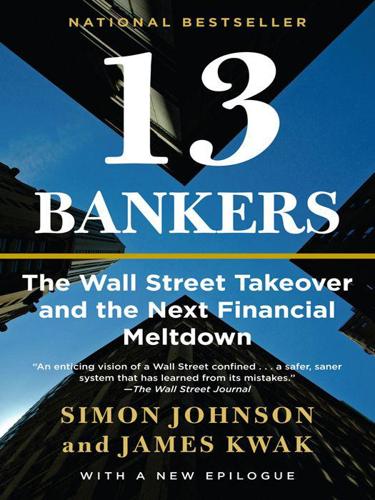
13 Bankers: The Wall Street Takeover and the Next Financial Meltdown
by
Simon Johnson
and
James Kwak
Published 29 Mar 2010
This belief reflects a general economic principle; given perfectly rational actors with perfect information and no externalities, all transactions should be beneficial for both parties. But few economists ever believed that these assumptions actually held in the real world. And over the next few decades, dozens of leading economists such as Joseph Stiglitz, Robert Shiller, and Larry Summers set about knocking holes in the Efficient Market Hypothesis.44 Brad DeLong, Andrei Shleifer, Summers, and Robert Waldmann created a model showing that “noise trading can lead to a large divergence between market prices and fundamental values.”45 Even Fischer Black (of Black-Scholes fame) agreed. At the 1985 meeting of the American Finance Association, he argued that it was impossible to differentiate between noise and information, and hence impossible to determine who was a noise trader and who was an information trader.
…
Claudia Goldin and Lawrence Katz have examined data on Harvard undergraduates and found that while only 5 percent of men in classes around 1970 were in finance fifteen years after graduation, that figure tripled to 15 percent for classes around 1990.79 The share of each class entering banking and finance careers grew from under 4 percent in the 1960s to 23 percent in recent years.80 At Princeton’s School of Engineering and Applied Science, “Operations Research and Financial Engineering” became the most popular undergraduate major.81 The banks thus became major beneficiaries of the American educational system. Whether society benefited is another question. Kevin Murphy, Andrei Shleifer, and Robert Vishny have argued that society benefits more when talented people become entrepreneurs who start companies and create real innovations than when they go into rent-seeking activities that redistribute rather than increase wealth.82 If this is true, then this diversion of talent to Wall Street constituted a real tax on economic growth over the last two decades.
…
Specific ways in which chaebol faced fewer financing constraints are explored in Hyun-Han Shin and Young S. Park, “Financing Constraints and Internal Capital Markets: Evidence from Korean Chaebols,” Journal of Corporate Finance 5 (1999): 169–91. 26. The extent to which families run businesses around the world is documented by Rafael La Porta, Florencio Lopez-de-Silanes, and Andrei Shleifer, “Corporate Ownership Around the World,” Journal of Finance 54 (1999): 471–517. For Asia, see Stijn Claessens, Simeon Djankov, and Larry H. P. Lang, “The Separation of Ownership and Control in East Asian Corporations,” Journal of Financial Economics 58 (2000): 81–112. For the prevalence of political connections between powerful businesspeople and government, see Mara Faccio, “Politically Connected Firms,” American Economic Review 96 (2006): 369–86.
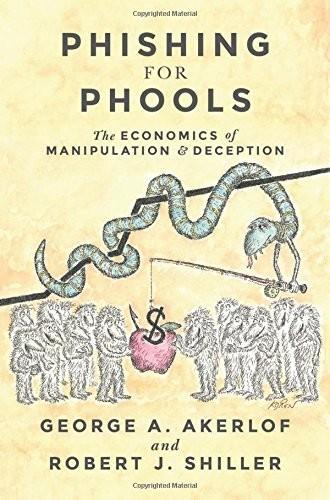
Phishing for Phools: The Economics of Manipulation and Deception
by
George A. Akerlof
,
Robert J. Shiller
and
Stanley B Resor Professor Of Economics Robert J Shiller
Published 21 Sep 2015
For business cycle dates, National Bureau of Economic Research, “U.S. Business Cycle Expansions and Contractions,” accessed January 13, 2015, http://www.nber.org/cycles.html. 3. Akerlof and Romer, “Looting.” 4. For use of the concept of “tunneling,” see Simon Johnson, Rafael La Porta, Florencio López de Silanes, and Andrei Shleifer, “Tunneling,” American Economic Review 90, no. 2 (May 2000): 22–27. 5. Council of Economic Advisors, Economic Report of the President 2013, table B-64, “Year-to-Year Inflation of the Consumer Price Index,” accessed December 1, 2014, http://www.whitehouse.gov/sites/default/files/docs/erp2013/full_2013_economic_report_of_the_president.pdf. 6.
…
Can’t Stomach,” New York Times, April 3, 1989, asserted that Milken had the highest one-year pay in US history. 28. See, for example, Michael C. Jensen, “Takeovers: Their Causes and Consequences,” Journal of Economic Perspectives 2, no. 1 (Winter 1988): 21–48. 29. This opposite side of the coin has been argued in Andrei Shleifer and Lawrence H. Summers, “Breach of Trust in Hostile Takeovers,” in Corporate Takeovers: Causes and Consequences, ed. Alan J. Auerbach (Chicago: University of Chicago Press, 1988), pp. 33–68. 30. Brian Hindo and Moira Herbst, “Personal Best Timeline, 1986: ‘Greed Is Good,’” BusinessWeek, http://www.bloomberg.com/ss/06/08/personalbest_timeline/source/7.htm. 31.
…
Bruck, The Predators’ Ball. 33. FDIC v. Milken, pp. 70–71. 34. Alison Leigh Cowan, “F.D.I.C. Backs Deal by Milken,” New York Times, March 10, 1992. 35. See Thomas Piketty, Capital in the Twenty-First Century (Cambridge, MA: Harvard University Press, 2014), p. 291, fig. 8.5, and p. 292, fig. 8.6. 36. Andrei Shleifer and Robert W. Vishny, “The Takeover Wave of the 1980s,” Science 249, no. 4970 (1990): 745–49. Chapter Eleven: The Resistance and Its Heroes 1. For 2013. World Bank, “Life Expectancy at Birth, Male (Years)” and “Life Expectancy at Birth, Female (Years),” accessed March 29, 2015, http://data.worldbank.org/indicator/SP.DYN.LE00.MA.IN/countries and http://data.worldbank.org/indicator/SP.DYN.LE00.FE.IN/countries. 2.
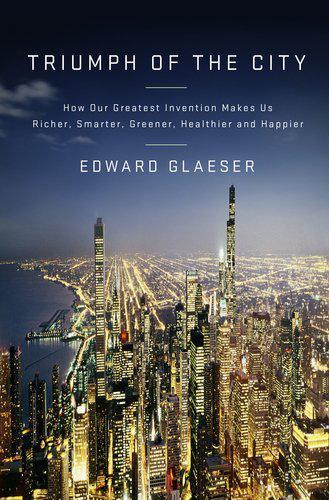
Triumph of the City: How Our Greatest Invention Makes Us Richer, Smarter, Greener, Healthier, and Happier
by
Edward L. Glaeser
Published 1 Jan 2011
I have been blessed by wonderful colleagues at Harvard who have taught me much about cities, including Alan Altshuler, John Campbell, David Cutler, Benjamin Friedman, Roland Fryer, Claudia Goldin, Tony Gomez-Ibanez, Lawrence Katz, and Andrei Shleifer. I am particularly indebted to John Kain and John Meyer, two great figures in the economics of cities who are sadly gone. Many of the ideas in this book were first expressed in academic articles that were coauthored with David Cutler, Denise DiPasquale, Glenn Ellison, Jess Gaspar, Joseph Gyourko, Matthew Kahn, Hedi Kallal, William Kerr, Janet Kohlhase, Jose Scheinkman, and Andrei Shleifer. Many of those articles have also been written with students and former students, including Alberto Ades, Guy Dumais, Joshua Gottlieb, Jed Kolko, David Mare, Matthew Resseger, Bruce Sacerdote, Albert Saiz, Jesse Shapiro, and Jacob Vigdor.
…
Many others were also enormously patient as I tried to get a feel of the world’s cities by walking their streets, and I apologize to those whom I have failed to thank by name. I am particularly grateful to those people who read the book and provided helpful comments: Joshua Gottlieb, Jesse Shapiro, Andrei Shleifer, Lawrence Summers, and Mitchell Weiss. Neil Levine helped me on the architectural history in the book. Stephen Greenblatt read the section on Shakespeare; his wisdom has been most helpful. The broader intellectual debts of this book are enormous. I have been profoundly influenced by my teachers, my colleagues, my coauthors, my students, and the many great urbanists whose work I have long admired.
…
Chicago: University of Chicago Press, 2006. Davey, Monica. “Detroit Mayor’s Tough Love Poses Risks in Election.” New York Times, Sept. 25, 2009. Davis, Heather Greenwood. “Dubai Hits the Heights Again: World’s Tallest Tower Goes over the Top with Luxury Complex.” Toronto Star, Jan. 7, 2010, Travel. de Long, J. Bradford, and Andrei Shleifer. “Princes and Merchants: European City Growth Before the Industrial Revolution.” Journal of Law and Economics 36 (Oct. 1993). DeNavas-Walt, Carmen, Bernadette D. Proctor, and Jessica C. Smith. U.S. Bureau of the Census, Current Population Reports, Income, Poverty, and Health Insurance Coverage in the United States: 2008, September 2009, Table 4: “People and Families in Poverty by Selected Characteristics: 2007 and 2008,” p. 14.
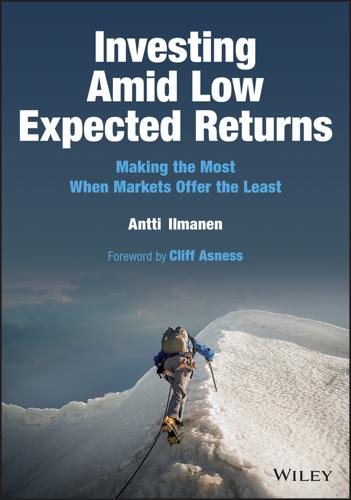
Investing Amid Low Expected Returns: Making the Most When Markets Offer the Least
by
Antti Ilmanen
Published 24 Feb 2022
Pedersen (2018), “Risk everywhere: Modeling and managing volatility,” Review of Financial Studies 31(7), 2729–2773. Bongaerts, Dion; Xiaowei Kang; and Mathijs A. van Dijk (2020), “Conditional volatility targeting,” Financial Analysts Journal 76(4), 54–71. Bordalo, Pedro; Nicola Gennaioli; and Andrei Shleifer (2013), “Salience and asset prices,” American Economic Review 103(3), 623–28. Bordalo, Pedro; Nicola Gennaioli; Rafael LaPorta; and Andrei Shleifer (2019), “Diagnostic expectations and stock returns,” Journal of Finance 74(6), 2839–2874. Borio, Claudio; Piti Disyatat; Mikael Juselius; and Phurichai Rungcharoenkitkul (2017), “Why so low for so long? A long-term view of real interest rates,” BIS working paper 685.
…
Gray, Wesley; and Tobias Carlisle (2012), Quantitative Value, Wiley. Green, Clifton; Ruoyan Huang; Quan Wen; and Dexin Zhou (2019), “Crowdsourced employer reviews and stock returns,” Journal of Financial Economics 134(1), 236–251. Greenwood, Robin M.; Samuel G. Hanson; Andrei Shleifer; and Jakob Sørensen, (2020), “Predictable financial crises,” NBER working paper 27396. Greenwood, Robin; and Andrei Shleifer (2014). “Expectations of returns and expected returns,” Review of Financial Studies 27(3), 714–746. Greenwood, Robin; Samuel G. Hanson; Joshua S. Rudolph; and Lawrence H. Summers (2014), “Government debt management at the zero lower bound,” Brookings Paper.
…
id=2978 Barberis, Nicholas; and Ming Huang (2008), “Stocks as lotteries: The implications of probability weighting for security prices,” American Economic Review 98, 2066–2100. Barberis, Nicholas; and Richard Thaler (2003), “A survey of behavioral finance,” in the Handbook of the Economics of Finance (Constantinides, G., Harris, M., Stulz, R. eds.), North Holland. Barberis, Nicholas; Andrei Shleifer; and Robert Vishny (1998), “A model of investor sentiment,” Journal of Financial Economics 49, 307–345. Barberis, Nicholas; Lawrence J. Jin; and Baolian Wang (2021), “Prospect theory and stock market anomalies,” Journal of Finance, forthcoming. Barroso, Pedro; and Pedro Santa-Clara (2015), “Momentum has its moments,” Journal of Financial Economics 116, 111–120.
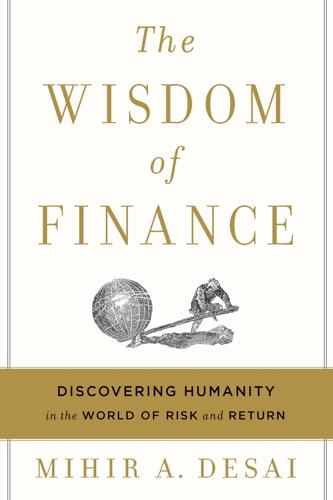
The Wisdom of Finance: Discovering Humanity in the World of Risk and Return
by
Mihir Desai
Published 22 May 2017
My colleagues in the Finance Unit at HBS have influenced my thinking in many ways, from seminars to teaching groups, and I am grateful to all of them. I was fortunate to be introduced to finance by a remarkable set of teachers, including Michael Edelson, Scott Mason, Dwight Crane, Andre Perold, Peter Tufano, John Campbell, Oliver Hart, and Andrei Shleifer. My academic mentors—Marty Feldstein, Michael Graetz, James R. Hines Jr., and Andrei Shleifer—have provided me with lasting models of scholarly integrity and ambition. I’ve been afforded incredible opportunities to interact with many thoughtful undergraduate, MBA, JD, doctoral, and executive education students. This book is a direct result of what they have taught me about these ideas and about teaching.
…
This might seem like a trivial matter because, obviously, they own their share in a company or a production and are therefore due their share of the profits. But The Producers captures an essential truth of finance—investors have few rights and usually have little knowledge of what actually is going on. So then the puzzle becomes, as economists Andrei Shleifer and Robert Vishny put it, why “suppliers of capital get anything back. After all, they part with their money and have little to contribute to the enterprise afterward. The professional managers and entrepreneurs who run the firms might as well abscond with the money.” In other words, why doesn’t capitalism collapse into an endless series of frauds?
…
Other sources cited in chapter 1 on moral hazard are excellent sources for corporate governance issues as well. An excellent textbook treatment of these issues is provided in Tirole, Jean. The Theory of Corporate Finance. Princeton, NJ: Princeton University Press, 2006. For an international perspective, see La Porta, Rafael, Florencio Lopez-De-Silanes, and Andrei Shleifer. “Corporate Ownership Around the World.” Journal of Finance 54, no. 2 (April 1999): 471–517. An exposition of venture capital securities is provided by Gompers, Paul A., and Joshua Lerner. The Venture Capital Cycle. Cambridge, MA: MIT Press, 1999. On the developments at Tootsie Roll, I draw on several journalistic accounts: Kesling, Ben.
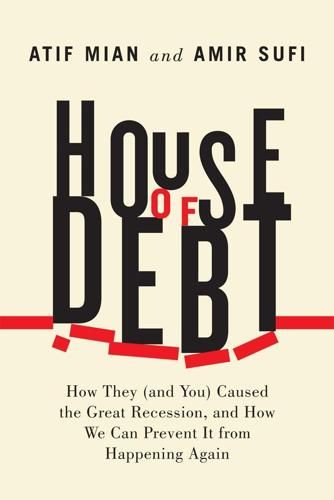
House of Debt: How They (And You) Caused the Great Recession, and How We Can Prevent It From Happening Again
by
Atif Mian
and
Amir Sufi
Published 11 May 2014
Figure 2.3 shows house prices over time in both types of states—the sharp relative decline in house prices in states not requiring a judicial foreclosure is clear.7 Using this difference across states, our research concludes that house prices declined by 1.9 percentage points for every 1 percent of home owners going into foreclosure between 2007 and 2009. Further, by pulling down house prices, foreclosures dampened consumption and home building. Debt-induced fire sales are not limited to the housing market. Andrei Shleifer and Robert Vishny emphasize the importance of fire sales following the leveraged-buyout wave of the late 1980s.8 In that episode, companies with extremely high leverage were forced to sell assets at steeply discounted prices, which then lowered the value of collateral for all businesses. John Geanakoplos has written extensively on the impact of fire sales.9 His work demonstrates how default means that an asset is transferred from someone for whom it’s worth a lot (the borrower) to someone for whom it’s worth much less (the lender).
…
They are sure that the underlying collateral protects them even when house prices inevitably decline. Debt leads to bubbles in part because it gives lenders a sense of security that they will be unaffected if the bubble bursts. But what if lenders are wrong? What if they are actually exposed to this risk? The answer is closely related to a phenomenon that Nicola Gennaioli, Andrei Shleifer, and Robert Vishny call “neglected risks.”11 They argue that certain unlikely events can materialize that are completely unexpected, because investors neglect the risks that they could happen. In the context of the housing crash, many investors may have neglected the risk of house prices falling more than 10 percent.
…
Another study using a different methodology found very similar results: Elliot Anenberg and Edward Kung, “Estimates of the Size and Source of Price Declines Due to Nearby Foreclosures” (working paper 2013-09, UCLA, January 11, 2013). They find the same channel: foreclosures push down nearby house prices by forcing them to sell below the price previously posted in the market. 8. Andrei Shleifer and Robert Vishny, “Liquidation Values and Debt Capacity: A Market Equilibrium Approach,” Journal of Finance 47 (1992): 1343–66. 9. John Geanakoplos, “The Leverage Cycle,” in NBER Macroeconomic Annual 2009, vol. 24, ed. Daron Acemoglu, Kenneth Rogoff, and Michael Woodford (Chicago: University of Chicago Press, 2010), 1–65. 10.
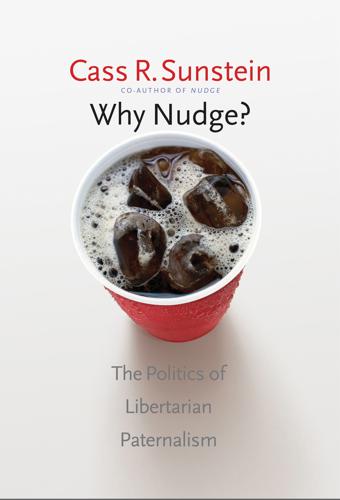
Why Nudge?: The Politics of Libertarian Paternalism
by
Cass R. Sunstein
Published 25 Mar 2014
WATCH 210, 212 (2013), available at http://econjwatch.org/articles/why-is-there-no-milton-friedman-today-RP. 11. See David Laibson, Golden Eggs and Hyperbolic Discounting, 112 Q.J. ECON. 443, 445 (1997). 12. For a discussion of some of the foundational issues, see Pedro Bordalo, Nicola Gennaioli & Andrei Shleifer, Salience Theory of Choice Under Risk, 127 Q.J. ECON. 1243 (2012); Pedro Bordalo, Nicola Gennaioli & Andrei Shleifer, Salience in Experimental Tests of the Endowment Effect, 102 AM. ECON. REV. 47 (2012). 13. See Ted O’Donoghue & Matthew Rabin, Choice and Procrastination, 116 Q.J. ECON. 121, 121–22 (2001); Richard H. Thaler & Shlomo Benartzi, Save More Tomorrow™: Using Behavioral Economics to Increase Employee Saving, 112 J.
…
See, e.g., http://99u.com/articles/6969/10-Online-Tools-for-Better-Attention-Focus; http://appsforhealthykids.com/; http://exercise.about.com/od/videosmusicsoftware/tp/fitnessapps.htm. 19. For valuable discussion, see IAN AYRES, CARROTS AND STICKS (2010). 20. See OREN BAR-GILL, SEDUCTION BY CONTRACT (2012). On the general point, see Andrei Shleifer, Psychologists at the Gate, 50 J. ECON. LITERATURE 1080 (2012). 21. See HEURISTICS: THE FOUNDATIONS OF ADAPTIVE BEHAVIOR (Gerd Gigerenzer et al. eds., 2011). 22. Michael Greenstone, Toward a Culture of Persistent Regulatory Experimentation and Evaluation, in NEW PERSPECTIVES ON REGULATION 111 (David Moss & John Cisternino eds., 2009).
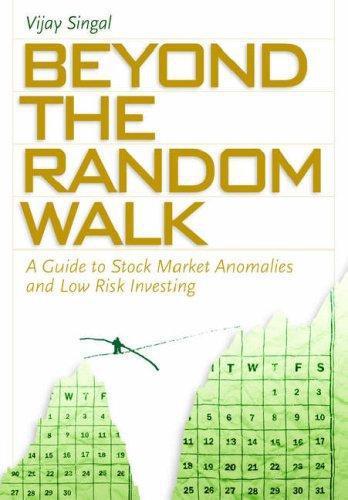
Beyond the Random Walk: A Guide to Stock Market Anomalies and Low Risk Investing
by
Vijay Singal
Published 15 Jun 2004
For example, Dimensional Fund Advisors, which manages more than $30 billion in assets, is associated with Eugene Fama of the University of Chicago, Ken French of Dartmouth College, and two of their former students, David Booth and Rex Sinquefield. LSV Asset Management, which manages about $8 billion, is owned by Josef Lakonishok of the University of Illinois, Andrei Shleifer of Harvard, and Robert Vishny of the University of Chicago. Long Term Capital Management, whose failure shook world financial markets in 1998 and which had to be rescued by a group of large banks prodded on by the Federal Reserve, was advised by Nobel laureates Robert Merton and Myron Scholes. 2 The January Effect and the New December Effect Small loser stocks are known to appreciate considerably in January, giving rise to the so-called January effect.
…
Haugen, Robert A., and Josef Lakonishok. 1988. The Incredible January Effect: The Stock Market’s Unsolved Mystery (Homewood, Ill.: Dow Jones–Irwin). Keim, Donald B. 1983. Size-Related Anomalies and Stock Return Seasonality: Further Empirical Evidence. Journal of Financial Economics 12, 13–32. Lakonishok, Josef, Andrei Shleifer, Richard Thaler, and Robert Vishny. 1991. Window Dressing by Pension Fund Managers. American Economic Review 81, 227–31. Poterba, James M., and Scott J. Weisbenner. 2001. Capital Gains Tax Rules, Tax-Loss Trading, and the Turn-of-the-Year Returns. Journal of Finance 56(1), 353–68. Reinganum, Mark. 1983.
…
Journal of Portfolio Management 11(4), 4–13. Arbel, Avner, and Paul Strebel. 1982. The Neglected and Small Firm Effects. Financial Review 17(4), 201–18. Barber, Brad M., and Terrance Odean. 2001. Boys Will Be Boys: Gender, Overconfidence, and Common Stock Investment. Quarterly Journal of Economics 116(1), 261–92. Barberis, Nicholas, Andrei Shleifer, and Robert Vishny. 1998. A Model of Investor Sentiment. Journal of Financial Economics 49(3), 307–43. Barsky, Robert B., and J. Bradford De Long. 1993. Why Does the Stock Market Fluctuate. Quarterly Journal of Economics 108(2), 291–311. Brav, Alon, and J. B. Heaton. 2002. Competing Theories of Financial Anomalies.
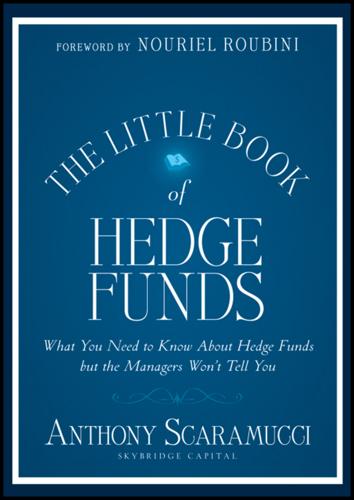
The Little Book of Hedge Funds
by
Anthony Scaramucci
Published 30 Apr 2012
We also believe that hedge fund investors will continue to commit capital to mortgage strategies to seek out uncorrelated return streams, improve portfolio diversification, and achieve high risk-adjusted returns. Chapter Six Ironing Out Inefficiencies Exploiting the Efficient Market Theory If the efficient markets hypothesis was a publicly traded security, its price would be enormously volatile. —Andrei Shleifer and Lawrence H. Summers, The Noise Trader Approach to Finance In 1990, Andrei Shleifer and Larry Summers mockingly made the comment that begins this chapter, adding that the “stock in the efficient markets hypothesis—at least as it has been traditionally formulated—crashed along with the rest of the market on October 19, 1987 . . . and its recovery has been less dramatic than that of the rest of the market.”1 Pretty fun for a pair of economists from Harvard, especially for one who would serve as President Clinton’s Secretary of the Treasury and President Obama’s Director of the White House National Economic Council.
…
Therefore I see two paths for hedge funds: Path 1 will be to remain nimble, opportunistic and compact, maximizing returns in periods of dislocation, and preserving capital during stress. Path 2 will be to grow larger by diversification into long only and hybrid products. The long only industry has pockets of excellence, but hedge funds competing in this space have good prospects to outperform. Notes 1. Andrei Shleifer and Lawrence Summers, “The Noise Trader Approach to Finance,” Journal of Economic Perspectives 4, no. 2 (Spring 1990), www.economics.harvard.edu/faculty/shleifer/files/noise_trader_approach_finance.pdf. Chapter Seven A Balancing Act Outperforming the Market while Taking Less Risk The secret to being successful from a trading perspective is to have an indefatigable and an undying and unquenchable thirst for information and knowledge.

Platform Revolution: How Networked Markets Are Transforming the Economy--And How to Make Them Work for You
by
Sangeet Paul Choudary
,
Marshall W. van Alstyne
and
Geoffrey G. Parker
Published 27 Mar 2016
But the existence of the phenomenon of regulatory capture is not necessarily a fatal blow to the argument in favor of regulation—or even the argument in favor of regulating platforms in particular. It’s possible to argue that, rather than eliminating regulation altogether, we need to design political, social, and economic systems that reduce the likelihood of regulatory capture—for example, through laws that restrict the “revolving door” between business and government. Economist Andrei Shleifer, a scholar in the areas of corporate governance and government regulation, points out that there are strong differences in the prevalence of regulatory capture across countries. When governments are relatively unchecked by their citizens, strong regulation often leads to high levels of corruption and expropriation by government officials.
…
Economist Simeon Djankov and colleagues have classified the range of possible regulatory regimes on a spectrum from private orderings (what we call private governance), through systems that rely on court rulings administered by independent judges or regulation by state employees, to direct government ownership of assets (socialism).17 Their visual depiction of this spectrum (Figure 11.1) reflects the tradeoff between social losses because of private misdeeds and social losses because of government misbehavior. Over the last two generations, as Andrei Shleifer has noted, most economists and political theorists have shifted from viewing government intervention in a positive light to preferring privatization.18 Today, there’s a trend toward regulation that was once provided by governments now being provided by private entities acting in their own self-interest—for example, the gradual shift from nationally mandated accounting standards like the Generally Accepted Accounting Principles used in the United States toward the International Financial Reporting Standards promulgated by the International Accounting Standards Board, a private organization based in London.
…
In fact, the winning bid was $503,300, but it is unclear whether anyone actually paid this amount. 16. Hillel Aron, “How eBay, Amazon and Alibaba Fuel the World’s Top Illegal Industry—The Counterfeit Products Market,” LA Weekly, December 3, 2014, http://www.laweekly.com/news/how-ebay-amazon-and-alibaba-fuel-the-worlds-top-illegal-industry-the-counterfeit-products-market-5261019. 17. Andrei Shleifer and Robert W. Vishny, “A Survey of Corporate Governance,” Journal of Finance 52, no. 2 (1997): 737–83, esp. 737. 18. Steve Denning, “The Dumbest Idea in the World: Maximizing Shareholder Value,” Forbes, November 28, 2011, http://www .forbes.com/sites/stevedenning/2011/11/28/maximizing-shareholder-value-the-dumbest-idea-in-the-world/. 19.
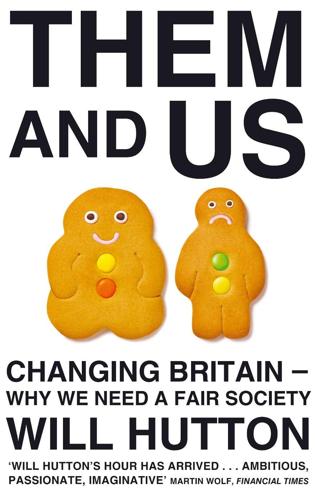
Them And Us: Politics, Greed And Inequality - Why We Need A Fair Society
by
Will Hutton
Published 30 Sep 2010
There is a distinction to be made between genuine entrepreneurship, invention and innovative leadership that create wealth, and being clever at capturing wealth that others have made and redistributing it to oneself – what economists call ‘rent’ or a return for inert property possession. Three leading theorists from Harvard and MIT – Kevin Murphy, Robert Vishny and Andrei Shleifer – argue in an important paper that countries in which talent pursues such rent-seeking activity rather than genuine entrepreneurship grow at a slower rate: ‘Pure entrepreneurial activities raise current income because resources are used more efficiently, contribute to growth because technology is improved, and take profits away from competitors.’19 Rent-seeking does the opposite.
…
One of the reasons that so many mergers and takeovers fail afterwards is that predator companies, when they assess the profitability of a hostile takeover, regard eliminating the network of promises, processes and implicit contracts on which most firms depend as a source of a quick win. They are wrong: these elements comprise the glue that holds the company together. Larry Summers and Andrei Shleifer have argued that this type of financial engineering is a form of economic vandalism – wrecking a firm’s social capital for unsustainable short-term cost advantage.28 However, you will look in vain in mainstream economics text-books for such understanding of flesh-and-blood markets peopled by flesh-and-blood economic actors.
…
See also Serge-Christophe Kolm and Jean Mercier Ythier (eds) (2006) The Handbook on the Economics of Giving, Reciprocity and Altruism, Elsevier, North-Holland. 16 Paul Burrows and Graham Loomes (1994) ‘The Impact of Fairness on Bargaining Behavior’, Empirical Economics 19: 201–21. 17 Elizabeth Hoffman and Matthew Spitzer (1985) ‘Entitlements, Rights, and Fairness: An Experimental Examination of Subjects’ Concepts of Distributive Justice’, Journal of Legal Studies 14: 259–97. 18 Bruno S. Frey and Werner W. Pommerehne (1993) ‘On the Fairness of Pricing – an Empirical Survey among the General Population’, Journal of Economic Behavior and Organisation 20: 295–307. 19 Kevin Murphy, Andrei Shleifer and Robert Vishny (1991) ‘The Allocation of Talent: Implications for Growth’, The Quarterly Journal of Economics 106 (2): 503–30. 20 See Israel M. Kirzner, ‘The Nature of Profits: Some Economic Insights and Their Ethical Implications’, in Robin Cowan and Mario J. Rizzo (eds) (1994) Profits and Morality, University of Chicago Press. 21 The New Economics Foundation (2010) ‘A Bit Rich’, paper. 22 Unpublished documents by the Fabian Society. 23 Michael Hanman and John Freeman (1989) Organisational Ecology, Harvard University Press. 24 Ove Arup, ‘The Key Speech’, at http://www.arup.com/Publications/The_Key_Speech.aspx. 25 John Spedam Lewis’s 1957 broadcast on the BBC, John Lewis website.
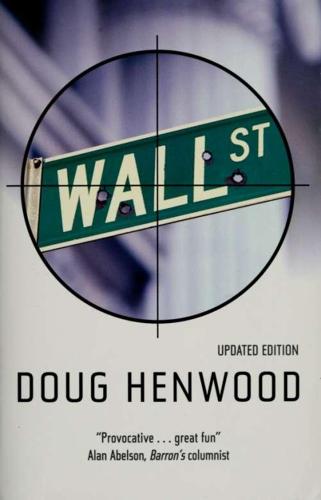
Wall Street: How It Works And for Whom
by
Doug Henwood
Published 30 Aug 1998
Other analysts have argued that while ^ is a weak explanation of real investment, changes in stock prices do a better job (Barro 1990). But it may be that the stock market is simply a leading indicator of the business cycle, responding quickly to changes in interest rates and central bank policy, rather than being the independent cause of anything. Randall Morck, Andrei Shleifer, and Robert Vishny (1990) found that over the period 1960-1987, the stock market explained very little of the change in real investment once fundamentals like sales and profit growth were controlled for — relations that held for the stock market and economy taken as a whole, and for individual firms examined in detail.^° Introducing external financing — new stock and debt issues — added a bit of explanatory power to their equations, but not much, with new debt doing a better job than equity.
…
In one study of 62 hostile takeover bids between 1984 and 1986, for example, an important target was lumber firms who were not cutting enough timber "given the interest rate, the growth rate of trees, and the price path for timber." The infamous Maxxam takeover of Pacific Lumber was inspired by fallow old redwoods that the latter wouldn't cut. Maxxam, powered by junk, took over Pacific Lumber and liquidated the trees. Thinking like economists, Sanjai Bhagat, Andrei Shleifer, and Robert Vishny (1990, p. 54), declared that "we have a case in which cutting the trees raises efficiency." And if trees are not sacrificed at the rate dictated by interest rates, then Wall Street is being cheated of free cash flow. Rising to a higher theoretical pitch in his early 1990s work, Jensen likened the "new LBO associations" — those with a KKR-like boutique at the center — to Japanese keiretsu, which are groups of associated firms with a large bank at their center (Jensen 1991).
…
Capital Ideas: The Improbable Origins of Modern Wall Street (New York: Free Press). Berthoud, Richard, and Elaine Kempson (1992). Credit and Debt: The PSI Report {London: Policy Studies Institute). Betker, Brian L. (1995). "Administrative Costs of Debt Restructurings," Ohio State University mimeo (May). Bhagat, Sanjai, Andrei Shleifer, and Robert W. Vishny (1990). "Hostile Takeovers in the 1980s: The Return to Corporate Specialization," Brookings Papers on Economic Activity: Microeconomics, pp. 1-85. Bilello, Suzanne (1992). "Free-Trade Pact Stirs Emotions," New York Newsday, August 7. Black, Fisher (1986). "Noise," Journal of Finance i\ (July), pp. 529-543.
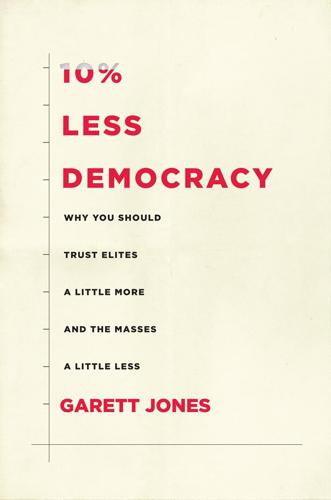
10% Less Democracy: Why You Should Trust Elites a Little More and the Masses a Little Less
by
Garett Jones
Published 4 Feb 2020
Ash and McLeod again: “We [compare] the performance of judges on the same court, making decisions in the same year, but selected under different systems.”¹⁰ Their overall conclusion, after running a variety of statistical checks: “We . . . find that compared to judges selected by voters, there is consistent evidence that judges selected by a merit commission are better at their jobs.”¹¹ Since merit commissions are the most common method of judicial appointment across the rich countries, it’s fair to say that in practice, appointed judges are better than democratically selected judges. An Economist’s Take on Less Democratic Judges Around the World Around the year 2000, a team of economists—Dartmouth’s Rafael La Porta, Yale’s Florencio Lopez-de-Silanes, Columbia’s Cristian Pop-Eleches, and Harvard’s Andrei Shleifer—took a serious look at the value of “judicial independence” as they called it.¹² Treating the nations of the world as separate laboratories, they checked to see if countries with judicial systems that were more independent from the political system had more of what they called “economic freedom,” which they defined as “security of property rights, the lightness of government regulation, and the modesty of state ownership.”
…
Jimmy Carter, Why Not the Best? The First 50 Years (Fayetteville: University of Arkansas Press, 1975). 10. Ash and McLeod, “Performance of Elected Officials,” 3. 11. Ash and McLeod, “Performance of Elected Officials,” 3. 12. Rafael La Porta, Florencio Lopez-de-Silanes, Cristian Pop-Eleches, and Andrei Shleifer, “Judicial Checks and Balances,” Journal of Political Economy 112, no. 2 (2004): 445–470. 13. La Porta et al., “Judicial Checks,” 457. 14. Michael Baldassare, “The Orange County Bankruptcy: Who’s Next?” Public Policy Institute of California research brief (April 1998). 15. Whalley, “Elected versus Appointed,” n. 7. 16.
…
“Central Bank Independence and Financial Instability.” Journal of Financial Stability 5, no. 4 (2009): 321–338. Kydland, Finn E., and Edward C. Prescott. “Time to Build and Aggregate Fluctuations.” Econometrica (1982): 1345–1370. La Porta, Rafael, Florencio Lopez-de-Silanes, Cristian Pop-Eleches, and Andrei Shleifer. “Judicial Checks and Balances.” Journal of Political Economy 112, no. 2 (2004): 445–470. Lee Kuan Yew. The Wit and Wisdom of Lee Kuan Yew. Singapore: Editions Didier Millet, 2013. Liow, Lee Hsiang, Mikael Fortelius, Ella Bingham, Kari Lintulaakso, Heikki Mannila, Larry Flynn, and Nils Chr.
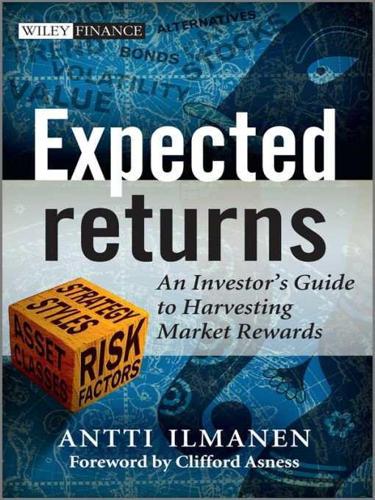
Expected Returns: An Investor's Guide to Harvesting Market Rewards
by
Antti Ilmanen
Published 4 Apr 2011
Barberis, Nicholas; and Ming Huang (2008), “Stocks as lotteries: The implications of probability weighting for security prices,” American Economic Review 98 (December), 2066–2100. Barberis, Nicholas; Ming Huang; and Tano Santos (2001), “Prospect theory and asset prices,” Quarterly Journal of Economics 116, 1–53. Barberis, Nicholas; and Andrei Shleifer (2003), “Style investing,” Journal of Financial Economics 68, 161–199. Barberis, Nicholas; Andrei Shleifer; and Robert Vishny (1998), “A model of investor sentiment,” Journal of Financial Economics 49, 307–345. Barberis, Nicholas; Andrei Shleifer; and Jeffrey Wurgler (2005), “Comovement,” Journal of Financial Economics 75, 283–317. Barberis, Nicholas; and Richard H. Thaler (2003), “A survey of behavioral finance,” in Handbook of the Economics of Finance (G.
…
Journal of Finance 64(4), 1889–1933. Lakonishok, Josef; Andrei Shleifer; and Robert W. Vishny (1994), “Contrarian investment, extrapolation, and risk,” Journal of Finance 49(5), 1541–1578. Lamont, Owen A.; and Richard H. Thaler (2003), “Can the market add and subtract? Mispricing in tech stock carve-outs,” Journal of Political Economy 111, 227–268. Lancetti, Sebastian; and David Nordquist (2008), “29 years of style investing in the US: The importance of sectors,” Global Quantitative Research Monograph, UBS Investment Research, July 9, 2008. La Porta, Rafael; Josef Lakonishok; Andrei Shleifer; and Robert Vishny (1997), “Good news for value stocks: Further evidence on market efficiency,” Journal of Finance 49, 1541–1578.
…
Bondarenko, Oleg (2007), “Variance trading and market price of variance,” University of Illinois working paper. Booth, David G.; and Eugene F. Fama (1992), “Diversification returns and asset contributions,” Financial Analysts Journal (May/June), 26–32. Bordalo, Pedro; Nicola Gennaioli; and Andrei Shleifer (2010), “Salience theory of choice under risk,” Harvard University working paper. Boston Consulting Group (2010), In Search of Stable Growth: Global Asset Management 2010, annual report, available at http://www.bcg.com/documents/file53448.pdf Boudoukh, Jacob; Roni Michaely; Matthew Richardson; and Michael R.
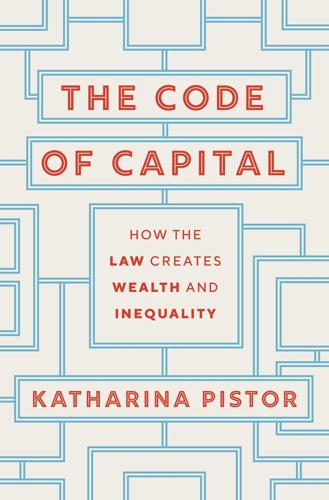
The Code of Capital: How the Law Creates Wealth and Inequality
by
Katharina Pistor
Published 27 May 2019
See Simeon Djankov, Edward Glaeser, Rafael La Porta, Florencio Lopez-de-Silanes, and Andrei Shleifer, “The New Comparative Economics,” Journal of Comparative Economics 31, no. 4 (2003):595–619. 25. Rafael La Porta, Francesco Lopez-de-Silanes, Andrei Shleifer, and Robert Vishny, “Law and Finance.” 26. In their tenth anniversary paper, the authors emphasize that their findings are not about growth, but about financial market development; put differently, they reflect greater value of private assets but not necessarily enhanced economic well-being across the board. See Rafael La Porta, Francesco Lopez-de-Silanes, and Andrei Shleifer, “The Economic Consequences of Legal Origin,” Journal of Economic Literature 46, no. 2 (2008):285–332. 27.
…
The free movement of goods, services and persons (including natural and legal persons) was established in the Treaty of Rome, which created the European common market, which later morphed into the European Communities. In 1992, the Maastricht Treaty created the European Union and extended the free movements to the free movement of capital. 52. Rafael La Porta, Florencio Lopez-de-Silanes, and Andrei Shleifer, “Corporate Ownership Around the World,” Journal of Finance 54, no. 2 (1999):471–517. 53. See also the discussion in chapter 2 about Kleros I, which was incorporated in the Cayman Islands. 54. See Michael Graetz, “Taxing International Income: Inadequate Principles, Outdated Concepts, and Unsatisfactory Policies,” in Follow the Money, ed.
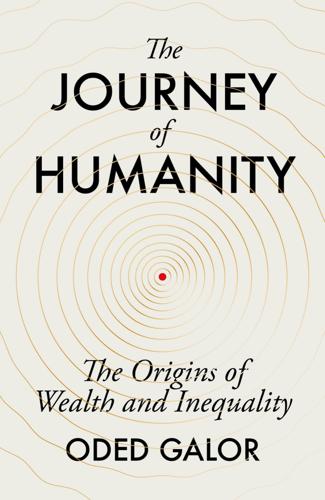
The Journey of Humanity: The Origins of Wealth and Inequality
by
Oded Galor
Published 22 Mar 2022
Giavazzi, Francesco, Ivan Petkov and Fabio Schiantarelli, ‘Culture: Persistence and Evolution’, Journal of Economic Growth 24, no. 2 (2019): 117–54. Gibbons, Ann, ‘How farming shaped Europeans’ immunity’, Science 373, no. 6560 (2021): 1186. Glaeser, Edward L., Rafael La Porta, Florencio Lopez-de-Silanes and Andrei Shleifer, ‘Do Institutions Cause Growth?’, Journal of Economic Growth 9, no. 3 (2004): 271–303. Glaeser, Edward L., and Andrei Shleifer, ‘Legal origins’, The Quarterly Journal of Economics 117, no. 4 (2002): 1193–229. Goldin, Claudia, ‘America’s graduation from high school: The evolution and spread of secondary schooling in the twentieth century’, The Journal of Economic History 58, no. 2 (1998): 345–74.
…
Kuhn, Thomas S., The Copernican Revolution: Planetary Astronomy in the Development of Western Thought, Vol. 16, Harvard University Press, 1957. Kuznets, Simon, ‘Quantitative Aspects of the Economic Growth of Nations: X. Level and Structure of Foreign Trade: Long-Term Trends’, Economic Development and Cultural Change 15, no. 2, Part 2 (1967): 1–140. La Porta, Rafael, Florencio Lopez-de-Silanes, Andrei Shleifer and Robert W. Vishny, ‘Legal Determinants of External Finance’, The Journal of Finance 52, no. 3 (1997): 1131–50. Lagerlöf, Nils-Petter, ‘Gender Equality and Long-run Growth’, Journal of Economic Growth 8, no. 4 (2003): 403–26. Lagerlöf, Nils-Petter, ‘The Galor–Weil model revisited: A quantitative exercise’, Review of Economic Dynamics 9, no. 1 (2006): 116–42.

Restarting the Future: How to Fix the Intangible Economy
by
Jonathan Haskel
and
Stian Westlake
Published 4 Apr 2022
Also of interest in this context is one of the many time-honoured strategies that equity investors have used to make their lives simpler: the strategy of value investing, pioneered by Benjamin Graham, who was Warren Buffett’s mentor. In its simplest form, value investing involves buying “value” stocks—those whose shares are worth less than their accounts would suggest—and selling their opposites, so-called “glamour” stocks. An important study by Josef Lakonishok, Andrei Shleifer, and Robert Vishny showed that between 1968 and 1989, for example, a strategy of mechanistically buying value stocks and selling glamour stocks would have earned a healthy return of 6.3 percent per year.19 This insight formed a major part of some of the most cited papers in financial economics, helped Eugene Fama win a Nobel Prize, and informed the strategies of innumerable investment funds.
…
Understanding Trends in Long Work Hours among U.S. Men, 1979–2004.” National Bureau of Economic Research working paper no. 11895. https://ideas.repec.org/p/nbr/nberwo/11895.html. Lachmann, Ludwig M. 1956. Capital and Its Structure. London: Bell and Sons. https://mises.org/library/capital-and-its-structure. Lakonishok, Josef, Andrei Shleifer, and Robert W. Vishny. 1994. “Contrarian Investment, Extrapolation, and Risk.” Journal of Finance 49 (5): 1541–78. https://doi.org/10.1111/j.1540-6261.1994.tb04772.x. Lall, Subir, and Li Zeng. 2020. “Intangible Investment and Low Inflation: A Framework and Some Evidence.” International Monetary Fund working paper no. 20/190. https://papers.ssrn.com/abstract=3695369.
…
Princeton, NJ: Princeton University Press. Philippon, Thomas. 2019. The Great Reversal: How America Gave Up on Free Markets. Cambridge, MA: Belknap Press of Harvard University Press. Piketty, Thomas. 2014. Capital in the Twenty-First Century. Cambridge, MA: Harvard University Press. Porta, Rafael La, Florencio Lopez-De-Silanes, Andrei Shleifer, and Robert W. Vishny. 1997. “Legal Determinants of External Finance.” Journal of Finance 52 (3): 1131. https://doi.org/10.2307/2329518. Posner, Eric, and E. Glen Weyl. 2018. Radical Markets: Uprooting Capitalism and Democracy for a Just Society. Princeton, NJ: Princeton University Press. Putnam, Robert. 1994.
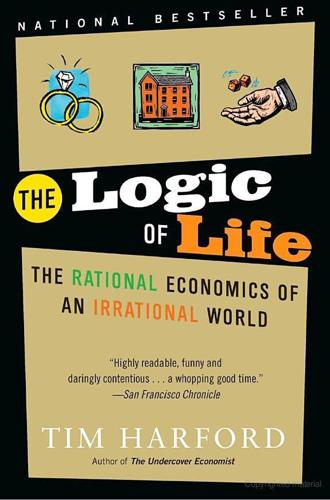
The Logic of Life: The Rational Economics of an Irrational World
by
Tim Harford
Published 1 Jan 2008
It seems to have been a common practice among our ancestors during the violence of the feudal government. Smith might also have mentioned the French, because France was rapidly becoming more absolutist at the time. One indication is the population of cities, which we know from chapter 7 is a sound guide to prosperity. Economists Bradford DeLong and Andrei Shleifer have used city populations to chart the effects of absolutism in political rule. In 1500, Paris was Europe’s largest city, and the great (and relatively free) Italian city-states of Naples, Milan, and Venice were the only other cities with populations over one hundred thousand. By 1800, London was almost twice as large as Paris, Amsterdam was doing well, and other cities under British rule, such as Dublin, Manchester, and Edinburgh, were rapidly growing.
…
“She was dissatisfied”: Jane Jacobs, The Economy of Cities, p. 51. The business guru Michael Porter: Michael Porter, “Clusters and the New Economics of Competition,” Harvard Business Review 76, no. 6 (November–December 1998): 77–90. A group of four economists: Edward L. Glaeser, Hedi D. Kallal, Jose A. Scheinkman, and Andrei Shleifer, “Growth in Cities,” Journal of Political Economy 100, no. 6(December 1992): 1126–52. Nor is this the only: Gianmarco Ottaviano and Giovanni Peri, “The Economic Value of Cultural Diversity: Evidence from US Cities,” NBER Working Paper 10904, November 2004, available at: ideas.repec.org/a/oup/jecgeo/v6y2006i1p9-44.html.
…
Allen, “The British Industrial Revolution in Global Perspective: How Commerce Created the Industrial Revolution and Modern Economic Growth,” unpublished paper, 2006. “In all countries”: Smith, The Wealth of Nations, book 2, chapter 30, pars. 30–32. Twelve of Europe’s fifty-six largest cities: J. Bradford DeLong and Andrei Shleifer, “Princes and Merchants: City Growth Before the Industrial Revolution,” Journal of Law and Economics 36 (October 1993): 671–702, econ161.berkeley.edu/pdf_files/Princes.pdf. Europe started to become decisively richer: Daron Acemoglu, Simon Johnson, and James Robinson, “The Rise of Europe: Atlantic Trade, Institutional Change, and Economic Growth,” American Economic Review 95, no. 3(June 2005): 546–79, econ-www.mit.edu/files/296.
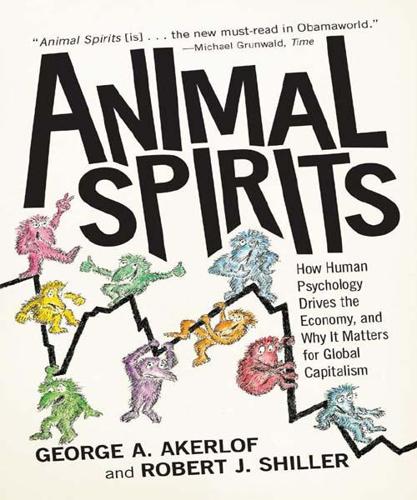
Animal Spirits: How Human Psychology Drives the Economy, and Why It Matters for Global Capitalism
by
George A. Akerlof
and
Robert J. Shiller
Published 1 Jan 2009
Morck, Randall, Andrei Shleifer, and Robert Vishny. 1990. “The Stock Market and Investment: Is the Market a Sideshow?” Brookings Papers on Economic Activity 2:157–215. Morgenson, Gretchen. 2008. “Everyone Out of the Security Pool.” New York Times, Sunday Business, November 16, p. BU-1. Morris, Stephen A., and Hyun Song Shin. 2004. “Liquidity Black Holes.” Review of Finance 8(1):1–18. ———. 2008. “Financial Regulation in a System Context.” Brookings Papers on Economic Activity 2. “Mr. Lodge on Finance.” 1908. New York Tribune, March 13, p. 3. Mullainathan, Sendhil, and Andrei Shleifer. 2005.
…
They maintain that the mere fact that the major event did not happen cannot be taken to mean that the market was irrational. Maybe they are right. One cannot decisively prove that the stock market has been irrational. But in all of this debate no one has offered any real evidence to think that the volatility is rational.6 The price changes appear instead to be correlated with social changes of various kinds. Andrei Shleifer and Sendhil Mullainathan have observed the changes in Merrill Lynch advertisements. Prior to the stock market bubble, in the early 1990s, Merrill Lynch was running advertisements showing a grandfather fishing with his grandson. The ad was captioned: “Maybe you should plan to grow rich slowly.”
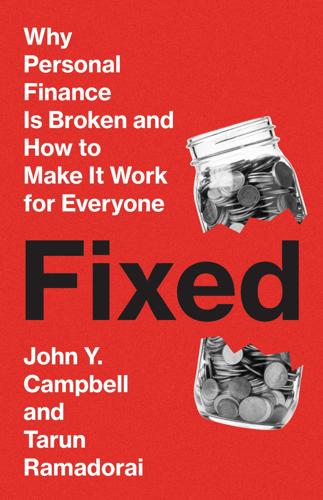
Fixed: Why Personal Finance is Broken and How to Make it Work for Everyone
by
John Y. Campbell
and
Tarun Ramadorai
Published 25 Jul 2025
See also Matthew Rabin, “Inference by believers in the law of small numbers,” Quarterly Journal of Economics 117 (2002): 775–816. 13. See Ulrike Malmendier and Stefan Nagel, “Depression babies: Do macroeconomic experiences affect risk taking?,” Quarterly Journal of Economics 126 (2011): 373–416. 14. See Pedro Bordalo, Nicola Gennaioli, and Andrei Shleifer, “Salience theory of choice under risk,” Quarterly Journal of Economics 127 (2012): 1243–1285. 15. Sarah Lichtenstein, Paul Slovic, Baruch Fischhoff, Mark Layman, and Barbara Combs, “Judged frequency of lethal events,” Journal of Experimental Psychology: Human Learning and Memory 4, no. 6 (1978): 551–578. 16.
…
Thaler, “Naive diversification strategies in defined contribution saving plans,” American Economic Review 91 (2001): 79–98; and Gur Huberman and Wei Jiang, “Offering versus choice in 401(k) plans: Equity exposure and number of funds,” Journal of Finance 61 (2006): 763–801, show that when more funds are offered in a given asset class or fund category, people tend to invest more in that asset class or category. Claire Célérier and Boris Vallée, “Catering to investors through security design: Headline rate and complexity,” Quarterly Journal of Economics 132 (2017): 1469–1508, discuss the high costs of complex structured investment products. 17. See Robin Greenwood and Andrei Shleifer, “Expectations of returns and expected returns,” Review of Financial Studies 27 (2014): 714–746. This tendency is reinforced by advertising and publicity devoted to stocks and mutual funds that have recently gone up. In China, for example, the Alipay screen that many retail investors use to purchase mutual funds lists funds in order of their performance during the past year.
…
For a warning that overzealous enforcement of digital identity requirements can result in exclusion of poor people from welfare benefits they are entitled to, see Karthik Muralidharan, Paul Niehaus, and Sandip Sukhtankar, “Balancing corruption and exclusion: Incorporating Aadhaar into PDS,” Ideas for India, April 17, 2020, https://www.ideasforindia.in/topics/poverty-inequality/balancing-corruption-and-exclusion-incorporating-aadhaar-into-pds.html. 2. Rafael La Porta, Florencio Lopez-de-Silanes, Andrei Shleifer, and Robert W. Vishny, “Law and finance,” Journal of Political Economy 106 (1998): 1113–1155. This is one of the most cited papers in all of modern economics. For a contrasting view, that financial innovation can compensate for weak legal protection of investors, see Philip T. Hoffman, Gilles Postel-Vinay, and Jean-Laurent Rosenthal, Dark Matter Credit: The Development of Peer-to-Peer Lending and Banking in France (Princeton University Press, 2019). 3.
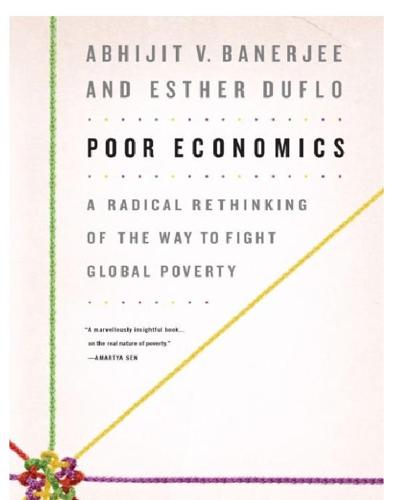
Poor Economics: A Radical Rethinking of the Way to Fight Global Poverty
by
Abhijit Banerjee
and
Esther Duflo
Published 25 Apr 2011
The point is that these vendors are sitting under what appears to be as close to a money tree as we are likely to find anywhere. Why don’t they shake it a bit more? How can we square this with the sophisticated financial planning that we encountered with Jennifer Auma? THE PSYCHOLOGY OF SAVINGS Understanding the way people think about the future can help resolve these apparent contradictions. Andrei Shleifer, probably the best exponent of the theory that many people sometimes do silly things (he coined, or at least popularized, the term “noise traders” to characterize the behavior of naïve stock traders who are ruthlessly exploited by sophisticated traders), who had just returned from Kenya, shared with us something that he had noticed there: a huge difference between the farms run by a group of nuns, which were lush and vibrant, and those run by their neighbors, which were much less impressive.
…
Our fathers, Dipak Banerjee and Michel Duflo, taught us the importance of getting the argument right. We do not always measure up to the exacting standard of precision they set for themselves, but we came to understand why it is the right standard. The genesis of this book was a conversation in 2005 with Andrei Shleifer, who was then editing the Journal of Economic Perspectives. He asked us to write something about the poor. While we were writing that piece, which was eventually called “The Economic Lives of the Poor,” we realized that this could be a way to bring together the many disparate facts and ideas that we have spent our lives trying to fathom.
…
However, we would still like to acknowledge Josh Angrist, Rukmini Banerji, Annie Duflo, Neelima Khetan, Michael Kremer, Andreu Mas Colell, Eric Maskin, Sendhil Mullainathan, Andy Newman, Rohini Pande, Thomas Piketty, and Emmanuel Saez, who, in their own individual ways, did more to shape the thoughts that went into this book than they probably realize. We hope that they are not entirely put off by the result. We benefited immensely from the comments of a number of people on earlier drafts of the book: Daniel Cohen, Angus Deaton, Pascaline Dupas, Nicholas Kristof, Greg Lewis, Patrick McNeal, Rohini Pande, Ian Parker, Somini Sengupta, Andrei Shleifer, and Kudzai Takavarasha. Emily Breza and Dominic Leggett read through every chapter several times and came up with important ways to improve the book. The book is immensely better for that, though probably not as good as they could have made it if we had been less impatient to get it done. Our editor at PublicAffairs, Clive Priddle, was wonderful to work with: The book came to life when he took charge.
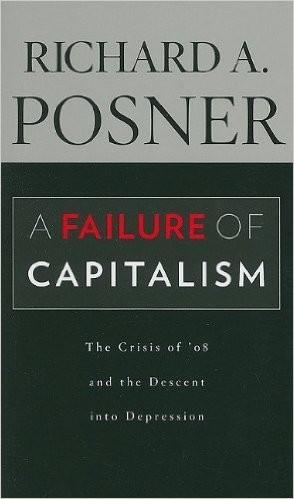
A Failure of Capitalism: The Crisis of '08 and the Descent Into Depression
by
Richard A. Posner
Published 30 Apr 2009
Lee Lockwood and Christian Opp carefully checked the manuscript for technical economic errors and in the process made valuable suggestions for improving the book. Michael Aronson, Douglas Baird, Larry Bernstein, Michael Boudin, Nathan Christensen, Kenneth Dam, Benjamin Friedman, Rebecca Haw, Ashley Keller, William Landes, Jonathan Lewinsohn, Jennifer Nou, Charlene Posner, Eric Posner, Kenneth Posner, Raghuram Rajan, Andrew Rosenfield, Andrei Shleifer, and Luigi Zingales gave me extremely helpful comments on a previous draft. Friedman's help with my project deserves a special acknowledgment. I also owe special thanks to Aronson, my editor at the Harvard University Press, for his encouragement and deft management of this project, as well as for many insightful comments.
…
Rajan, "Has Financial Development Made the World Riskier?" in The Greenspan Era: Lessons for the Future: A Symposium Spon- sored hy the Federal Reserve Bank of Kansas City (2005), 213. Robert J. Shiller, The Suhprime Solution: How To- day's Financial Crisis Happened, and What to Do about It (2008). Andrei Shleifer, Inefficient Markets: An Introduction to Behavioral Finance (2000). Mark Zandi, Financial Shock: A 5600 hmk at the Suhprime Mortgage Implosion, and How to Avoid the Next Financial Crisis (2008). Luigi Zingales, "The Future of Securities Regula- tion" (University of Chicago, Booth Graduate School of Business, Dec. 2008).
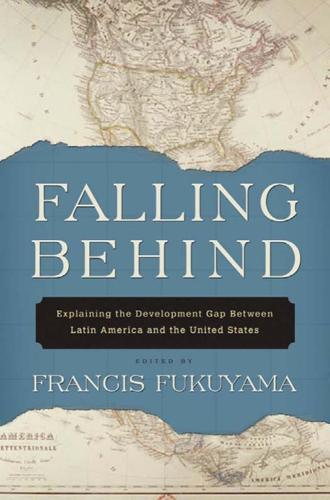
Falling Behind: Explaining the Development Gap Between Latin America and the United States
by
Francis Fukuyama
Published 1 Jan 2006
Specifically, “Third World countries are poor because the institutional constraints define a set of payoffs to political/economic activity that do not encourage productive activity.” See North, Institutions, Institutional Change, and Economic Performance (Cambridge: Cambridge University Press, 1990), p. 110. 5. On the importance of judicial systems, see Rafael La Porta, Florencio López de Silanes, Andrei Shleifer, and Robert M. Vishny, “Law and Finance,” Journal of Political Economy 106 (1998): 1113–1155. John H. Coatsworth and Gabriel Tortella Casares analyze the effect of the Spanish judicial system on the development of Spain and Mexico in their initial periods; see John H. Coatsworth and Gabriel Tortella Casares, Institutions and Long-Run Economic Performance in Mexico and Spain, 1800–2000, Working Paper 02/03-1 (Cambridge, MA: David Rockefeller Center for Latin American Studies, Harvard University, 2003).
…
Source: Polity IV Project on Political Regime Characteristics and Transitions, 1800–2004, Center for Global Policy, George Mason University and Center for International Development and Conflict Management, University of Maryland (dynamic dataset by subscription). 12 11 10 PAN PER JAM 9 CHL URY ARG MEX BRA VEN ECU DOM COL BOL 8 7 6 5 0 5 10 15 20 25 Number of Procedures to Create a Business figure 7.5 Log Gross Domestic Product (GDP) Per Capita (2004 Purchasing Power Parity) vs. Number of Procedures Needed to Create a Business. Source: Simeon Djankov, Rafael La Porta, Florencio López-de-Silanes, and Andrei Shleifer, “The Regulation of Entry,” in Quarterly Journal of Economics 117 (2002): 1–37. Log PPP GDP Per Capita in Constant 2000 USD 12 11 10 ARG MEX PAN DOM BRA COL VEN PER SLV PRY GTMECUGUY JAM NIC HND BOL 9 8 CRI URY CHL HTI 7 6 5 −3 −2.5 −2 −1.5 −1 −0.5 0 0.5 1 Rule of Law Index (World Bank) 1.5 2 2.5 figure 7.6 Log Gross Domestic Product (GDP) Per Capita (2004 Purchasing Power Parity) vs.
…
See, for example, Guido Tabellini, “Culture and Institutions: Economic Development in the Regions of Europe,” unpublished manuscript, Bocconi University, Milan, Italy, 2005. 24. Daron Acemoglu, Simon Johnson, and James A. Robinson, “Colonial Origins of Comparative Development: An Empirical Investigation,” American Economic Review 91 (2001): 1369–1401. 25. Simeon Djankov, Rafael La Porta, Florencio López-de-Silanes, and Andrei Shleifer, “The Regulation of Entry,” Quarterly Journal of Economics 117 (2001): 1–37. See also Hernando de Soto, The Other Path (New York: Harper & Row, 1989). 26. Acemoglu, Johnson, and Robinson, “Colonial Origins of Comparative Development.” 27. Alfred W. Crosby, Ecological Imperialism (New York: Cambridge University Press, 1986). 28.
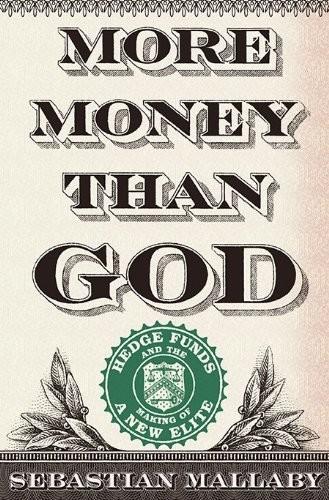
More Money Than God: Hedge Funds and the Making of a New Elite
by
Sebastian Mallaby
Published 9 Jun 2010
The crash of 1987 underlined these doubts: When the market’s valuation of corporate America changed by a fifth in a single trading day, it was hard to believe that the valuation deserved much deference. “If the efficient markets hypothesis was a publicly traded security, its price would be enormously volatile,” the Harvard economists Andrei Shleifer and Lawrence Summers wrote mockingly in 1990. “But the stock in the efficient markets hypothesis—at least as it has traditionally been formulated—crashed along with the rest of the market on October 19, 1987.”8 The acknowledgment of the limits to market efficiency had a profound effect on hedge funds.
…
After contributing to this literature, Asness headed off to Wall Street and soon opened his hedge fund. In similar fashion, the Nobel laureates Myron Scholes and Robert Merton, whose formula for pricing options grew out of the efficient-markets school, signed up with the hedge fund Long-Term Capital Management. Andrei Shleifer, the Harvard economist who had compared the efficient-market theory to a crashing stock, helped to create an investment company called LSV with two fellow finance professors. His coauthor, Lawrence Summers, made the most of a gap between stints as president of Harvard and economic adviser to President Obama to sign on with D.
…
They might know that Japan’s equity bubble—or the dot-com bubble or the mortgage bubble—makes no sense, but they cannot borrow enough to bet against it with the force that would deflate it. This is why there is a limit to the power of contrarians. It is why markets swing in trends and why finance is prone to bubbles. This insight—christened “the limits to arbitrage” by the economists Andrei Shleifer and Robert Vishny—points to an opportunity that Jones could sense intuitively. Markets can move away from fundamental value because speculators lack the muscle to challenge the consensus; a trend can keep going far beyond the point at which it ceases to be rational. But if you are a trader with more ammunition and courage than the rest, you can ambush the market and jolt it out of its sleepwalk.
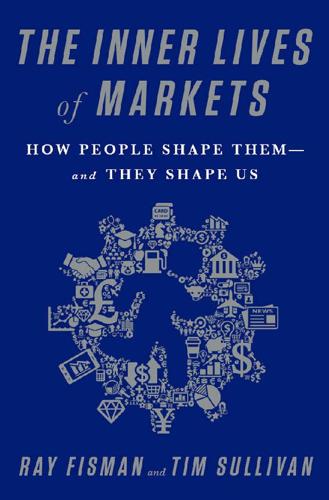
The Inner Lives of Markets: How People Shape Them—And They Shape Us
by
Tim Sullivan
Published 6 Jun 2016
Wall Street participants work harder to maximize their earnings, but in doing so, they end up poorer than the community players. This irony shows how the market, by undermining our concern for others and beliefs in the intentions of others, can end up shrinking rather than growing the economic pie. Competition Can Make Us Unethical In a 2004 essay, Harvard economist Andrei Shleifer speculated that competitive markets—the holy grail of free marketers—have the potential to make us not just selfish but downright unethical. As his point of departure, Shleifer presumes that ethical conduct is what economists call a normal good—something we consume more of as we get richer. (Ramen noodles, perennial staple of poor college students, are a classic example of an inferior good, where you consume less of it once you can afford not to.)7 The owners of a company with fat profit margins and an unassailable position in the marketplace—Google or Microsoft, for example—can afford to be honest and charitable.
…
Emily Pronin, Thomas Gilovich, and Lee Ross, “Objectivity in the Eye of the Beholder: Divergent Perceptions of Bias in Self versus Others,” Psychological Review 111, no. 3 (2004): 781. 6. The experiment was run with subjects drawn from the Israeli Defense Forces. For Hebrew-speaking subjects, the labels were the Bursa and Kommuna Games. 7. Andrei Shleifer, “Does Competition Destroy Ethical Behavior?” The American Economic Review 94, no. 2 (2004): 414. INDEX Abidjan, Ivory Coast, 167–168 Adfibs.com, 69 adverse selection, 48, 51–55, 57, 59 advertising, as money burning, 70–71 Super Bowl advertising, 70–71 AdWords, 14, 101 Airbnb, 3, 6, 50, 109, 125, 170–172 Akerlof, George, 43–51, 58–59, 64, 112 Alaskoil experiment, 55–57, 58–59 algebraic topology, 44–45 Amazon, 2, 3, 16, 50, 51, 52, 59, 74, 91, 95, 97, 108, 110, 119, 126, 128–129 American Express, 115–116 America’s Second Harvest, 154–160 Amoroso, Luigi, 21 Angie’s List, 120 “animal spirits,” 50 applied theory in economics, 45, 50, 75–76 Arnold, John, 156–158, 160 Arrow, Kenneth, 30–34, 36–37, 40, 76, 117, 180 ascending price English auctions, 83, 100 asymmetric information, 41, 44–55 attribution theory, 177–178 auctions AdWords, 14, 101 auction theory, 82–84 coat hooks, 151–152, 174 design, 14, 101–102 first-price sealed-bid, 86–87, 99–100 first-price (live), 84 internet, 94–97 types of, 81–82 wireless spectrum, 102–103 See also eBay; Vickrey auctions AuctionWeb, 40 Ausubel, Larry, 98 Azoulay, Pierre, 112 Bank of America, 113–115 barriers to entry, in marketplace, 173 baseball posting system, 79–81 Bazerman, Max, 55–57 Becker, Gary, 35, 161–162 Berman, Eli, 67 Berners-Lee, Tim, 41–42 Big Data, Age of, 15 Blu-ray-HD DVD format war, Sony, 125–126 Book Stacks Unlimited, 42–43 Boston public schools, 144–149 Boston University MBA students experiment (Bazerman and Samuelson), 55–57, 58–59 See also Alaskoil experiment bridge design, 141–142 Brown, William P., 83–84 Brownian motion, 28–29 cab drivers, Uber vs., 169–170, 172 Camp, Garrett, 170 candle auctions, 82 capitalism, free-market, 172–173 car service platform, 169–171 cash-back bonus, 116 cash-for-sludge transactions, 167–169 See also Summers, Larry centralized clearinghouses, 140–141 Champagne fairs, 105–106, 126–128 Changi POW camp, 175–177 Le Chatelier, Henry Louis, 29 Le Chatelier’s principle, 29 cheap talk, 62–66, 69 chess, difference between Cold War and, 26 See also poker, bluffing in child labor, 180 cigarettes, as currency in German POW camp, 8–9 Clarke, Edward, 93 Clavell, James, 175 clerkship offers, with federal judges, 140 coat hook, 151–152, 174 Codes of the Underworld (Gambetta), 68 Cold War, difference between chess and, 26 See also poker, bluffing in Collectible Supplies, 128–129 “College Admissions and the Stability of Marriage” (Gale and Shapley), 137 commitment, signs of, 62–63, 69–71, 72–75 community game, 178–179 competition models of, 35, 166, 172–173 platform, 124–126 unethical conduct with, 180–181 “Competition is for Losers” (Thiel), 173 competitive equilibrium, existence of, 29, 31–34, 36–37, 40, 45, 76 competitive markets, 35, 124–126, 172–174, 180–181 See also platforms competitive signaling, 70–71 congestion pricing model, 86, 94 constrained optimization, 85–86, 133 contractorsfromhell.com, 120 copycat competitors, 172–173 corporate philanthropy, 72–75 Cowles, Alfred, 25, 27 Cowles Commission for Research in Economics, 25, 27, 31, 134 “creative destruction,” 50 credit card platforms, 113–116, 123–124 criminal organizations, informational challenges of, 68 currency, at Stalag VII-A POW camp, 8–9 customer feedback, 52, 74–75 Davis, Harry, 154, 157 Debreu, Gérard, 20, 24, 25, 32–33, 36–37 decentralized match, 139–140 deferred acceptance algorithm, 137–141, 145–149 Delmonico, Frank, 164 descending price auctions, 81–82 design, auction, 14, 101–102 Digital Dealing (Hall), 94 Discover card, 115–116 distribution of income, 22 Domar, Evsey, 36–37 Dorosin, Neil, 142–144 Douglas Aircraft Company, 25 Dow, Bob, 1–2 Dow, Edna, 1–2 Drèze, Jacques, 85–86 dumping toxic waste, transactions for, 167–169 Dutch auctions, 81–82 dysfunction, market, 36, 75–77, 143 eBay adverse selection on, 51–55, 57 auction listings, 94–97 concerns on model for, 43, 46, 48 on seller motivation for giving to charities, 73–75 start of, 39–41 as two-sided market, 109, 119 e-commerce, 41–43, 52–55 “The Economic Organization of a P.O.W.
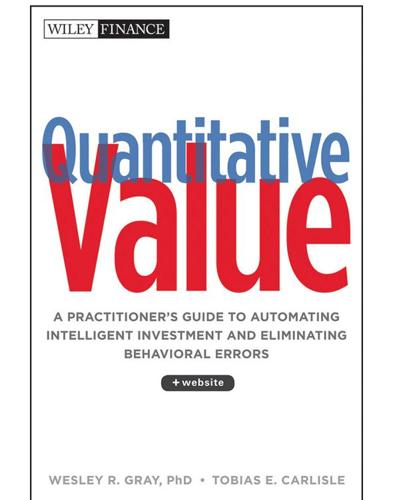
Quantitative Value: A Practitioner's Guide to Automating Intelligent Investment and Eliminating Behavioral Errors
by
Wesley R. Gray
and
Tobias E. Carlisle
Published 29 Nov 2012
In this instance, risk is defined as the additional volatility of the value stocks. Prolific finance researchers and founders of modern quantitative asset management analysis Eugene Fama and Ken French made this argument most forcefully in their 1992 paper, “The Cross-Section of Expected Stock Returns.” Behavioral finance researchers Joseph Lakonishok, Andrei Shleifer, and Robert Vishny argue in their 1994 paper, “Contrarian Investment, Extrapolation, and Risk,”25 that value strategies produce better returns, not because they are fundamentally riskier, but because they are contrarian to the “naïve” strategies followed by other investors. Naïve investors extrapolate poor earnings performance too far into the future, assume a downward trend in stock prices will persist or simply overreact to bad news, leading them to oversell stocks to the point that they are undervalued.
…
Further, if one metric underperforms for an extended period, the other two might counter its influence. CHAPTER 7 Price Ratios: A Horse Race Value strategies yield higher returns because these strategies exploit suboptimal behavior of the typical investor and not because these strategies are fundamentally riskier. —Josef Lakonishok, Andrei Shleifer, and Robert Vishny, “Contrarian Investment, Extrapolation, and Risk”1 The empirical evidence is unqualified: value stocks have beaten both glamour stocks and the market over the long term. This raises two obvious questions: (1) why would anyone buy glamour stocks, and (2) which measure of value has generated the best returns?
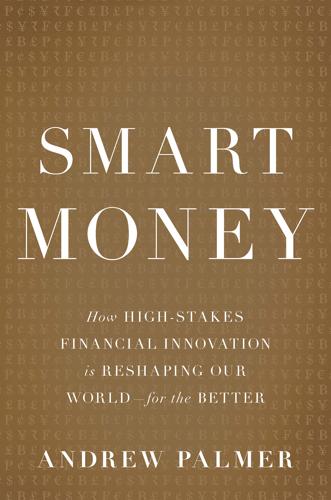
Smart Money: How High-Stakes Financial Innovation Is Reshaping Our WorldÑFor the Better
by
Andrew Palmer
Published 13 Apr 2015
“I don’t think we should celebrate speedy growth in new areas,” says one of the most senior figures on Wall Street. “Growth on a rapid scale means either a brilliant discovery or a mistake: history suggests it is likely to be a mistake.” One of the most thought-provoking academic papers to come out of the 2007–2008 financial crisis is a study by Nicola Gennaioli of Pompeu Fabra University, Andrei Shleifer of Harvard University, and Robert Vishny of the University of Chicago, called “Neglected Risks, Financial Innovation and Financial Fragility.” It suffers the usual curses of the economic paper: a crushingly formulaic structure and an enormous amount of algebra. In its very broad outlines, it describes a process of financial euphoria leading to fragility and then crisis that is familiar from the works of economists like Hyman Minsky.
…
Peter Tufano, “Financial Innovation and First-Mover Advantages,” Journal of Financial Economics (1989); Peter Tufano, “Financial Innovation,” Handbook of the Economics of Finance (2003). 5. “The Dojima Rice Market and the Origins of Futures Trading” (Harvard Business School Case Study, November 2010). 6. Minos Zombanakis, “The Life and Good Times of Libor,” Financial World (June 2012). 7. Nicola Gennaioli, Andrei Shleifer, and Robert Vishny, “Neglected Risks, Financial Innovation and Financial Fragility,” Journal of Financial Economics (2012). 8. “Financial Globalisation: Retreat or Reset?” (McKinsey Global Institute, February 2013). 9. Marcin Kasperczyk and Philipp Schnabl, “How Safe Are Money Market Funds?
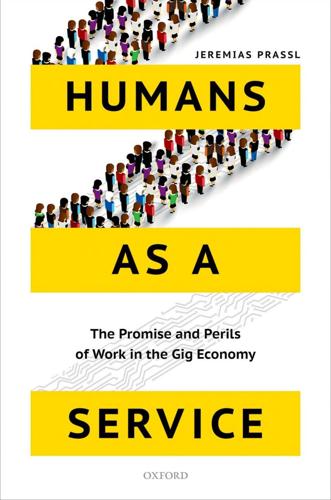
Humans as a Service: The Promise and Perils of Work in the Gig Economy
by
Jeremias Prassl
Published 7 May 2018
This is neither the time nor place to delve into arcane public finance design questions—but, as I have argued elsewhere with my Oxford colleagues Professors Abi Adams and Judith Freedman, any solution focused on employment law alone will not gain traction unless the underlying fiscal incentives are equally balanced.56 Portable Ratings Another problem that current labour standards fail to address is the power that algorithmic ratings have in tying workers into particular platforms: as long as better work and higher pay are limited to workers with high ratings, individuals will struggle to diversify their crowdwork portfolio and end up tied into one company’s ecosystem. A system of portable ratings would empower workers to follow up grievances and negotiate for better condi- tions—or to move on to a different platform. European Union law provides some interesting pointers as to how such a system could be designed. In a famous 1988 paper, Andrei Shleifer and Lawrence Summers argued that hostile takeovers expropriated value by breaching trust between * * * 112 Disrupting the Disruptors incumbent management and their employees—that is, by allowing the new shareholders to seize workers’ long-term investment in firm-specific human capital on the implicit understanding that they would receive a fair share in the resulting economic gains.57 Platforms’ rating mechanisms expose work- ers to similar dangers: carefully built-up scores can become worthless over- night when a platform’s business model changes or the user is deactivated.
…
Another major set of concerns relates to the enforcement of gig-economy workers’ rights—that is, that low claim values can dramatically reduce incentives to litigate: Abi Adams and Jeremias Prassl, ‘Vexatious claims: challenging the case for employment tribunal fees’ (2017) 80(2) Modern Law Review 412. 57. Andrei Shleifer and Lawrence Summers, ‘Breach of trust in hostile takeovers’ (1987) NBER Working Paper No. 2342. 58. For a detailed discussion, see Bob Hepple, ‘Workers’ rights in mergers and take- overs: the EEC proposals’ (1976) 5(1) Industrial Law Journal 197. 59. Regulation (EU) 2016/679 of the European Parliament and of the Council of 27 April 2016 on the protection of natural persons with regard to the processing of personal data and on the free movement of such data, and repealing Directive 95/46/EC (General Data Protection Regulation) [2016] OJ L119/1, Art. 20(1).

Competition Overdose: How Free Market Mythology Transformed Us From Citizen Kings to Market Servants
by
Maurice E. Stucke
and
Ariel Ezrachi
Published 14 May 2020
News & World Report, September 9, 2018, https://www.usnews.com/education/best-colleges/articles/how-us-news-calculated-the-rankings. 89.Robert H. Frank, The Darwin Economy: Liberty, Competition, and the Common Good (Princeton University Press 2011) 16, 138. 90.Abhijit Vinayak Banerjee, “Inside the Machine: Toward a New Development Economics,” Boston Review 32, no. 2 (2007), http://bostonreview.net/abhijit-vinayak-banjeree. 91.Andrei Shleifer, “Does Competition Destroy Ethical Behavior?,” American Economic Review 94, no. 2 (May 2004): 414–16, https://doi.org/10.1257/0002828041301498 (discussing how competition can help spread child labor, corruption and bribery of government officials to reduce the amount companies owe in tariffs and taxes, excessive executive pay, manipulated earnings to lower corporations’ cost of capital, and the involvement of universities in commercial activities). 92.Maurice E.
…
Chapter 7: The Privatizers: When in Doubt, Privatize! 1.Adrian T. Moore, Private Prisons: Quality Corrections at a Lower Cost (Los Angeles, CA: Reason Public Policy Institute, Policy Study No. 240, 1999), https://reason.org/wp-content/uploads/files/d14ffa18290a9aeb969d1a6c1a9ff935.pdf. 2.Oliver Hart, Andrei Shleifer, and Robert W. Vishny, “The Proper Scope of Government: Theory and an Application to Prisons,” Quarterly Journal of Economics 112, no. 4 (November 1997): 1127–61, https://doi.org/10.1162/003355300555448. 3.Invoking the competition ideology, and money savings, in the context of prisons has a long—and dishonorable—history.
…
Rose Acre Farms, Inc., 881 F.2d 1396, 1402 (7th Cir. 1989). 25.Ball Memorial Hospital, Inc. v. Mutual Hospital Insurance, Inc., 784 F.2d 1325, 1338 (7th Cir. 1986). 26.Kumpf v. Steinhaus, 779 F.2d 1323, 1326 (7th Cir. 1985). 27.Justin Fox, The Myth of the Rational Market: A History of Risk, Reward, and Delusion on Wall Street (New York: Harper Business, 2009), 192; Andrei Shleifer, Inefficient Markets: An Introduction to Behavioral Finance (New York: Oxford University Press, 2000), 2–5. 28.Joseph Ratzinger Benedict XVI, “Church and Economy: Responsibility for the Future of the World Economy,” Communio International Catholic Review 13, no. 3 (Fall 1986): 199, 200, https://www.communio-icr.com/files/ratzinger13-3.pdf. 29.Robert H.
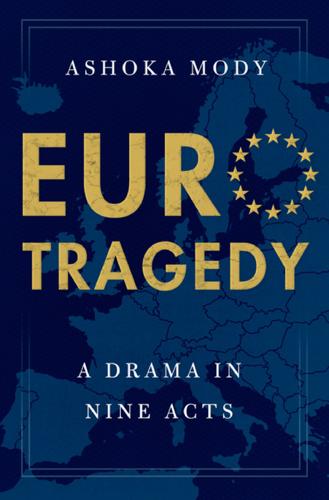
EuroTragedy: A Drama in Nine Acts
by
Ashoka Mody
Published 7 May 2018
A 1990 study by the Paris-based Organisation for Economic Co-operation and Development (OECD) reported that the Italian government’s industrial subsidy bill was 16 percent of manufacturing value-added, the highest among OECD economies, matched only by similarly generous Greek subsidies.246 Corruption did decline somewhat in the 1990s, as popular demand for greater government accountability and judicial prosecution of corrupt politicians weakened the Christian Democratic Party’s grip on power. However, as economists Andrei Shleifer and Robert Vishny explain, once corruption is widespread, it is hard to roll back.247 In Italy, political scientist 1400 1200 1000 800 600 400 200 0 1970 72 74 76 78 80 82 84 86 88 90 92 94 96 98 Figure 2.7. The depreciating lira. (Number of liras for one D-mark) Source: Banca d’Italia. https://tassidicambio.bancaditalia.it/timeSeries. 118 e u r o t r a g e d y Sergio Fabbrini says, “the institutional structure shaped by half a century of cartel politics” proved “sticky.”248 There was little incentive to shine “light in dark corners,” and the networks of political corruption kept reproducing and evolving.249 Similarly, Judt writes, “In the 1950s, large-scale corruption was a near-monopoly of Christian Democrats; in later decades the Socialists who governed the great cities of the North emulated them with considerable success.”250 Through the 1990s, the international watchdog Transparency International ranked Italy the most corrupt Western market economy.251 Italians remained unable to establish a consensus for investing in their country’s future.
…
Papandreou- style populism inevitably carried on; the networks of entitlement were so entrenched that it was easier for the New Democracy government to align itself with and participate in those networks rather than try to buck them.50 Greece was in a high-corruption, low-productivity trap. Economists Kevin Murphy, Andrei Shleifer, and Robert Vishny explain that once the extent of corruption exceeds a threshold, the incentives and institutions to counteract corruption weaken.51 While corruption offers easy rewards, the expected returns from risky long-term investments stay low because corrupt officials might expropriate hard-earned gains.
…
Hans-Böckler-Stiftung Working Paper 179, May. Geertz, Clifford. 1963. Agricultural Involution: The Processes of Ecological Change in Indonesia. Berkeley: University of California Press. Geithner, Timothy F. 2014. Stress Test: Reflections on Financial Crises. New York: Crown/Archetype. Kindle edition. Gennaioli, Nicola, Andrei Shleifer, and Robert Vishny. 2014. “Finance and the Preservation of Wealth.” Quarterly Journal of Economics 129, no. 3: 1221–1254. German Federal Constitutional Court (Bundesverfassungsgericht). 1993. “Judgment on the Maastricht Treaty,” October 12. Full text in German reported in Official Court Reports [BVerfGE] 89, 155.
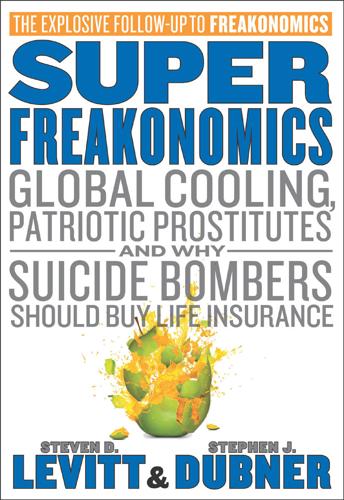
SuperFreakonomics
by
Steven D. Levitt
and
Stephen J. Dubner
Published 19 Oct 2009
He argued, for instance, that the same person who might be purely selfish in business could be exceedingly altruistic among people he knew—although, importantly (Becker is an economist, after all), he predicted that altruism even within a family would have a strategic element. Years later, the economists Doug Bernheim, Andrei Shleifer, and Larry Summers empirically demonstrated Becker’s point. Using data from a U.S. government longitudinal study, they showed that an elderly parent in a retirement home is more likely to be visited by his grown children if they are expecting a sizable inheritance. But wait, you say: maybe the offspring of wealthy families are simply more caring toward their elderly parents?
…
Levitt, “The Effect of Prison Population Size on Crime Rates: Evidence from Prison Overcrowding Litigation,” The Quarterly Journal of Economics 11, no. 2 (May 1996). FAMILY ALTRUISM?: See Gary Becker, “Altruism in the Family and Selfishness in the Marketplace,” Economica 48, no. 189, New Series (February 1981); and B. Douglas Bernheim, Andrei Shleifer, and Lawrence H. Summers, “The Strategic Bequest Motive,” Journal of Political Economy 93, no. 6 (December 1985). AMERICANS ARE FAMOUSLY ALTRUISTIC: These figures are drawn from an Indiana University Center on Philanthropy study. From 1996 to 2006, overall American giving increased from $139 billion to $295 billion (inflation-adjusted), which represents an increase from 1.7% of GDP to 2.6% of GDP.
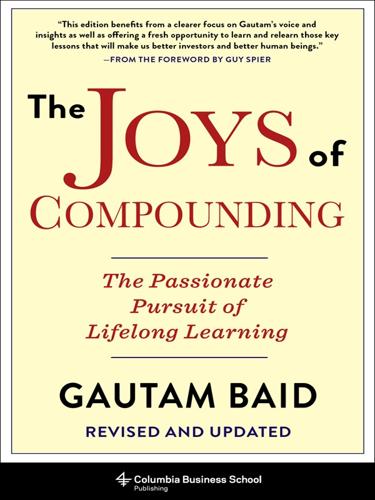
The Joys of Compounding: The Passionate Pursuit of Lifelong Learning, Revised and Updated
by
Gautam Baid
Published 1 Jun 2020
They found, on average, that the stocks these investors bought underperformed the market by 2.7 percentage points over the subsequent year, whereas the stocks they sold outperformed the market by 0.5 points in the subsequent year.11 Similarly, in a paper published by the Brookings Institution, economists Josef Lakonishok, Andrei Shleifer, and Robert Vishny showed that the stock trades made by pension fund managers subtracted 0.78 percent from the returns they would have earned by keeping their portfolios constant.12 When we trade excessively, the only people who become rich are the intermediaries and brokers. Consider a startling calculation to open your eyes to this fact.
…
Gaither and Alma E Cavazos-Gaither, Mathematically Speaking: A Dictionary of Quotations (Boca Raton, FL: CRC Press, 1998). 11. Brad M. Barber and Terrance Odean,” Why Do Investors Trade Too Much?” (research summary, University of California Davis Graduate School of Management, Davis, CA, 2006), https://www.safalniveshak.com/wp-content/uploads/2012/07/Why-Do-Investors-Trade-Too-Much.pdf. 12. Josef Lakonishok, Andrei Shleifer, and Robert Vishny, “The Structure and Performance of the Money Management Industry,” Brookings Papers: Macroeconomics 1992, https://scholar.harvard.edu/files/shleifer/files/structure_performance.pdf. 13. Graham and Zweig, The Intelligent Investor. 14. Sheeraz Raza, “Munger Quotes,” ValueWalk, April 4, 2016, https://www.valuewalk.com/2016/04/charlie-munger-quotes-2. 32.
…
McKinsey & Company, April 2010. https://www.mckinsey.com/business-functions/strategy-and-corporate-finance/our-insights/why-value-value-and-defending-against-crises. Koller, Tim, Marc Goedhard, and David Wessels. Valuation: Measuring and Managing the Value of Companies, 6th ed. Hoboken, NJ: Wiley, 2015. Kurzweil, Ray. The Singularity Is Near: When Humans Transcend Biology. London: Penguin, 2006. Lakonishok, Josef, Andrei Shleifer, and Robert Vishny. “The Structure and Performance of the Money Management Industry.” Brookings Papers: Macroeconomics 1992. https://scholar.harvard.edu/files/shleifer/files/structure_performance.pdf. Latimore, Ed (@EdLatimore). Twitter, April 15, 2018. https://twitter.com/EdLatimore/status/1156550021363486721.
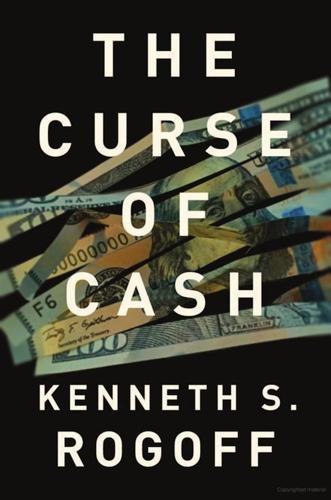
The Curse of Cash
by
Kenneth S Rogoff
Published 29 Aug 2016
Overall GDP is similar to that of the United States, but the share of Europe’s shadow economy is more than double; a rough estimate for the absolute size of the Eurozone underground economy would be $3 trillion. Obviously, including illegal activities (e.g., the drug trade) would increase these measures considerably. The measures of the size of the underground economy in figure 5.1 are broadly consistent with those in other recent studies, including by Rafael La Porta and Andrei Shleifer.17 They look at a variety of indicators, finding, for example, that for the upper quartile of countries by income, electricity consumption in the informal (underground) economy averages 17.6% of total electricity consumption. La Porta and Shleifer also look at such measures as self-employment, because the self-employed are more likely to underreport income.
…
Landefeld, Steven J., Eugene F. Seskin, and Barbara M. Fraumeni. 2008. “Taking the Pulse of the Economy: Measuring GDP.” Journal of Political Economy 22 (2): 193–216. Landes, David. 1999. The Wealth and Poverty of Nations: Why Some Are So Rich and Some Are So Poor. New York: W. W. Norton and Co. La Porta, Rafael, and Andrei Shleifer. 2014. “Informality and Development.” Journal of Economic Perspectives 28 (3): 109–26. Lebow, David E. 1993. “Monetary Policy at Near Zero Interest Rates.” Federal Reserve Board, Division of Research and Statistics Working Paper 136 (July). Washington, DC. Leeper, Eric. 1991. “Equilibria under Active and Passive Monetary and Fiscal Policies.”
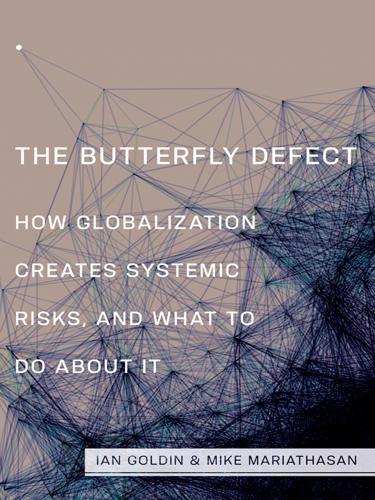
The Butterfly Defect: How Globalization Creates Systemic Risks, and What to Do About It
by
Ian Goldin
and
Mike Mariathasan
Published 15 Mar 2014
A tail risk is the risk that a relatively large loss will emerge toward the end of a transaction, when relatively few loans remain in the securitization pool. 25. Markus K. Brunnermeier, 2008, “Deciphering the Liquidity and Credit Crunch, 2007–08,” NBER Working Paper 14612, National Bureau of Economic Research, Cambridge, MA, accessed 21 January 2013, http://www.nber.org/papers/w14612. 26. Nicola Gennaioli, Andrei Shleifer, and Robert W. Vishny, 2012, “Neglected Risks, Financial Innovation, and Financial Fragility,” Journal of Financial Economics 104 (3): 452–468. 27. William A. Brock, Cars H. Hommes, and Florian O. O. Wagener, 2008, “More Hedging Instruments May Destabilize Markets,” CeNDEF Working Paper 08-04, Center for Nonlinear Dynamics in Economics and Finance, University of Amsterdam, Amsterdam. 28.
…
Accessed 2 February 2013. http://www.gsb.stanford.edu/sites/default/files/documents/PRTM_Globalization_In_Uncertain_Times.pdf. Genesis Forwarding News. 2010. “Guarulhos Airport Congestion Chaos.” Accessed circa 2010; article no longer available on website. http://www.genesis-forwarding.com/News/Guarulhos-Airport-Congestion-Chaos.aspx. Gennaioli, Nicola, Andrei Shleifer, and Robert W. Vishny. 2012. “Neglected Risks, Financial Innovation, and Financial Fragility.” Journal of Financial Economics 104 (3): 452–468. Georg, Co-Pierre. 2011. “The Effect of the Interbank Network Structure on Contagion and Financial Stability.” Discussion Paper Series 2: Banking and Financial Studies 12/2011.
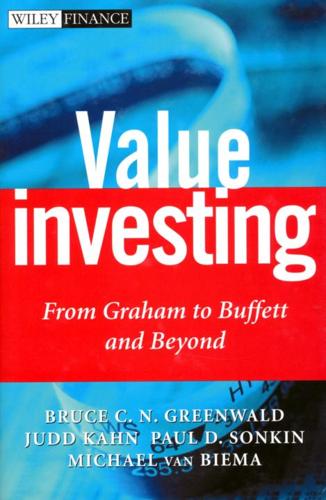
Value Investing: From Graham to Buffett and Beyond
by
Bruce C. N. Greenwald
,
Judd Kahn
,
Paul D. Sonkin
and
Michael van Biema
Published 26 Jan 2004
Other studies confirming and expanding the Fama-French findings are summarized and described in a pamphlet produced by Tweedy, Browne Company, L.P., 52 Vanderbilt Avenue, New York, NY 10017: "What Has Worked in Investing: Studies of Investment Approaches and Characteristics Associated with Exceptional Returns." On risk as (un)related to return: Joseph Lakonishok, Andrei Shleifer, Robert Vishny, "Contrarian Investment, Extrapolation and Risk," Journal of Finance (1994). Warren E. Buffett, "The Superinvestors of Graham-and-Doddsville," can be found as an appendix in Benjamin Graham, The Intelligent Investor, 4th revised edition. Chapter Two On the various tests that have been run to compare value stocks with growth, glamour, or otherwise popular securities: Michelle Clayman, "In Search of Excellence: The Investor's Viewpoint," Financial Analysts Journal, May/June 1987.
…
On cognitive biases, the starting point is the collection of papers: Daniel Kahneman, Paul Slovic, and Amos Tversky, editors, Judgment under Uncertainty (New York: Cambridge University Press, 1982). The consequences for investments form the relatively new field of behavioral finance. Books and articles to consult: Andrei Shleifer, Inefficient Markets: An Introduction to Behavioral Finance (Oxford: Oxford University Press, 2000). Richard H. Thaler, editor, Advances in Behavioral Finance (New York: Russell Sage Foundation, 1993). David Dreman, Contrarian Investment Strategies: The Next Generation (New York: Simon & Schuster, 1998), makes use and has references to many of the articles in this field.
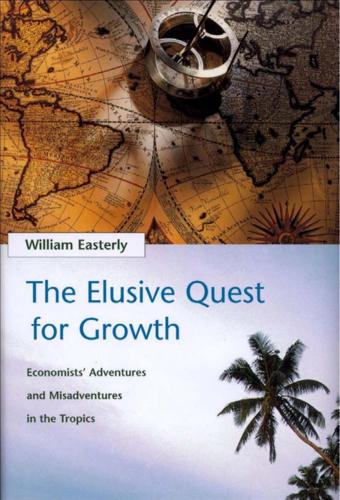
The Elusive Quest for Growth: Economists' Adventures and Misadventures in the Tropics
by
William R. Easterly
Published 1 Aug 2002
.: Macro International June. Mulligan, Casey B., and Xavier Sala-i-Martin. 1993. “Transitional Dynamics in TwoSector Models of Endogenous Growth.” Quarterly Journal of Economics 108 (August): 739-773. Murphy, Kevin M,, Andrei Shleifer, and Robert W. Vishny. 1989. “Industrialization and the Big Push.” Journal of Political Economy 97, no. 5 (October): 1003-1026. Murphy, Kevin M,, Andrei Shleifer, and Robert W. Vishny. 1991. ”The Allocation of Talent: Implications for Growth.” Quarterly Journal of Economics 106, no. 2 (May): 503530. Nafziger, E. Wayne. 1993. The Debt Crisis in Africa. Baltimore: Johns Hopkins University Press.

How Not to Network a Nation: The Uneasy History of the Soviet Internet (Information Policy)
by
Benjamin Peters
Published 2 Jun 2016
Sistema, Power Networks and Informal Governance (New York: Cambridge University Press, 2013). 43. Byung-Yeon Kim, “Informal Economy Activities of Soviet Households: Size and Dynamics,” Journal of Comparative Economics 31 (3) ( 2003): 532–551. 44. Kim, “Informal Economy Activities of Soviet Households,” 532–535; Simon Johnson, Daniel Kaufmann, and Andrei Shleifer, “The Unofficial Economy in Transition,” Brookings Papers on Economic Activity 2 (1997): 159–221. 45. Ledeneva, Russia’s Economy of Favors, 12. 46. Zbigniew K. Brzezinski, The Soviet Block: Unity and Conflict, rev. ed. (New York: Praeger, 1960), 116, see also 115–124. 47. From Elet es Tudomany, December 24, 1952, and Rude Pravo, December 21, 1952, quoted in Brzezinski, The Soviet Block, 114. 48.
…
Unpublished manuscript. John, Richard. Network Nation: Inventing American Telecommunications. Cambridge: Harvard University Press, 2010. Johnson, Daniel. White King and Red Queen: How the Cold War Was Fought on the Chessboard. Boston: Houghton Mifflin, 2008. Johnson, Simon, Daniel Kaufmann, and Andrei Shleifer. “The Unofficial Economy in Transition.” Brookings Papers on Economic Activity 2 (1997): 159–221. Johnston, John. The Allure of Machinic Life: Cybernetics, Artificial Life, and the New AI. Cambridge, MA: MIT Press, 2008. Joravsky, David. Soviet Marxism and Natural Science, 1917–1932. New York: Columbia University Press, 1971.

Capital Ideas Evolving
by
Peter L. Bernstein
Published 3 May 2007
Neoclassical theory is a theory of sharks and not a theory of rational homo economicus, and that is the principal distinction between finance and traditional economics. . . . Well-financed arbitrageurs spot these opportunities [resulting from behavioral errors], pile on, and by their actions close aberrant price differentials [emphasis added].10 An attack on Ross’s position on arbitrage has been mounted by Harvard economist Andrei Shleifer and by Robert Vishny, one of Thaler’s colleagues at Chicago, in an inf luential paper titled “The Limits to Arbitrage.” Shleifer and Vishny build their case on an argument describing the differences between the world in the pages of textbooks and the world where real investors are making decisions: Textbook arbitrage in financial markets requires no capital and entails no risk.
…
“The Vulcanization of the Human Brain: A Neural Perspective on Interactions Between Cognition and Emotion,” Journal of Economic Perspectives, Vol. 19, No. 1 ( Fall), pp. 3–24. Damsma, Marvin, and Gregory Williamson, 1996. “Managing Risk in the Aggregate Portfolio: The Rewards of Portable Alpha,” in Alpha—The Positive Side of Risk: Daring to Be Dif ferent, New York: Investors Press. De Long, J. Bradford, Andrei Shleifer, Lawrence Summers, and Robert Waldmann, 1991. “The Survival of Noise Traders in Financial Markets,” Journal of Business, Vol. 64, No. 1 ( January), pp. 1–19. De Finetti, Bruno, 1940. “Il Problema dei «pieni»” [“The Problem of ‘Full-Risk Insurances’ ”], Giornale dell’Istituto Italiano degli Attuari, Vol. 11, No. 1, pp. 1–88.

Markets, State, and People: Economics for Public Policy
by
Diane Coyle
Published 14 Jan 2020
Khan (2017), “Amazon’s Antitrust Paradox,” Yale Law Journal 126, no. 3. Joshua D. Wright, Elyse Dorsey, Jan Rybnicek, and Jonathan Klick (2018), “Requiem for a Paradox: The Dubious Rise and Inevitable Fall of Hipster Antitrust,” George Mason Law & Economics Research Paper No. 18–29, http://dx.doi.org/10.2139/ssrn.3249524. On Regulatory Policy Andrei Shleifer (2010), “Efficient Regulation,” NBER Working Paper No. 15651 (January), http://www.nber.org/papers/w15651.pdf. Jean Tirole (2014), “Market Failures and Public Policy,” Nobel Prize lecture, https://www.nobelprize.org/nobel_prizes/economic-sciences/laureates/2014/tirole-lecture.pdf. On Specific Markets and Markets in General Richard Green (2005), “Electricity and Markets,” Oxford Review of Economic Policy 21, no. 1.
…
In fact, the tools of empirical economics offer a good deal of insight into policy questions—the subject of the next chapter. Further Reading Technical Follow-Up Sanford Grossman and Oliver Hart (1983), “An Analysis of the Principal-Agent Problem,” Econometrica 51: 7–46. Oliver Hart, Andrei Shleifer, and Robert W. Vishny (1997), “The Proper Scope of Government: Theory and an Application to Prisons,” Quarterly Journal of Economics 112, no. 4:1127–1161. Jean-Jacques Laffont and Jean Tirole (1993), A Theory of Incentives in Procurement and Regulation, MIT Press. Jean Tirole (1986), “Hierarchies and Bureaucracies: On the Role of Collusion in Organizations,” Journal of Law, Economics, and Organization 2, no. 2 (October): 181–214.
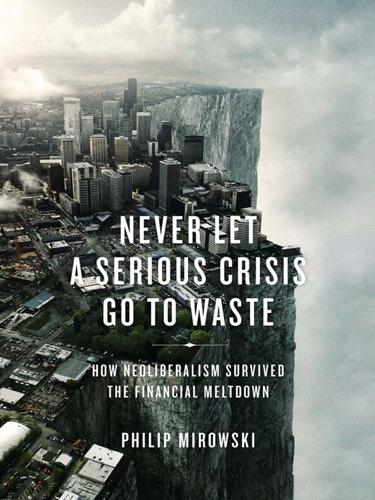
Never Let a Serious Crisis Go to Waste: How Neoliberalism Survived the Financial Meltdown
by
Philip Mirowski
Published 24 Jun 2013
Partly it was due to some political appointees in the Obama administration such as Cass Sunstein who claimed (falsely, as it turned out) that behavioral economics could be used to “nudge” people into behaving more like neoclassical agents.52 Partly, it was the fault of a few bona fide behavioral finance economists (like Andrei Shleifer), who quickly whipped up a couple of toy models after the crisis, purportedly demonstrating that all agents are beset with a peculiar character flaw that causes them to ignore unlikely disastrous events, causing them to whipsaw around the true fundamental determinants of asset prices as defined by the orthodox rational-expectations model, in the face of securitization and tranching.53 But it also emanated from the vast scrum of journalists, primed to believe that once economists would just abjure “rational choice theories,” then all would become revealed.
…
The massive number of papers published on the EMH merely testified to the Protean character of the idol of “market efficiency,” which grew to the status of obsession within the American profession.64 One recent instance of EMH denial that has attracted the endorsement of reformers such as Adair Turner in Britain and Ezra Klein in the United States is the already-mentioned work of the Harvard economist Andrei Shleifer.65 Shleifer is a neoliberal who passes as a left-liberal economist in America, in the Lawrence Summers mold. Shleifer’s model initially “seems” to call into question the validity of certain classes of dubious artificial derivatives by suggesting someone is being misled by the market; but as usual, the devil is in the details.
…
Woodford, eds., NBER Macroeconomics Annual 24 (2009): 1–64. Geanakoplos, John. “Managing the Leverage Cycle,” in Dopo la Crisi, (Milan: Giuffre Editione), 2010 http://dido.econ.yale.edu/P/cp/p13a/p1306.pdf. Geanakoplos, John, and Ana Fostel. “Leverage Cycles and the Anxious Economy,” American Economic Review 98 (2008): 1211–44. Gennaioli, Nicola, Andrei Shleifer, and Robert Vishny. “Neglected Risks, Financial Innovation and Financial Fragility,” NBER Working Paper 16068, 2010. Gerardi, Kristopher, Christopher Foote, and Paul Willen. “Reasonable People Did Disagree,” Boston Fed working paper (2010), at www.bos.frb.org/economic/ppdp/2010/ppdp1005.htm.

Slouching Towards Utopia: An Economic History of the Twentieth Century
by
J. Bradford Delong
Published 6 Apr 2020
My development editor, Thomas Lebien, and my editor at Basic, Brian Distelberg, have been essential: much of this book might be better framed as a Platonic dialogue with them, and it would not exist without them. My intellectual debts are so great, and there are very many who deserve to be thanked (without implicating any of them in the many, many mistakes I am sure I have committed in this book). But let me cheat and thank only ten more. First of all, let me thank Andrei Shleifer and Larry Summers: whenever I have been able to think thoughts worth recording and disseminating, more often than not my train of thought has begun with “What would Larry say here?” or “What would Andrei think about this?” Then there is the huge amount of my intellectual formation that springs from the Committee on Degrees in Social Studies, most importantly Jeff Weintraub and Shannon Stimson.
…
Filene, “The New Capitalism,” Annals of the American Academy of Political and Social Science 149, no. 1 (May 1930): 3–11. 39. “Fisher Sees Stocks Permanently High,” New York Times, October 16, 1929, https://timesmachine.nytimes.com/timesmachine/1929/10/16/96000134.html. 40. J. Bradford DeLong and Andrei Shleifer, “Closed-End Fund Discounts: A Yardstick of Small-Investor Sentiment,” Journal of Portfolio Management 18, no. 2 (Winter 1992): 46–53. 41. Eichengreen, Golden Fetters, 222–256. 42. Douglas Irwin, “Who Anticipated the Great Depression? Gustav Cassel Versus Keynes and Hayek on the Interwar Gold Standard,” Journal of Money, Credit, and Banking 46, no. 1 (February 2014): 199–227, https://cpb-us-e1.wpmucdn.com/sites.dartmouth.edu/dist/c/1993/files/2021/01/jmcb.12102.pdf. 43.
…
Stanley Engerman and Kenneth Sokoloff, “Institutions, Factor Endowments, and Paths of Development in the New World,” Journal of Economic Perspectives 14, no. 3 (Summer 2020): 217–232, available at American Economic Association, www.aeaweb.org/articles?id=10.1257/jep.14.3.217; Rafael La Porta, Florencio Lopez-de-Silanes, and Andrei Shleifer, “The Economic Consequences of Legal Origins,” Journal of Economic Literature 46, no. 2 (June 2008): 285–332. 5. Harold Macmillan, “Winds of Change,” BBC, February 3, 1960, www.bbc.co.uk/archive/tour-of-south-africa—rt-hon-macmillan/zv6gt39. 6. Ashutosh Varshney, “The Wonder of Indian Democracy,” East Asia Forum Quarterly, February 29, 2012, www.eastasiaforum.org/2012/02/29/the-wonder-of-indian-democracy. 7.
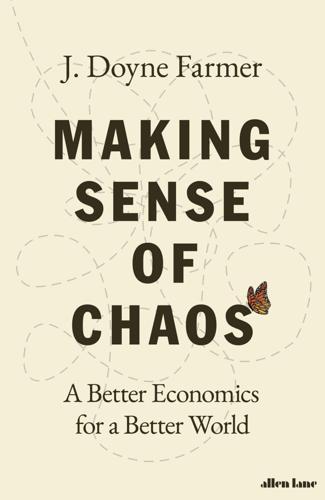
Making Sense of Chaos: A Better Economics for a Better World
by
J. Doyne Farmer
Published 24 Apr 2024
In recent years, economists have begun trying to incorporate the findings of behavioral economists more directly, by assuming that people make decisions based on flawed models of the world. For example, Xavier Gabaix has developed a macroeconomic model with myopic households who fail to look very far into the future.15 Similarly, Nicola Gennaioli and Andrei Shleifer have created a ‘diagnostic expectations’ model, incorporating departures from rational expectations by assuming that people overreact to news.16 These approaches replace rational expectations with a different model of beliefs, but they still assume that agents maximize utility, or something like utility.
…
Geanakoplos, John, Robert Axtell, J. Doyne Farmer, Peter Howitt, Benjamin Conlee, Jonathan Goldstein, Matthew Hendry, Nathan M. Palmer and Chun-Yi Yang. 2012. ‘Getting at Systemic Risk via an Agent-Based Model of the Housing Market’. American Economic Review 102 (3): 53–58, doi: 10.1257/aer.102.3.53. Gennaioli, Nicola and Andrei Shleifer. 2018. A Crisis of Beliefs: Investor Psychology and Financial Fragility. Princeton: Princeton University Press. Gennotte, Gerard and Hayne Leland. 1990. ‘Market Liquidity, Hedging, and Crashes’. American Economic Review 80 (5): 999–1021. Ghashghaie, S., W. Breymann, J. Peinke, P. Talkner and Y.

Money Changes Everything: How Finance Made Civilization Possible
by
William N. Goetzmann
Published 11 Apr 2016
If the project is a risky one—and most innovations are—a delay of ten years could cause the value to drop by 80%. Perhaps the fall in share prices in the early 1930s reflected the realization that those marvelous patents, so valuable when people had money in their pockets, would take a very, very long time to yield future dividends. A contrary view—proposed by Bradford DeLong and Andrei Shleifer, both deep thinkers about markets, is that the euphoria of investors about the market pushed valuation way beyond its fundamental economic worth.17 Delong and Shleifer tested this idea by gathering prices of investment funds trading in the 1920s and looking at the prices of the stocks they held.
…
Part III, Committee for the Holders of Real Estate Bonds. Washington, DC: US Government Printing Office, p. 67 and ff. 16. See Nicholas, Tom. 2008. “Does innovation cause stock market runups? Evidence from the great crash.” American Economic Review 98(4): 1370–1396. 17. De Long, J. Bradford, and Andrei Shleifer. 1990. The Bubble of 1929: Evidence from Closed-End Funds. No. w3523. Cambridge, MA: National Bureau of Economic Research. 18. The following paper was read before a joint meeting of the Econometric Society and the American Statistical Association, Cincinnati, Ohio, December 31, 1932. It was reprinted in Cowles, Alfred. 1933.
…
The South-Sea Scheme Examin’d: And the Reasonableness Thereof Demonstrated. By a Hearty Well-Wisher to Publick Credit, third edition. London: J. Roberts. Delisle, M. Leopold. 1888. “Memoires sur les Operations Financieres des Templiers.” Mémoires de l’Institute National de France. Academie des Inscriptions Belles-Lettres, Paris 33: 11. De Long, J. Bradford, and Andrei Shleifer. 1990. The Bubble of 1929: Evidence from Closed-End Funds. No. w3523. Cambridge, MA: National Bureau of Economic Research. De Moivre, Abraham. 1756. The Doctrine of Chances: Or, a Method of Calculating the Probabilities of Events in a Play, third edition. London: Millar. Reprinted in 1967, New York: Chelsea Publishing.
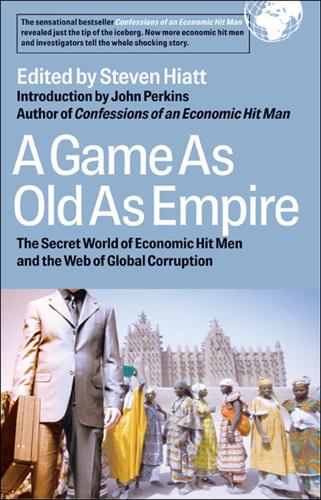
A Game as Old as Empire: The Secret World of Economic Hit Men and the Web of Global Corruption
by
Steven Hiatt; John Perkins
Published 1 Jan 2006
There is a strong case for removing India and China from these numbers because they account for a disproportionate share of reserves, and, in China’s case, capital flight estimates are distorted by a substantial amount of “round-tripping” through Hong Kong (capital flight to Hong Kong that returns to China as “foreign” investment capital). However, even after removing those two countries, the flight wealth from developing countries turns out to be at least $1 trillion greater than their net debt. 28. See, for example, Andrei Shleifer and Daniel Wolfenzon, “Investor Protection and Equity Markets,” Journal of Financial Economics 66, no. 1 (2002), pp. 3-27; and Rafael LaPorta et al., “Legal Determinants of External Finance,” Journal of Finance 52 (1997), pp. 1131-50. Interestingly, in September 2000, Shleifer, a tenured Harvard economics professor and program director at Harvard’s Institute for International Development in Russia, was one of several key defendants named in a $100 million lawsuit filed by the U.S. government.
…
The suit alleged that, while managing a USAID-funded economic reform effort in Russia during the 1990s, Shleifer had engaged in the “unauthorized use of inside information to commit securities fraud, use of public money for private gain, tax evasion and submission of phony bills … a garden-variety, free-market scam.” See U.S. v. President and Fellows of Harvard College, Andrei Shleifer, Jonathan Hay, Nancy Zimmerman, and Elizabeth Herbert (U.S. District Court of Boston, Civil Action 00119977, September 26, 2000). The suit was settled in July 2005 with a $26.5 million payment by Harvard and a $2 million payment by Professor Shleifer. 29. See Henry, Pirate Bankers. 30. For the world’s forty-nine poorest countries, by UN designation, real per capita incomes, adjusted for purchasing parity (PPP) differentials, grew an average of just 0.7 percent yearly from 1980 to 2005, and for the rest of low- and middle-income countries—excluding China and India—incomes grew an average of just 0.8 percent yearly.
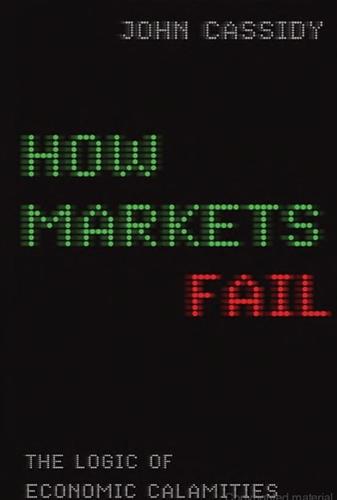
How Markets Fail: The Logic of Economic Calamities
by
John Cassidy
Published 10 Nov 2009
According to this theory, which also reflects the influence of Keynes, investing is essentially a game played between sophisticates and boobs. The sophisticates are assumed to be fully rational, with access to reams of information and an ability to sift significant news from irrelevant ephemera, which statisticians refer to as noise. The boobs are naive and mentally limited. In the description of Andrei Shleifer, a Harvard professor who played a leading role in developing the noise trader model, they “follow the advice of financial gurus, fail to diversify, actively trade stocks and churn their portfolios, sell winning stocks and hold on to losing stocks, thereby increasing their tax liabilities, buy and sell actively and expensively managed mutual funds, follow stock price patterns and other popular models.”
…
America’s Portfolio Managers Grow More Bullish on Stocks and Interest Rates,” Barron’s, May 3, 1999, 31–38. 181 Pension fund investment in the Internet bubble: Eli Ofek and Matthew Richardson, “DotCom Mania: The Rise and Fall of Internet Stock Prices,” Journal of Finance 57, no. 3 (June 2003): 1122. 181 “From an efficient markets perspective . . .”: Markus K. Brunnermeier and Stefan Nagel, “Hedge Funds and the Technology Bubble,” Journal of Finance 59, no. 5 (October 2004): 2013–40. 182 “follow the advice of financial . . .”: Andrei Shleifer, Inefficient Markets: An Introduction to Behavioral Finance (New York: Oxford University Press, 2000), 10. 183 “[R]ational arbitrage can . . .”: Ibid., 174. 184 “This risk comes from . . .”: Ibid., 14–15. 184 “We were too early in calling . . .”: Mitchell Pacelle, “Soros to Appoint a CEO After Firm’s Chaotic Year,” Wall Street Journal, August 10, 1999, C1. 185 Fama update on the efficient market hypothesis: Eugene G.
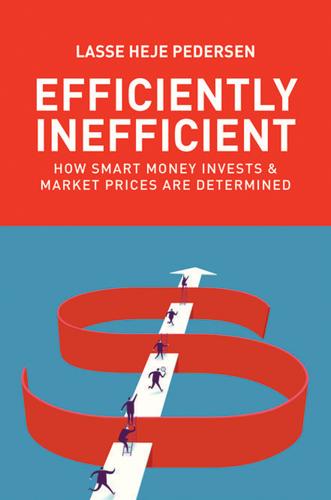
Efficiently Inefficient: How Smart Money Invests and Market Prices Are Determined
by
Lasse Heje Pedersen
Published 12 Apr 2015
Thaler (1985), “Does the Stock Market Overreact?” The Journal of Finance 40(3), 793–805. De Long, J. B., A. Shleifer, L. H. Summers, and R. J. Waldmann (1990), “Positive Feedback Investment Strategies and Destabilizing Rational Speculation,” The Journal of Finance 45, 379–395. De Long, J. B., Andrei Shleifer, Lawrence H. Summers, and Robert J. Waldmann (1993), “Noise Trader Risk in Financial Markets,” Journal of Political Economy 98, 703–738. de Roon, F., T. E. Nijman, and C. Veld (2000), “Hedging Pressure Effects in Futures Markets,” Journal of Finance 55, 1437–1456. Dechow, Patricia M., Richard G.
…
Naik, and Melvyn Teo (2007), “Do Hedge Funds Deliver Alpha? A Bayesian and Bootstrap Analysis,” Journal of Financial Economics 84, 229–264. Krishnamurthy, Arvind, and Annette Vissing-Jorgensen (2012), “The Aggregate Demand for Treasury Debt,” Journal of Political Economy 120, 233–267. Lakonishok, Josef, Andrei Shleifer, and Robert W. Vishny (1994), “Contrarian Investment, Extrapolation, and Risk,” The Journal of Finance 49(5), 1541–1578. Lamont, Owen (2012), “Go Down Fighting: Short Sellers vs. Firms,” Review of Asset Pricing Studies 2, 1–30. Lamont, Owen, and Richard H. Thaler (2003), “Can the Stock Market Add and Subtract?
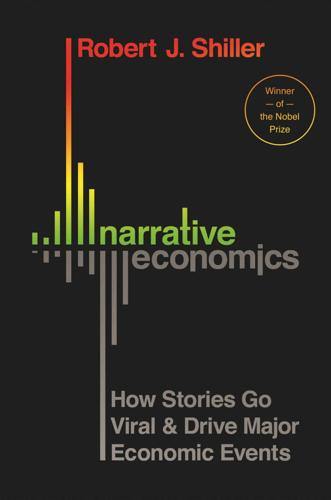
Narrative Economics: How Stories Go Viral and Drive Major Economic Events
by
Robert J. Shiller
Published 14 Oct 2019
“The Price and Quantity of Residential Land in the United States.” Journal of Monetary Economics 54(8):2595–620. Davis, Shelby Cullom. 1940. America Faces the Forties. Philadelphia: Dorrance and Company. Dawkins, Richard. 1976. The Selfish Gene. Oxford: Oxford University Press. De Long, J. Bradford, Andrei Shleifer, Lawrence H. Summers, and Robert J. Waldmann. 1990. “Noise Trader Risk in Financial Markets.” Journal of Political Economy 98(4):703–38. Desmond, Matthew. 2017. Evicted: Poverty and Profit in the American City. New York: Broadway Books. Diamond, Douglas B., Jr. 1980. “Taxes, Inflation, Speculation and the Cost of Homeownership.”
…
“Neuroanatomy of ‘Hearing Voices’: A Frontotemporal Brain Structural Abnormality Associated with Auditory Hallucinations in Schizophrenia.” Cerebral Cortex 14(1):91–96. Geanakoplos, John. 2010. “The Leverage Cycle.” In Daron Acemoglu et al., eds., NBER Macroeconomics Annual 2009, vol. 24. Chicago: University of Chicago Press. Gennaioli, Nicola, and Andrei Shleifer. 2018. A Crisis of Beliefs: Investor Psychology and Financial Fragility. Princeton, NJ: Princeton University Press. Gentzkow, Matthew, Jesse M. Shapiro, and Matt Taddy. 2016. “Measuring Polarization in High-Dimensional Data: Method and Application to Congressional Speech.” Unpublished paper, Stanford University.
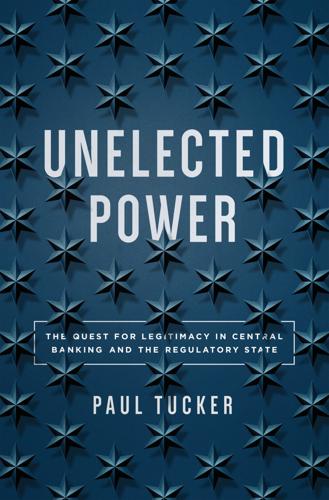
Unelected Power: The Quest for Legitimacy in Central Banking and the Regulatory State
by
Paul Tucker
Published 21 Apr 2018
To this chapter’s two-dimensional matrix of the purposes and functional modes of the administrative state we must add a third dimension, covering its structure. That, and in particular the varying degrees to which state agencies are insulated from politics, is the subject of the next chapter. 1 Friedman, “Social Responsibility.” 2 Majone, Regulating Europe, chapter 13, p. 296. 3 Thanks to Andrei Shleifer for urging me to stress why the path of twentieth-century welfare economics matters to our inquiry into IAs. 4 For an exchange on the role of the state between economists with a very different cast of mind, see Buchanan and Musgrave, Public Finance. 5 Musgrave, Theory of Public Finance. Musgrave omitted physical security, presumably because he was interested in economic policy. 6 Following London (later Oxford) philosopher Freddie Ayer’s version of the Viennese fashion that what we cannot verify is literally meaningless, London School of Economics economist Lionel Robbins forcefully latched onto the view that ethics is just noise and, at the very least, completely separable from the technical science of economics.
…
Among current or former staff in Congress: James Ahn and Jim Segal. Among international institutions: Ceyla Pazarbasioglu, Marc Quintyn, and Jose Vinals. A few people are omitted from those lists because they have provided a special degree of intellectual and personal support. Among academics, I must single out Alberto Alesina, Philip Pettit, Paul Sagar, Andrei Shleifer, and Kevin Stack. I could hardly be more grateful to them. The enthusiasm of Philip for my project from its early stages made a massive difference. In places, the book is an exercise in Alesina meets Pettit and Waldron under the umbrella of David Beetham (whom I do not know at all) and the late Bernard Williams (whom I discussed with Paul and Kevin).
…
Delegation in the Regulatory State: Independent Regulatory Agencies in Western Europe. Cheltenham: Edward Elgar, 2008. Ginsburg, Douglas H., and Steven Menashi. “Our Illiberal Administrative Law.” New York University Journal of Law & Liberty 10, no. 2 (2016): 475–523. Glaeser, Edward L., and Andrei Shleifer. “The Rise of the Regulatory State.” NBER Working Paper, no. 8650, December 2001. Goldmann, Matthias. “Adjudicating Economics? Central Bank Independence and the Appropriate Standard of Judicial Review.” German Law Journal 15, no. 2 (2014): 266–80. Goldsworthy, Jeffrey. Parliamentary Sovereignty: Contemporary Debates.
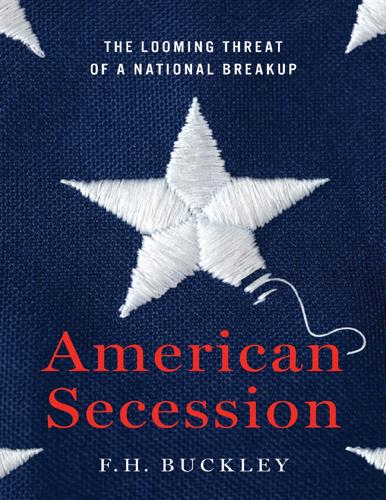
American Secession: The Looming Threat of a National Breakup
by
F. H. Buckley
Published 14 Jan 2020
Veenendaal and Jack Corbett, “Why Small States Offer Important Answers to Large Questions,” Comparative Political Studies, vol. 48, no. 4 (2015): 527–49. 7 Aristotle, Politics VII § 4 (“if the citizens of a state are to judge and to distribute offices according to merit, then they must know each other’s characters”). 8 William Easterly and Ross Levine, “Africa’s Growth Tragedy: Policies and Ethnic Divisions,” Quarterly Journal of Economics, vol. 112, no. 4 (November 1997): 1203–50; Rafael La Porta, Florencio Lopez-de-Silanes, Andrei Shleifer and Robert Vishny, “The Quality of Government,” Journal of Law and Economics, vol. 15, no. 1 (April 1999): 222–79. 9 Farrand II.644 (September 17). 10 Jean-Jacques Rousseau, Social Contract III.2, in Rousseau: The Social Contract and other later political writings, ed. Victor Gourevitch (New York: Cambridge University Press, 1997).
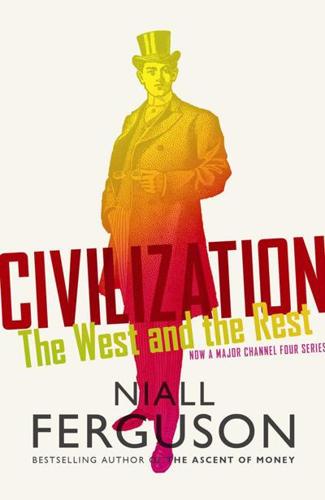
Civilization: The West and the Rest
by
Niall Ferguson
Published 28 Feb 2011
Bruce Little (Leamington Spa/Heidelberg, 1986) Kamisaka, S., Cotton Mills and Workers in Modern Japan (Osaka, 1919) Keene, Donald, Emperor of Japan: Meiji and his World, 1852–1912 (New York, 2005) Kurlansky, Mark, 1968: The Year that Rocked the World (New York, 2005) Lamoreaux, Naomi, ‘Scylla or Charybdis? Some Historical Reflections on the Two Basic Problems of Corporate Governance’, unpublished paper (2009) La Porta, Rafael, Florencio Lopez-de-Silanes and Andrei Shleifer, ‘The Economic Consequences of Legal Origins’, Journal of Economic Literature, 46, 2 (2008), 285–332 La Porta, Rafael, Florencio Lopez-de-Silanes, Andrei Shleifer and Robert Vishny, ‘Investor Protection and Corporate Governance’, Journal of Financial Economics, 58, 1 (2000), 1–25 ———, ‘Law and Finance’, Journal of Political Economy, 106, 6 (1998), 1113–55 Leggewie, Claus, ‘1968: A Defining Year in World Politics: A Return from Cultural Nostalgia to Political Analysis’, Goethe Institute Online: http://www.goethe.de/ges/pok/dos/dos/wdp/en3045262.htm Leunig, T., ‘A British Industrial Success: Productivity in the Lancashire and New England Cotton Spinning Industries a Century Ago’, Economic History Review 56, 1 (2003), 90–117 McKendrick, Neil, John Brewer and J.
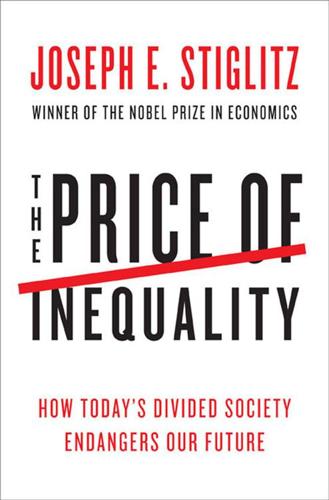
The Price of Inequality: How Today's Divided Society Endangers Our Future
by
Joseph E. Stiglitz
Published 10 Jun 2012
Stiglitz, “Credit Markets and the Control of Capital,” Journal of Money, Banking, and Credit 17, no. 2 (1985): 133–52. There is a large subsequent literature on these topics. See, e.g., Aaron S. Edlin and Joseph E. Stiglitz, “Discouraging Rivals: Managerial Rent-Seeking and Economic Inefficiencies,” American Economic Review 85, no. 5 (December 1995): 1301–12; and Andrei Shleifer and Robert W. Vishny, “A Survey of Corporate Governance,” Journal of Finance 52, no. 2 (June 1997): 737–83. 39. John Bogle, the founder of Vanguard Group, an investment management company that manages approximately $1.6 trillion in funds, in his comments on Bebchuk and Fried, Pay without Performance.
…
Not surprisingly an army of lawyers is ready to come to the defense of the legal profession and to challenge these findings. See George L. Priest, “Lawyers, Liability, and Law Reform: Effects on American Economic Growth and Trade Competitiveness” (1993), Faculty Scholarship Series, available at 624.http://digitalcommons.law.yale.edu/fss_papers/624. 36. See Andrei Shleifer and Robert W. Vishny, The Grabbing Hand: Government Pathologies and Their Cures (Cambridge: Harvard University Press, 1998). 37. The theory is that fear of punishment after the fact will provide incentives for firms to behave well. But firms well armed with lawyers know that they often will escape punishment.
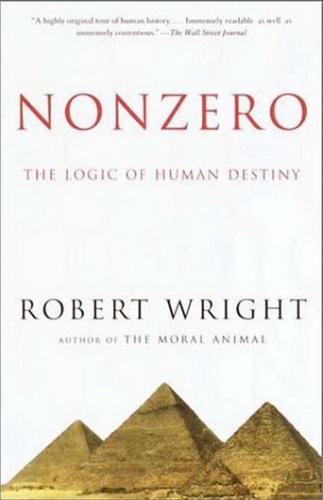
The Moral Animal: Evolutionary Psychology and Everyday Life
by
Robert Wright
Published 1 Jan 1994
.† The economic logic of freedom is sufficiently subtle to have eluded a number of European rulers in the early modern age. Indeed, on balance, in the centuries after the printing press was invented, European government grew more despotic. But the trend was doomed. The economists J. Bradford De Long and Andrei Shleifer have shown that, as a rule, the more despotic the governments, and the tighter their reins on the press, the less prosperous their polities were. Even during absolutist Spain’s so-called Golden Age, Spanish cities saw declining wealth and population. Kant, writing in the late eighteenth century, observed, “If the citizen is deterred from seeking his personal welfare in any way he chooses which is consistent with the freedom of others, the vitality of business in general and hence also the strength of the whole are held in check.
…
Davis, Morton D. (1989) “Game Theory,” in Encyclopaedia Brittanica, 15th ed., vol. 19, pp. 643–49. Dawkins, Richard (1976) The Selfish Gene. Oxford University Press. ——— (1986) The Blind Watchmaker. W. W. Norton. ——— (1997) “Human Chauvinism.” Evolution 51:1015–20. De Long, J. Bradford, and Andrei Shleifer (1993) “Princes and Merchants: European City Growth Before the Industrial Revolution.” Journal of Law and Economics 36:671–702. Dennett, Daniel (1991) Consciousness Explained. Little, Brown. ——— (1995) Darwin’s Dangerous Idea. Simon and Schuster. ——— (1997) “Appraising Grace.” The Sciences, January/February, pp. 39–44.
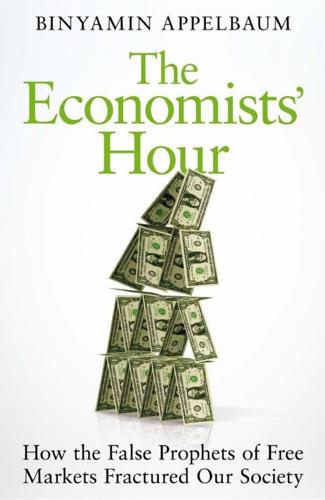
The Economists' Hour: How the False Prophets of Free Markets Fractured Our Society
by
Binyamin Appelbaum
Published 4 Sep 2019
Summers, a Harvard economist who served as a senior official in the Clinton and Obama administrations, wrote in 2006 that Friedman had been a “devil figure” in his youth, but he had come to view Friedman with great admiration. “He has had more influence on economic policy as it is practiced around the world today than any other modern figure,” Summers wrote.9 A Harvard colleague, Andrei Shleifer, wrote in 2009 that the period between 1980 and 2005 had been “the Age of Milton Friedman.”10 Milton Friedman’s parents came from the same small Austro-Hungarian city, Beregszász, but they met in Brooklyn, where Milton was born on July 31, 1912. He grew up in Rahway, New Jersey, where the family owned small businesses including, at various times, a clothing factory, a dry-goods store, and an ice cream parlor.
…
Well, Solow continued, everything reminded him of sex, but he didn’t put it in every paper. Robert M. Solow, “Review of A Monetary History,” in Modern Economic Classics — Evaluations Through Time, ed. Bernard S. Katz and Ronald E. Robbins (New York: Garland, 1988), 339–46. 9. Lawrence H. Summers, “The Great Liberator,” New York Times, November 19, 2006. 10. Andrei Shleifer, “The Age of Milton Friedman,” Journal of Economic Literature 47, no. 1 (2009): 123–35. 11. Friedman and Friedman, Two Lucky People, 29. 12. “Becoming an economist seemed more relevant to the burning issues of the day than becoming an applied mathematician or an actuary”: Milton Friedman, “Milton Friedman,” in Lives of the Laureates, ed.
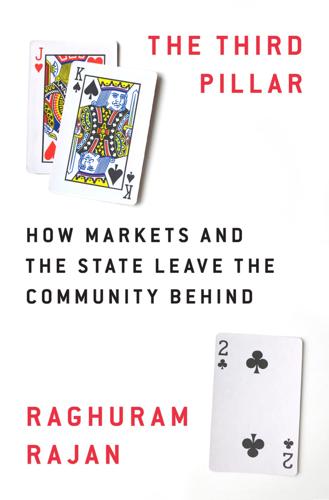
The Third Pillar: How Markets and the State Leave the Community Behind
by
Raghuram Rajan
Published 26 Feb 2019
When a corporate raider takes over a company where most employees have already made such investments, repudiates these implicit contracts, eliminates jobs and cuts wages, the raider benefits, as do shareholders. Workers take a large hit, though, and they, as well as future employees in the industry, may forever lose trust in management. Harvard economists Andrei Shleifer and Larry Summers emphasized this point in the context of airline takeovers in the 1980s, after the industry was deregulated. When corporate raider Carl Icahn took over Trans World Airlines (TWA) in 1985, they argue that much of the value he squeezed out for shareholders came from abrogating wage agreements and renegotiating worker wages down.42 To the extent that workers were overpaid because of lax prior management and strong union bargaining, this was beneficial for shareholders, but unless lower costs led to lower ticket prices and more travel, this was a wash for society since no additional value was created.
…
Milton Friedman, “The Social Responsibility of Business Is to Increase Its Profits,” The New York Times Magazine, September 13, 1970. 41. Michael Jensen and Kevin J. Murphy, “Performance Pay and Top-Management Incentives,” Journal of Political Economy 98, no. 2 (April 1990): 225–64. 42. Andrei Shleifer and Lawrence H. Summers, “Breach of Trust in Hostile Takeovers,” in Corporate Takeovers: Causes and Consequences, ed. Alan J. Auerbach (Chicago: University of Chicago Press, 1988), 33–68; Luigi Zingales, “In Search of New Foundations,” The Journal of Finance 55, no. 4 (August 2000): 1623–53. 43.
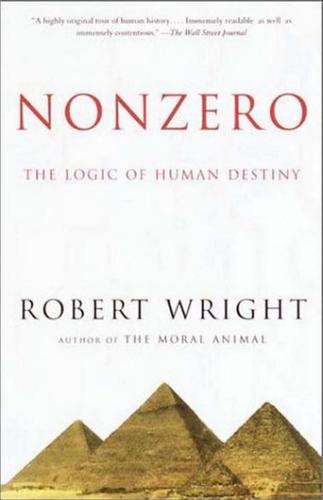
Nonzero: The Logic of Human Destiny
by
Robert Wright
Published 28 Dec 2010
.† The economic logic of freedom is sufficiently subtle to have eluded a number of European rulers in the early modern age. Indeed, on balance, in the centuries after the printing press was invented, European government grew more despotic. But the trend was doomed. The economists J. Bradford De Long and Andrei Shleifer have shown that, as a rule, the more despotic the governments, and the tighter their reins on the press, the less prosperous their polities were. Even during absolutist Spain’s so-called Golden Age, Spanish cities saw declining wealth and population. Kant, writing in the late eighteenth century, observed, “If the citizen is deterred from seeking his personal welfare in any way he chooses which is consistent with the freedom of others, the vitality of business in general and hence also the strength of the whole are held in check.
…
Davis, Morton D. (1989) “Game Theory,” in Encyclopaedia Brittanica, 15th ed., vol. 19, pp. 643–49. Dawkins, Richard (1976) The Selfish Gene. Oxford University Press. ——— (1986) The Blind Watchmaker. W. W. Norton. ——— (1997) “Human Chauvinism.” Evolution 51:1015–20. De Long, J. Bradford, and Andrei Shleifer (1993) “Princes and Merchants: European City Growth Before the Industrial Revolution.” Journal of Law and Economics 36:671–702. Dennett, Daniel (1991) Consciousness Explained. Little, Brown. ——— (1995) Darwin’s Dangerous Idea. Simon and Schuster. ——— (1997) “Appraising Grace.” The Sciences, January/February, pp. 39–44.
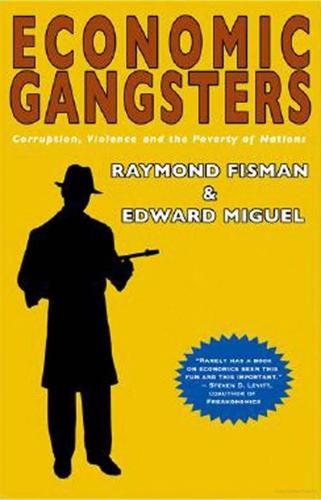
Economic Gangsters: Corruption, Violence, and the Poverty of Nations
by
Raymond Fisman
and
Edward Miguel
Published 14 Apr 2008
Perhaps not surprisingly, when change did come, it was brought about by popular uprising, violent protest, and rioting in the streets that ultimately forced President Suharto to step down. 10. “Politics, legal systems and corruption in Indonesia: A historical overview.” INSEAD teaching note, 2002. 11. “Bribes, Extortion a Way of Life for Many in Sicily,” Associated Press, August 15, 1992. 12. Economists Andrei Shleifer and Robert Vishny were the first to note the benefits of centralized corruption in the aptly titled article, “Corruption,” Quarterly Journal of Economics, 1993. 13. See Mara Faccio, “Politically Connected Firms,” American Economic Review, 96(1), March 2006, pp. 369–86. 14. See Don Wolfernsberger, “Punishing Disorderly Behavior in Congress: The First Century,” mimeo, the Woodrow Wilson Center, 2006. 15.

Tyler Cowen-Discover Your Inner Economist Use Incentives to Fall in Love, Survive Your Next Meeting, and Motivate Your Dentist-Plume (2008)
by
Unknown
Published 20 Sep 2008
If one person is showing off and demonstrating resentment by giving gifts, other people in the room may feel inadequate or underappreciated. This is not helping the world. Other times we give gifts to control people. The gift is not a gift at all. The gift is a signal that if the other person does us favors, he or she can expect more payment in the future. B. Douglas Bernheim, Andrei Shleifer, and Larry Summers conducted a comprehensive study of parental bequests; the paper was titled 'The Strategic Bequest Motive." The results will not surprise any reader of Ben Jonson's Volpone, in which toadies curry favor with a nobleman to receive a large inheritance. In modern America, the more children called or visited their parents, the more likely they received a significant bequest.

Investing Demystified: How to Invest Without Speculation and Sleepless Nights
by
Lars Kroijer
Published 5 Sep 2013
A number of friends were also instrumental in the book’s completion by giving comments on early drafts as I stumbled towards a coherent argument: Steven Felsher with his extremely thorough system of numbering each paragraph (there were 8001 in one draft), former office mate Edwin Datson, Mark Hunter, Stuart Hamilton, Chris Rossbach with his sharp pencil, Paul Amery from Index Universe, Coenraad Vrolijk from Blackrock, Morten Bech from the Bank of International Settlements, Stéphane Guibaud from London School of Economics, and my former professors Andrei Shleifer from Harvard University and Jay Light from Harvard Business School. Finally, I would like to thank all those in and around the finance industry who consistently encouraged me to write about this subject and helped in various ways. While the book in general suggests investing in ways that lead to lower fees to the financial industry, the people I talked to had their customers’ interests as their first objective.
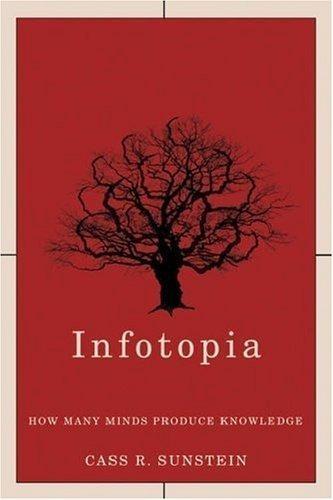
Infotopia: How Many Minds Produce Knowledge
by
Cass R. Sunstein
Published 23 Aug 2006
Friedrich Hayek, “The Origins and Effects of Our Morals: A Problem for Science,” in The Essence of Hayek, 318, 330. 45. See Robert MacCoun et al., Drug War Heresies: Learning from Other Vices, Times, and Places (New York: Cambridge University Press, 2001). 46. The Federalist No. 14 (James Madison). 47. For a good overview, see Andrei Shleifer, Inefficient Markets: An Introduction to Behavioral Finance (Oxford: Oxford University Press, 2000). 48. See Richard Thaler, ed., Advances in Behavioral Finance, vol. 2 (Princeton, NJ: Princeton University Press, 2005). 49. In fact, some rigorous tests have raised doubts about it. See ibid. 50.
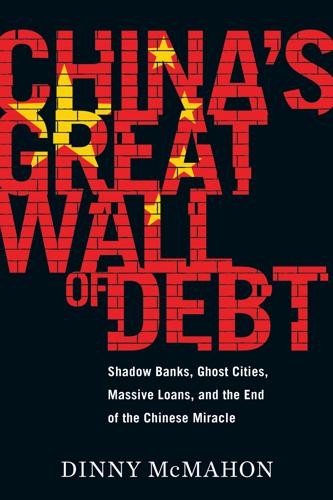
China's Great Wall of Debt: Shadow Banks, Ghost Cities, Massive Loans, and the End of the Chinese Miracle
by
Dinny McMahon
Published 13 Mar 2018
peak, in 2006: Dean Baker, “The Housing Bubble and the Financial Crisis,” Real-World Economics Review, no. 46 (2008): 74, http://paecon.net/PAEReview/issue46/Baker46.pdf. the subprime mortgage crisis: “The Critical Issue: China and China Plays,” Global Equity Strategy, Credit Suisse, July 2015, 6. the urban population: Edward Glaeser, Wei Huang, Yueran Ma, and Andrei Shleifer, “A Real Estate Boom with Chinese Characteristics,” Journal of Economic Perspectives 31, no. 1 (2017): 93–116, http://scholar.harvard.edu/files/shleifer/files/chinaboom_final.pdf. China’s smaller cities: Andy Rothman, “Sinology: Does China Have a Housing Bubble?,” Matthews Asia, November 2016, https://institutional.matthewsasia.com/sinology-china-housing-bubble/.
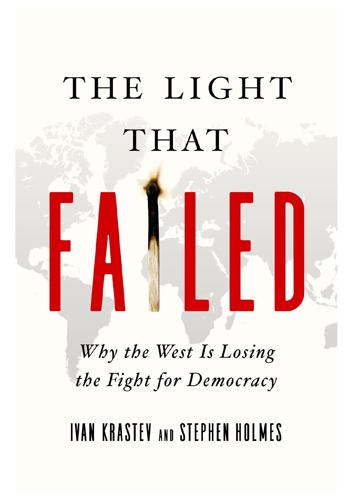
The Light That Failed: A Reckoning
by
Ivan Krastev
and
Stephen Holmes
Published 31 Oct 2019
Michnik, Letters from Prison, p. 314. 53. Michnik, ‘Letter from the Gdańsk Prison’ (1985), in Letters from Prison, p. 81. 54. In the social-science literature, a classic example of the insensitivity of outside observers to the historical connotations in the region of the word ‘normality’ is a well-known essay by Andrei Shleifer and Daniel Treisman, ‘Normal Countries. The East 25 Years After Communism’, Foreign Affairs (November/December 2014). 55. Peter Bradshaw, ‘Graduation Review – A Five-Star Study of Grubby Bureaucratic Compromise’, Guardian (19 May 2016). 56. Ruzha Smilova, ‘Promoting “Gender Ideolog” ’: Constitutional Court of Bulgaria Declares Istanbul Convention Unconstitutional’, Oxford Human Rights Hub (22 August 2018); http://ohrh.law.ox.ac.uk/promoting-gender-ideology-constitutional-court-of-bulgaria-declares-istanbul-convention-unconstitutional/. 57.

The Origins of Political Order: From Prehuman Times to the French Revolution
by
Francis Fukuyama
Published 11 Apr 2011
Hayek, “The Use of Knowledge in Society,” American Economic Review 35, no. 4 (1945): 519–30. See also Fatal Conceit: The Errors of Socialism (Chicago: University of Chicago Press, 1988). 14 Hayek, Law, Legislation and Liberty, pp. 72–74. 15 Ibid., p. 85. 16 See, for example, Rafael La Porta, Florencio Lopez-de-Silanes, Andrei Shleifer, and Robert W. Vishny, “Legal Determinants of External Finance,” Journal of Political Economy 52 (1997): 1131–50; and “Law and Finance,” Journal of Political Economy 106 (1998): 1113–55. This literature has sparked a large debate. It is not clear that common law systems provide clear advantages over civil law ones with regard to economic growth.
…
“Justices and Panditas: Some Ironies in Contemporary Readings of the Hindu Legal Past.” Journal of Asian Studies 48(4):757–69. Larmour, Peter. 1997. Governance and Reform in the South Pacific. Canberra: ANU National Centre for Development Studies. La Porta, Rafael, Florencio Lopez-de-Silanes, Andrei Shleifer, and Robert W. Vishny. 1997. “Legal Determinants of External Finance.” Journal of Political Economy 52:1131–50. ———. 1998. “Law and Finance.” Journal of Political Economy 106:1113–55. Laslett, Peter, ed. 1972. Household and Family in Past Time. Cambridge: Cambridge University Press. LeBlanc, Steven A., and Katherine E.

Capitalism Without Capital: The Rise of the Intangible Economy
by
Jonathan Haskel
and
Stian Westlake
Published 7 Nov 2017
Giorgio Marrano, Mauro, Jonathan Haskel, and Gavin Wallis. 2009. “What Happened to the Knowledge Economy? ICT, Intangible Investment and Britain’s Productivity Record Revisited.” Review of Income and Wealth 55 (3): 686–716. Glaeser, Edward L. 2011. Triumph of the City. Macmillan. Glaeser, Edward L., Hedi D. Kallal, José A. Scheinkman, and Andrei Shleifer. 1992. “Growth in Cities.” Journal of Political Economy 100 (6): 1126–52. doi:10.1086/261856. Goldin, Claudia, and Lawrence F. Katz. 2008. The Race between Education and Technology. Harvard University Press. Goodridge, P. R., and J. Haskel. 2016. “Big Data in UK Industries: An Intangible Investment Approach.”

Scarcity: The True Cost of Not Having Enough
by
Sendhil Mullainathan
Published 3 Sep 2014
The emerging drafts benefited from the wisdom of good friends, colleagues, and loved ones. We especially thank Bindu Ananth, Samura Atallah, Amber Batata, Emily Breza, Andy Conway, Katherine Edin, Alissa Fishbane, Lawrence Katz, Michael Lewis, Lori Lieberman, Jens Ludwig, Anastasia Mann, Frank Schilbach, Antoinette Schoar, Heather Schofield, Josh Schwartzstein, Sharoni Shafir, Andrei Shleifer, Richard Thaler, Laura Trucco, Nick Turk-Browne, and Eric Wanner. The research for this book was generously supported by the Kellogg Foundation, the National Science Foundation, the Canadian Institute for Advanced Research, the John Simon Guggenheim Memorial Foundation, and the National Institute on Aging, as well as our home institutions, Harvard and Princeton.
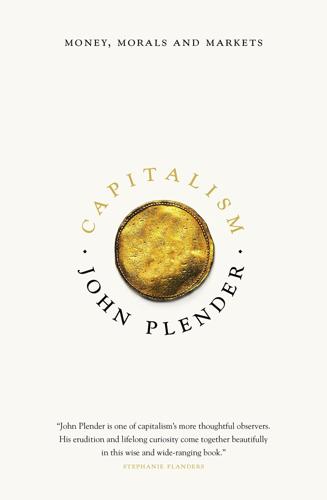
Capitalism: Money, Morals and Markets
by
John Plender
Published 27 Jul 2015
The reason so many people did predict these bubbles was that, on most conventional measures of market valuation observed over decades, the markets were hopelessly overvalued. In Fama’s world, when markets are high, investors’ expectations of future returns should be low, and they should be high when markets are low. Yet there is now academic evidence from Robin Greenwood and Andrei Shleifer at Harvard University that when markets are close to their peak, investors are most bullish because they tend to extrapolate recent rises in prices into the future when they form their expectations. In short, they expect the highest future returns when markets are close to a cyclical peak. And when markets are down, they are gloomy for the same reason.
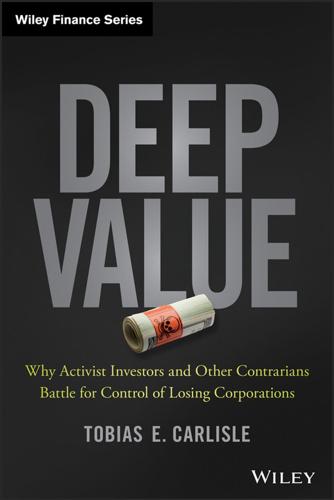
Deep Value
by
Tobias E. Carlisle
Published 19 Aug 2014
Kahneman knew that this demonstration would not undo the effects of “lifelong exposure to a perverse contingency,” but it set him on a path that would eventually lead to the Nobel Memorial Prize in economics. The evidence is that our attitude to mean reversion in stock prices is informed by the same perverse contingency. Behavioral finance researchers Joseph Lakonishok, Andrei Shleifer, and Robert Vishny conducted a landmark study in 1994 into the reasons why value strategies beat the market. Lakonishok et al. concluded that they do so because value strategies are contrarian to the “naïve” strategies followed by other investors who, like the asses clinging to the wheel in Dürer’s woodcut, fail to fully appreciate the implications of mean reversion.22 These naive strategies might range from extrapolating past earnings growth too far into the future; to assuming a trend in stock prices; to overreacting to good or bad news; or to simply equating a good investment with a wellrun company irrespective of price.

Data Action: Using Data for Public Good
by
Sarah Williams
Published 14 Sep 2020
Smolinski, and Larry Brilliant. “Detecting Influenza Epidemics Using Search Engine Query Data.” Nature 457, no. 7232 (February 2009): 1012–1014. https://doi.org/10.1038/nature07634. Gitelman, Lisa. “Raw Data” Is an Oxymoron. Cambridge, MA: MIT Press, 2013. Glaeser, Edward, Wei Huang, Yueran Ma, and Andrei Shleifer. “A Real Estate Boom with Chinese Characteristics.” Journal of Economic Perspectives 31, no. 1 (2017): 93–116. Glaeser, Edward L., Jed Kolko, and Albert Saiz. “Consumer City.” Journal of Economic Geography 1, no. 1 (2001): 27–50. https://doi.org/10.1093/jeg/1.1.27. Glass, James J. “Citizen Participation in Planning: The Relationship Between Objectives and Techniques.”
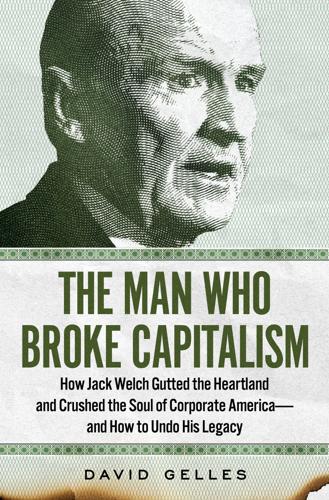
The Man Who Broke Capitalism: How Jack Welch Gutted the Heartland and Crushed the Soul of Corporate America—and How to Undo His Legacy
by
David Gelles
Published 30 May 2022
“We thought Kidder would”: Welch, Byrne, Jack: Straight from the Gut, 218. “Having this reprehensible scheme”: Stratford Sherman, “GE’s Costly Lesson on Wall Street,” Fortune, May 9, 1988, https://money.cnn.com/magazines/fortune/fortune_archive/1988/05/09/70515/index.htm. “We screwed up”: Rocheleau, interview. Of the companies: Andrei Shleifer and Robert W. Vishny, “The Takeover Wave of the 1980s,” Science New Series, Vol. 249, No. 4970 (August 17, 1990): 745–749, https://www.jstor.org/stable/2878074. “There’s no commitment”: Janet Lowe, Jack Welch Speaks: Wit and Wisdom from the World’s Greatest Business Leader (New York: Wiley, 2008), 21.
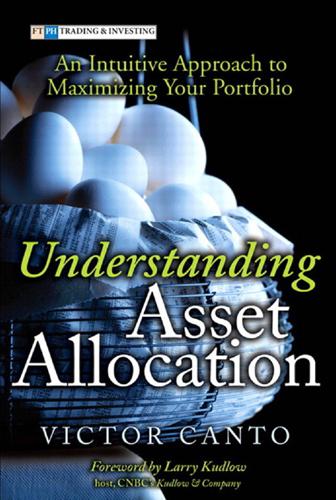
Understanding Asset Allocation: An Intuitive Approach to Maximizing Your Portfolio
by
Victor A. Canto
Published 2 Jan 2005
Harvard Business Review (July/August 1984): 102–10. Jensen, Michael C. “The Performance of Mutual Funds in the Period 1945–1964.” Journal of Finance 23 (May 1968): 389–416. La Jolla Economics. “The Rise of the en Y Is Bullish for the World Economy.” Economic Study (September 28, 1999). La Porta, Rafael, Josef Lakonishok, Andrei Shleifer, and Robert Vishny. “Good News for Value Stocks: Further Evidence on Market Efficiency.” Journal of Finance 52, No. 2 (June 1997): 859–74. Lanstein, Ronald, Kenneth Reid, and Barr Rosenburg. “Persuasive Evidence of Market Inefficiency.” Journal of Portfolio Management 11 (1985): 9–17. Lee, Joan, and Don Phillips.
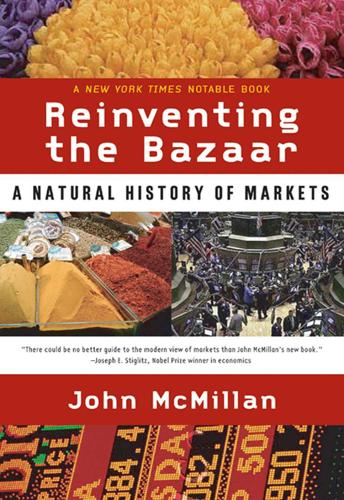
Reinventing the Bazaar: A Natural History of Markets
by
John McMillan
Published 1 Jan 2002
According to the watch-dog organization Transparency International, Indonesia had the dubious distinction of being the world’s third most corrupt country in 1999, while Russia came in seventeenth place.8 How then did markets operate in Indonesia under extensive corruption, while in Russia markets were stifled? The differing effects of corruption in Indonesia and Russia are explained by a theory of Andrei Shleifer and Robert Vishny.9 If the fire inspector, the tax evaluator, the customs official, the state-bank loan officer, and the business-license registrar each have the power to damage a firm, they can all extort profits from it. Under free-for-all extortion, each knows that any money left with the firm will probably be taken by some other bureaucrat, so each takes as much as possible.
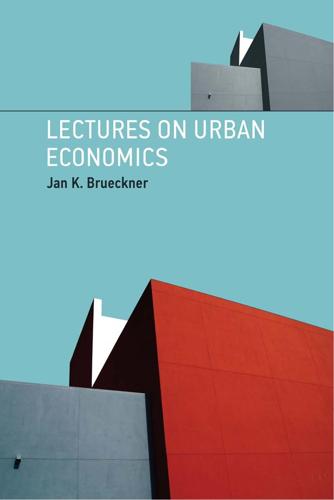
Lectures on Urban Economics
by
Jan K. Brueckner
Published 14 May 2011
Cities, Agglomeration and Spatial Equilibrium. Oxford University Press. Glaeser, Edward L., Joseph Gyourko, and Raven Saks. 2005. Why Is Manhattan So Expensive? Regulation and the Rise in Housing Prices. Journal of Law & Economics 48: 331–370. Glaeser, Edward L., Hedi D. Kallal, José A. Scheinkman, and Andrei Shleifer. 1992. Growth in Cities. Journal of Political Economy 100: 1126–1152. Glaeser, Edward L., and Matthew E. Kahn. 2004. Sprawl and Urban Growth. In Handbook of Regional and Urban Economics, volume IV, ed. J. V. Henderson and J.-F. Thisse. Elsevier. Glaeser, Edward L., Matthew E. Kahn, and Jordan Rappaport. 2008.
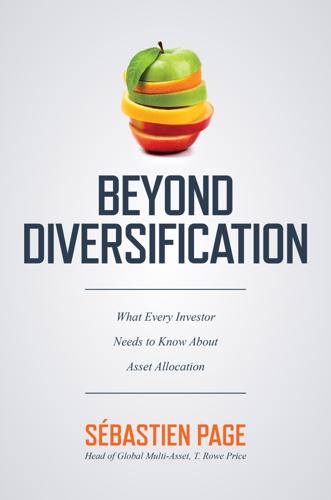
Beyond Diversification: What Every Investor Needs to Know About Asset Allocation
by
Sebastien Page
Published 4 Nov 2020
Retrieved from https://www.cambridgeassociates.com/research/private-investing-for-private-investors-life-can-be-better-after-40/. Baele, Lieven, Geert Bekaert, and Koen Inghelbrecht. 2010. “The Determinants of Stock and Bond Return Comovements,” Review of Financial Studies, vol. 23, no. 6, pp. 2374–2428. Barberis, Nicholas, Andrei Shleifer, and Jeffrey Wurgler. February 2005. “Comovement,” Journal of Financial Economics, vol. 75, no. 2, pp. 283–317. Baumeister, Roy F., Ellen Bratslavsky, Catrin Finkenauer, and Kathleen D. Vohs. 2001. “Bad Is Stronger Than Good,” Review of General Psychology, vol. 5, no. 4, pp. 323–370. Beardsley, Xiaoxin W., Brian Field, and Mingqing Xiao. 2012.
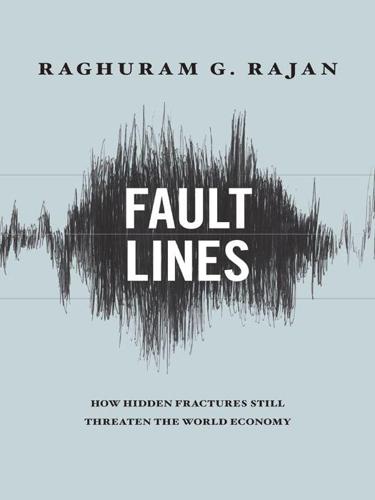
Fault Lines: How Hidden Fractures Still Threaten the World Economy
by
Raghuram Rajan
Published 24 May 2010
pid=20601087& refer=home&sid=aXHDSbOcAChc, accessed March 10, 2010. 13 See Atif Mian and Amir Sufi, “The Consequences of Mortgage Credit Expansion: Evidence from the U.S. Mortgage Default Crisis,” Quarterly Journal of Economics 124, no. 4 (November 2009): 1449–96. 14 For a model of how volume can swamp incentives, see Andrei Shleifer and Robert Vishny, “Unstable Banking,” NBER Working Paper 14943, National Bureau of Economic Research, Cambridge, MA, 2009. 15 See Frankel, “The Risk of Relying on Reputational Capital.” 16 Peter Wallison, “Barney Frank: Predatory Lender,” Wall Street Journal, October 16, 2009. Chapter Seven.
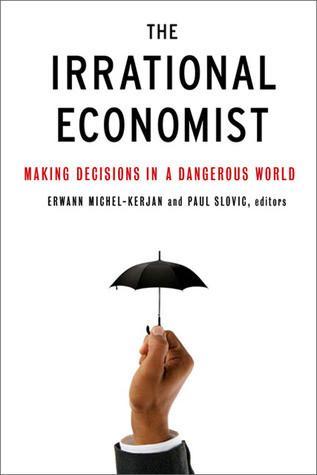
The Irrational Economist: Making Decisions in a Dangerous World
by
Erwann Michel-Kerjan
and
Paul Slovic
Published 5 Jan 2010
They maintain that the mere fact that the major event did not happen cannot be taken to mean that the market was irrational. Maybe they are right. One cannot decisively prove that the stock market has been irrational. But in all of this debate no one has offered any real evidence to think that the volatility is rational.6 The price changes appear instead to be correlated with social changes of various kinds. Andrei Shleifer and Sendhil Mullainathan have observed the changes in Merrill Lynch advertisements. Prior to the stock market bubble, in the early 1990s, Merrill Lynch was running advertisements showing a grandfather fishing with his grandson. The ad was captioned: “Maybe you should plan to grow rich slowly.”

The Wisdom of Crowds
by
James Surowiecki
Published 1 Jan 2004
An especially good account of the relationship between behavioral finance and traditional finance theory is Robert Shiller, “From Efficient Markets Theory to Behavioral Finance,” Journal of Economic Perspectives 17 (2003): 83–104. There’s also lots of good material on irrationality in Shiller’s Irrational Exuberance (Princeton: Princeton University Press, 2000). The limits of arbitrage are well explained in Andrei Shleifer, Inefficient Markets: An Introduction to Behavioral Finance (New York: Oxford University Press, 2000). And a mountain of evidence and intelligent analysis is marshaled in support of the proposition that investor psychology matters in Kent Daniel, David Hirshleifer, and Siew Hong Teoh, “Investor Psychology in Capital Markets: Evidence and Policy Implications,” Journal of Monetary Economics 49 (2002): 139–209.

The Permanent Portfolio
by
Craig Rowland
and
J. M. Lawson
Published 27 Aug 2012
Diversify out in case of problems at your company that jeopardizes the stock and your job at the same time. Notes 1. If Index Funds Perform Better, Why Are Actively Managed Funds More Popular?, Knowledge@Wharton, February 2, 2011. 2. Michael E. Porter, Cases in Competitive Strategy (New York: Free Press, 1983), 212. 3. Josef Lakonishok, Andrei Shleifer, and Robert W. Vishny, “The Impact of Institutional Trading on Stock Prices,” Journal of Financial Economics 32 (1992): 23–43. 4. Bob Pisani. Man Vs. Machine: Pros and Cons of High-Speed Trading. CNBC, September 13, 2011, www.cnbc.com/id/39041598/Man_Vs_Machine_Pros_and_Cons_of_High_Speed_Trading.
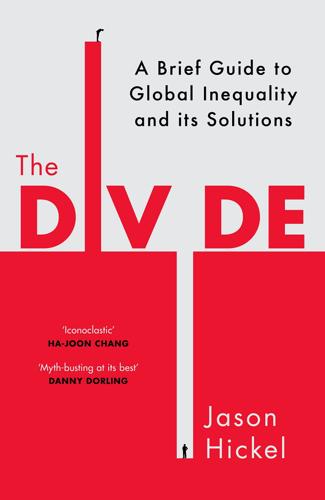
The Divide: A Brief Guide to Global Inequality and Its Solutions
by
Jason Hickel
Published 3 May 2017
If you’re curious enough to look into the science behind the Doing Business rankings, you’ll find that it’s actually not science at all. An official report published in June 2013 revealed that the system has not been peer-reviewed.34 Instead, it is based almost entirely on the papers of two of the economists who invented it, Simeon Djankov and Andrei Shleifer, both of whom are well-known neoliberal ideologues. Why should we listen to these unelected technocrats? And who gave the World Bank the power to rank countries according to the narrow criteria of ‘doing business’? An increasing number of civil-society groups are raising these questions, and a recent review ordered by World Bank President Jim Kim even recommends abandoning the ranking system altogether.
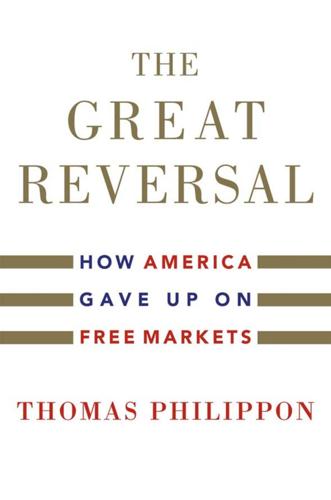
The Great Reversal: How America Gave Up on Free Markets
by
Thomas Philippon
Published 29 Oct 2019
The idea that free and competitive markets work best is supported by much empirical evidence, and economists spread the gospel of free markets in large part because it had proven so successful in America. In their highly influential paper, Simeon Djankov, Rafael La Porta, Florencio Lopez-de-Silanes, and Andrei Shleifer (2002) find that the regulation of entry is associated with higher levels of corruption, and that countries with more open and accountable political systems regulate entry less. Multilateral agencies such as the World Bank and the OECD provided similar advice around the world. In 1999, the OECD noted that the “United States has been a world leader in regulatory reform for a quarter century.

Armed Humanitarians
by
Nathan Hodge
Published 1 Sep 2011
Mostly I was describing lunch.18 Foreign aid budgets were often singled out by conservatives as a waste of taxpayer money—and aid programs to Eastern Europe and the former Soviet Union in the 1990s set new standards for corruption and mismanagement. In Russia, USAID hired the Harvard Institute for International Development to advise the government on privatization. The project was directed by Andrei Shleifer, a Russian-born émigré and tenured professor of economics at Harvard; another consultant to the project was Jonathan Hay, a Rhodes Scholar and former World Bank consultant. Both men, it turned out, had a massive conflict of interest: While helping the Russian government design the rules for a market economy, they were simultaneously making personal investments in Russia.19 The U.S. government later implicated both men in a conspiracy to defraud the government, and Harvard University eventually paid $26.5 million to the U.S. government to settle a lawsuit after a U.S.
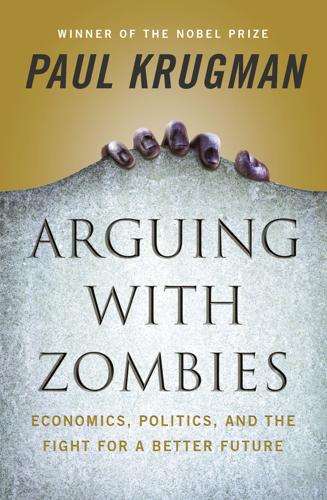
Arguing With Zombies: Economics, Politics, and the Fight for a Better Future
by
Paul Krugman
Published 28 Jan 2020
Not much, argued Milton Friedman in an influential 1953 paper: smart investors will make money by buying when the idiots sell and selling when they buy and will stabilize markets in the process. But the second strand of behavioral finance says that Friedman was wrong, that financial markets are sometimes highly unstable, and right now that view seems hard to reject. Probably the most influential paper in this vein was a 1997 publication by Andrei Shleifer of Harvard and Robert Vishny of Chicago, which amounted to a formalization of the old line that “the market can stay irrational longer than you can stay solvent.” As they pointed out, arbitrageurs—the people who are supposed to buy low and sell high—need capital to do their jobs. And a severe plunge in asset prices, even if it makes no sense in terms of fundamentals, tends to deplete that capital.

The Ascent of Money: A Financial History of the World
by
Niall Ferguson
Published 13 Nov 2007
See also Michael J. Mauboussin, More Than You Know: Finding Financial Wisdom in Unconventional Places (New York / Chichester, 2006). 12 Mark Buchanan, The Social Atom: Why the Rich Get Richer, Cheaters Get Caught, and Your Neighbor Usually Looks Like You (New York, 2007), p. 54. 13 For an introduction, see Andrei Shleifer, Inefficient Markets: An Introduction to Behavioral Finance (Oxford, 2000). For some practical applications see Richard H. Thaler and Cass R. Sunstein, Nudge: Improving Decisions About Health, Wealth, and Happiness (New Haven, 2008). 14 See Peter Bernstein, Capital Ideas Evolving (New York, 2007). 15 See for example James Surowiecki, The Wisdom of Crowds (New York, 2005); Ian Ayres, Supercrunchers: How Anything Can Be Predicted (London, 2007). 16 Daniel Gross, ‘The Forecast for Forecasters is Dismal’, New York Times, 4 March 2007. 17 The classic work, first published in 1841, is Charles MacKay, Extraordinary Popular Delusions and the Madness of Crowds (New York, 2003 [1841]). 18 Yudkowsky, ‘Cognitive Biases’, pp. 110f. 19 For an introduction to Lo’s work, see Bernstein, Capital Ideas Evolving , ch. 4.
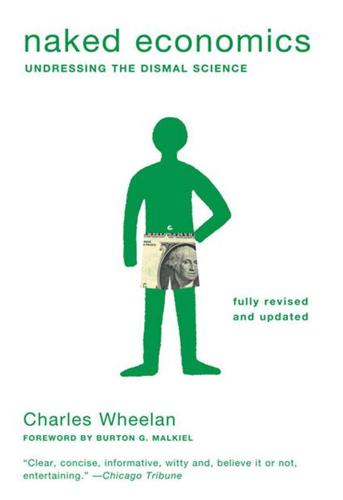
Naked Economics: Undressing the Dismal Science (Fully Revised and Updated)
by
Charles Wheelan
Published 18 Apr 2010
“A Useful Poison,” The Economist, December 14, 2000. 7. “Fighting Malaria,” The Economist, May 1, 2003. 8. “A Useful Poison,” The Economist, December 14, 2000. 9. Gary Becker and Guity Nashat Becker, The Economics of Life (New York: McGraw-Hill, 1996). 10. Simeon Djankov, Rafael La Porta, Florencio Lopez-de-Silanes, and Andrei Shleifer, The Regulation of Entry, NBER Working Paper No. W7892 (National Bureau of Economic Research, September 2000). 11. Geeta Anand, “India’s Colleges Battle a Thicket of Red Tape,” Wall Street Journal, November 13, 2008. 12. Stephen Castle, “Europe Relaxes Rules on Sale of Ugly Fruits and Vegetables,” New York Times, November 13, 2008. 13.
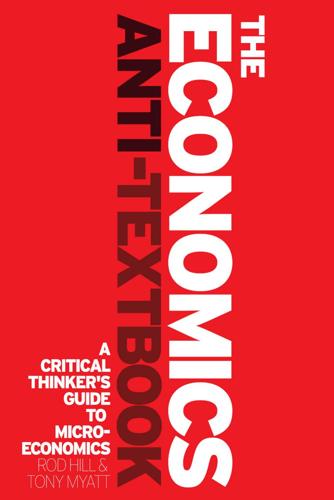
The Economics Anti-Textbook: A Critical Thinker's Guide to Microeconomics
by
Rod Hill
and
Anthony Myatt
Published 15 Mar 2010
On the other hand, Dewald et al. found that the errors did not significantly affect the conclusions in the majority of cases. 8 Another example would be whether asset markets are efficient. There has been a long-running battle between Eugene Fama and his associates in support of the efficient market hypothesis, and Andrei Shleifer, Richard Thaler and others in support of the inefficient market hypothesis. 9 Donald McCloskey and Deirdre McCloskey are the same person, the transition occurring (from Donald to Deirdre) in 1995. 10 A good Internet source is the History of Economic Thought website developed through the New School of Economic Research.
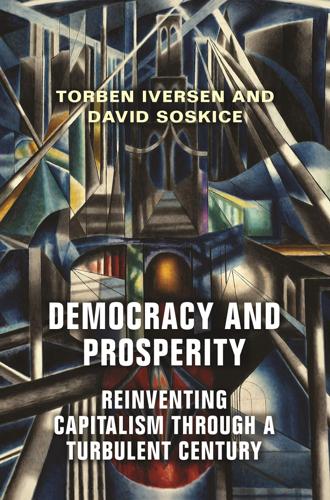
Democracy and Prosperity: Reinventing Capitalism Through a Turbulent Century
by
Torben Iversen
and
David Soskice
Published 5 Feb 2019
National Bureau of Economic Research (NBER) conference volume, ed. E. L. Glaeser. Chicago: University of Chicago Press. Glaeser, Edward L. 2011. The Triumph of the City. New York: MacMillanhttps://skole200.dk/wp-.content/uploads/2014/08/Artikel_Skolens_Udvikling_1960_70.pdf Glaeser, Edward. L., Hedi D. Kallal, José A. Scheinkman, and Andrei Shleifer. 1992. “Growth in Cities.” Journal of Political Economy 100 (6): 1126–52. Glaeser, Edward L., and Matthew G. Resseger. 2010. “The Complementarity between Cities and Skills.” Journal of Regional Science 50 (1): 221–44. Glyn, Andrew. 2007. Capitalism Unleashed: Finance Globalization and Welfare.
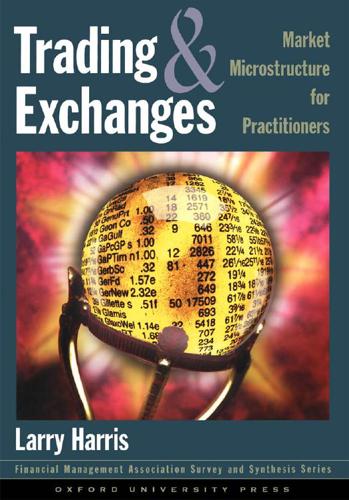
Trading and Exchanges: Market Microstructure for Practitioners
by
Larry Harris
Published 2 Jan 2003
Trading is hazardous to your wealth: The common stock investment performance of individual investors. Journal of Finance 55(2), 773–806. Bernstein, Peter L. 1996. Against the Gods: The Remarkable Story of Risk. (John Wiley & Sons, New York). DeLong, Bradford J., Andrei Shleifer, Lawrence H. Summers, and Robert J. Waldmann. 1989. The size and incidence of the losses from noise trading. Journal of Finance 44(3), 681–696. DeLong, Bradford J., Andrei Shleifer, Lawrence H. Summers, and Robert J. Waldmann. 1991. The survival of noise traders in financial markets. Journal of Business 64(1), 1–20. Gervais, S., and Terrance Odean. 2001. Learning to be overconfident.
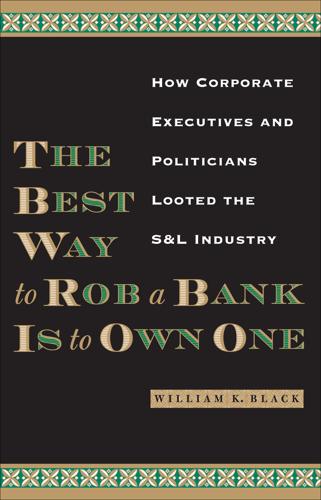
The Best Way to Rob a Bank Is to Own One: How Corporate Executives and Politicians Looted the S&L Industry
by
William K. Black
Published 31 Mar 2005
Trust: The Social Virtues and the Creation of Prosperity, New York: Free Press. General Accounting Office (GAO) Thrift Failures. 1989. Jackson, Brooks. 1988. Honest Graft: Big Money and the American Political Process. New York: Knopf. Johnson, Simon, Rafael La Porta, Florencio Lopez-de-Silanes, and Andrei Shleifer. 2000. “Tunnelling.” American Economic Association Papers and Precedings 90 (2):22–26. Jorion, Phillipe. 1995. Big Bets Gone Bad, San Diego: Academic Press. Kammer, Jerry. 1987. Arizona Republic, July 1. Kane, Edward J. 1985. The Gathering Crisis in Federal Deposit Insurance, Cambridge, Mass.: MIT Press. ———. 1989.
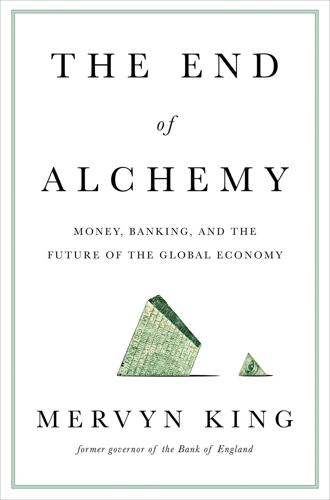
The End of Alchemy: Money, Banking and the Future of the Global Economy
by
Mervyn King
Published 3 Mar 2016
Friedman, Milton and Anna Schwartz (1963), A Monetary History of the United States, 1867–1960, Princeton University Press, Princeton, New Jersey. Fukuyama, Francis (1992), The End of History and the Last Man, Free Press, New York. Geithner, Timothy (2014), Stress Tests: Reflections on Financial Crises, Crown Publishers, New York. Gennaioli, Nicola, Andrei Shleifer and Robert Vishny (2015), ‘Neglected Risks: The Psychology of Financial Crises’, National Bureau of Economic Research Working Paper 20875, mimeo, Cambridge, Massachusetts. Gibbon, Edward (1776), The History of the Decline and Fall of the Roman Empire, page number references to the Everyman edition of 1993, Random House, London.
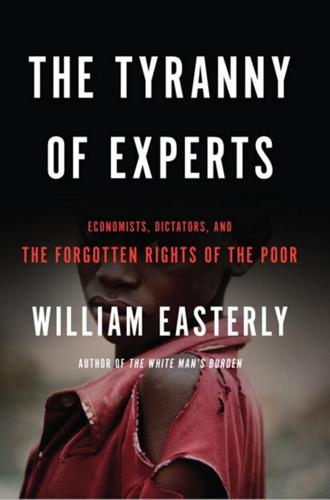
The Tyranny of Experts: Economists, Dictators, and the Forgotten Rights of the Poor
by
William Easterly
Published 4 Mar 2014
Luigi Guiso, Paola Sapienza, and Luigi Zingales, “Long Term Persistence,” NBER Working Paper 14278, National Bureau of Economic Research, Cambridge, MA, 2008, 8; available at: http://www.nber.org/papers/w14278.pdf, accessed August 24, 2013. 13. Guiso et al., “Long Term Persistence,” 10. 14. J. Bradford De Long and Andrei Shleifer, “Princes and Merchants: European City Growth Before the Industrial Revolution,” Journal of Law and Economics 36, no.2 (October 1993): 671–702. 15. Giorgio Falco, The Holy Roman Republic: A Historic Profile of the Middle Ages, trans K. V. Kent (New York: A. S. Barnes and Company, 1964), 229. 16.
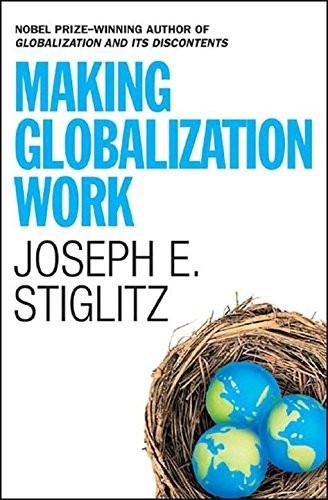
Making Globalization Work
by
Joseph E. Stiglitz
Published 16 Sep 2006
The other is ideological: the Bush administration has consistently opposed efforts to create and strengthen multilateral institutions; an international bankruptcy court, which might naturally evolve as a result of an attempt to create a sovereign debt restructuring mechanism, would be seen as an anathema. 28.American bankruptcy law recognizes this difference; there is a separate chapter (Chapter 9) of bankruptcy law dealing with public bodies. 29.Andrei Shleifer, a professor at Harvard, and a close friend and associate of then undersecretary of the Treasury Larry Summers, was appointed to advise Russia on its privatization through an AID (America’s development agency) contract with Harvard. (At the time, Treasury played a central role in designing economic policies toward Russia.)
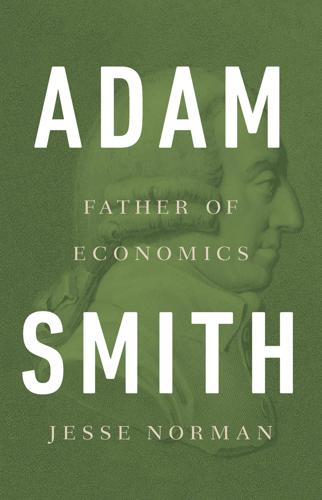
Adam Smith: Father of Economics
by
Jesse Norman
Published 30 Jun 2018
Camerer and George Loewenstein, ‘Adam Smith, Behavioral Economist’, Journal of Economic Perspectives, 19.3, Summer 2005 CHAPTER 8: ADAM SMITH AND MARKETS ‘He’s kind of a drunken psycho’: Warren Buffett, quoted on Benzinga.com, 6 January 2015 Benjamin Graham: The Intelligent Investor, Harper & Bros. 1949 Efficient Market Hypothesis: Richard Thaler, ‘Markets can be wrong and the price is not always right’, Financial Times, 4 August 2009. On the theory, see e.g. Andrei Shleifer, Inefficient Markets, Oxford University Press 2000. A highly readable overview of the history is Justin Fox, The Myth of the Rational Market, Harriman House 2009 Information incentives and efficient markets: see Sanford J. Grossman and Joseph E. Stiglitz, ‘On the Impossibility of Informationally Efficient Markets’, American Economic Review, 70.3, 1980 ‘There is no other proposition in economics which has more solid empirical evidence’: Michael Jensen, ‘Some Anomalous Evidence Regarding Market Efficiency’, Journal of Financial Economics, 6.2–3, 1978.
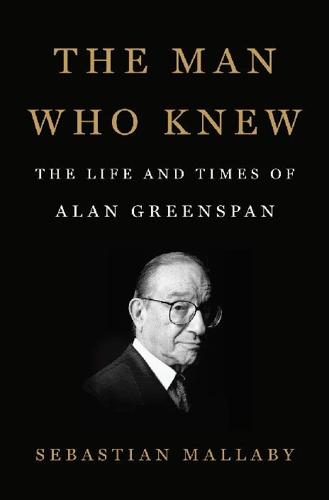
The Man Who Knew: The Life and Times of Alan Greenspan
by
Sebastian Mallaby
Published 10 Oct 2016
Wayne Angell, interview by the author, June 13, 2013. 64. If the great inflation of the 1970s had proved the pitfalls of excessive government activism, the great crash of 1987 was the first in a series of contrary lessons, demonstrating that markets also had their pitfalls. 65. “The limits to arbitrage” was a phrase coined by the economists Andrei Shleifer and Robert Vishny. For a longer explanation of the triple critique of the efficient markets hypothesis, see Sebastian Mallaby, More Money Than God: Hedge Funds and the Making of a New Elite (New York: Penguin, 2010), 104–8. 66. As illustrated repeatedly in this book, the common view of Greenspan as a believer in efficient markets is mistaken.
…
See also Alan Greenspan, The Age of Turbulence: Adventures in a New World (New York: Penguin Books, 2008), 172. Slifman notes that Greenspan’s view that profits were relatively easy to measure was not shared by staff experts. Larry Slifman, e-mail to the author, October 7, 2015. 29. In his academic writing, Summers had pointed to the limits of market efficiency. See, for example, Andrei Shleifer and Lawrence H. Summers, “The Noise Trader Approach to Finance,” Journal of Economic Perspectives 4, no. 2 (Spring 1990). 30. Woodward, Maestro, 171. 31. Isabelle Clary, “Rate Hike Request Reported: Eight of 12 District Banks Are Said to Have Appealed to the Fed to Raise the Discount Rate,” Philadelphia Inquirer, September 18, 1996. 32.
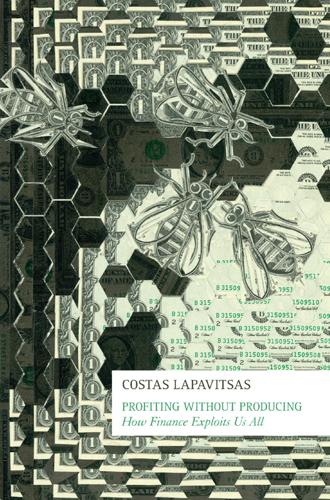
Profiting Without Producing: How Finance Exploits Us All
by
Costas Lapavitsas
Published 14 Aug 2013
Kuznets, Simon, ‘Economic Growth and Income Inequality’, American Economic Review 45:1, 1955, pp. 1–28. Kydland, Finn E., and Edward C. Prescott, ‘Rules Rather than Discretion: The Inconsistency of Optimal Plans’, Journal of Political Economy 85:3, 1977, pp. 473–92. La Porta, Rafael, Florencio Lopez-de-Silanes, Andrei Shleifer, and Robert Vishny, ‘Law and Finance’, Journal of Political Economy, vol. 106. No. 6, 1998, pp. 1113–55. Lamoreaux, Naomi, ‘The Great Merger Movement in American Business, 1895–1904’, Cambridge: Cambridge University Press, 1985. Lamoreaux, Naomi, Insider Lending, NBER, Cambridge: Cambridge University Press, 1994.

More: The 10,000-Year Rise of the World Economy
by
Philip Coggan
Published 6 Feb 2020
Paul Krugman, “The myth of Asia’s miracle”, Foreign Affairs, November/December 1994, https://www.foreignaffairs.com/articles/asia/1994–11–01/myth-asias-miracle 25. Mallet, The Trouble with Tigers, op. cit. 26. “One more push”, The Economist, July 21st 2011 27. “The Bangalore paradox”, The Economist, April 21st 2005 28. “India no longer home to the largest number of poor”, Times of India, June 27th 2018 29. Andrei Shleifer, “Normal countries: the east 25 years after communism”, Foreign Affairs, November/December 2014 30. Stanley Fischer, Ratna Sahay and Carlos A. Végh, “Stabilization and growth in transition economies: the early experience”, Journal of Economic Perspectives, vol. 2, no. 10, Spring 1996 31. Jan Lopatka, “No more low cost: East Europe goes up in the world”, Reuters, July 25th 2017 32.
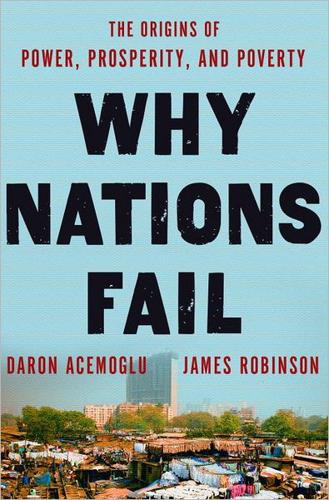
Why Nations Fail: The Origins of Power, Prosperity, and Poverty
by
Daron Acemoglu
and
James Robinson
Published 20 Mar 2012
.: Belknap Press of Harvard University Press. Landes, David S. (1999). The Wealth and Poverty of Nations: Why Some Are So Rich and Some So Poor. New York: W. W. Norton and Co. Lane, Frederick C. (1973). Venice: A Maritime Republic. Baltimore, Md.: Johns Hopkins University Press. La Porta, Rafael, Florencio Lopez-de-Silanes, and Andrei Shleifer (2008). “The Economic Consequences of Legal Origins.” Journal of Economic Literature 46: 285–332. Law, Robin C. (1977). The Empire, c.1600–c.1836: West African Imperialism in the Era of the Atlantic Slave Trade. Oxford, UK: The Clarendon Press. ——(1980). “Wheeled Transportation in Pre-Colonial West Africa.”
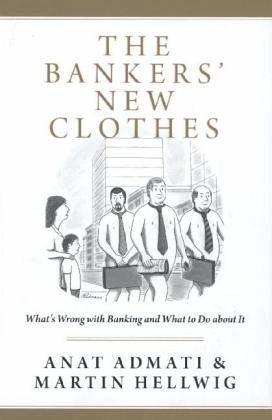
The Bankers' New Clothes: What's Wrong With Banking and What to Do About It
by
Anat Admati
and
Martin Hellwig
Published 15 Feb 2013
“Systemic Banking Crisis Database: An Update.” IMF Working Paper 163. International Monetary Fund, Washington, DC. La Porta, R., F. Lopez-de-Silanes, and A. Shleifer. 1999. “Corporate Ownership around the World.” Journal of Finance 54: 471–517. La Porta, Rafael, Florencio Lopez-de-Silanes, Andrei Shleifer, and Robert W. Vishny. 1997. “Legal Determinants of External Finance.” Journal of Finance 52: 1131–1150. ———. 1998. “Law and Finance.” Journal of Political Economy 106: 1113–1155. ———. 2000a. “Agency Problems and Dividend Policies around the World.” Journal of Finance 55 (1): 1–33. ———. 2000b.

The Survival of the City: Human Flourishing in an Age of Isolation
by
Edward Glaeser
and
David Cutler
Published 14 Sep 2021
The book’s production relied on four terrific research assistants: Madeline Kitch, Sravya Kuchibhotla, Jimmy Lin, and Jessica Wu. They prepared the footnotes and caught our errors. We are thankful that they gave us their winter break. Susan VanHecke was a superb copy editor and we are most grateful for her care. We benefited enormously from the extensive comments we received from Giacomo Ponzetto, Tzachi Raz, Andrei Shleifer, and Larry Summers. Our discussion of the Black Death in particular benefited from Tzachi. Giacomo helped us with a more European perspective. Andrei, as he has for three decades, provided us with clarity about which themes and topics were most important. Larry pushed us to clarify our thoughts, which aided us immensely.
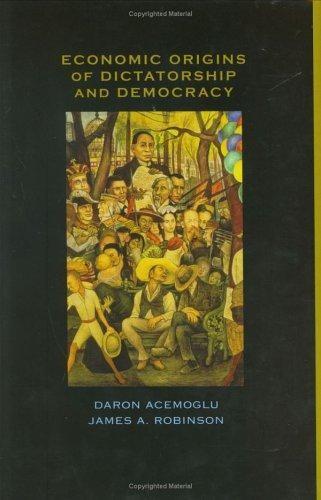
Economic Origins of Dictatorship and Democracy
by
Daron Acemoğlu
and
James A. Robinson
Published 28 Sep 2001
Bibliography 393 Muller, Edwin N., and Mitchell A. Seligson (1987) “Inequality and Insurrections,” American Political Science Review, 81, 425–51. Mulligan, Casey B., Xavier Sala-i-Martin and Richard Gil (2003) “Do Democracies Have Different Public Policies than Nondemocracies?” NBER Working Paper #10040. Murphy, Kevin J., Andrei Shleifer, and Robert W. Vishny (1989) “Industrialization and the Big Push,” Journal of Political Economy, 97, 1003–26. Myrdal, Gunnar (1957) Economic Theory and Under-Developed Regions; London: Duckworth. Namier, Lewis (1961) The Structure of Politics at the Accession of George III; London: Macmillan.

Adaptive Markets: Financial Evolution at the Speed of Thought
by
Andrew W. Lo
Published 3 Apr 2017
The Gift of Fear: Survival Signals that Protect Us from Violence. Boston: Little Brown. Debreu, Gérard. 1959. The Theory of Value: An Axiomatic Analysis of Economic Equilibrium. New York: John Wiley & Sons. ___. 1991. “The Mathematization of Economic Theory.” American Economic Review 81: 1–7. Delong, J. Bradford, Andrei Shleifer, Lawrence Summers, and Robert J. Waldmann. 1991. “The Survival of Noise Traders in Financial Markets.” Journal of Business 64: 1–19. De Nederlandsche Bank (DNB). 2009. “The Seven Elements of an Ethical Culture.” https://www.dnb.nl/en/binaries/The%20Seven%20Elements%20of%20an%20Ethical%20Culture_tcm47-233197.pdf. ___. 2014.
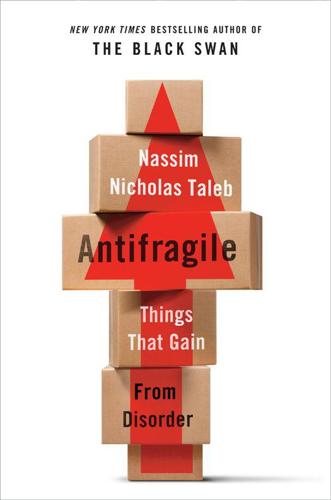
Antifragile: Things That Gain From Disorder
by
Nassim Nicholas Taleb
Published 27 Nov 2012
De Finetti, B., 1974, Theory of Probability, Vol. 1. London: John. De Finetti, B., 1989, “Probabilism.” Erkenntnis 31(2): 169–223. De la Hunty, A., S. Gibson, and M. Ashwell, 2006, “A Review of the Effectiveness of Aspartame in Helping with Weight Control.” Nutrition Bulletin 31(2):115–128. De Long, J. Bradford, and Andrei Shleifer, 1993, “Princes and Merchants: European City Growth Before the Industrial Revolution.” Journal of Law and Economics 36: 671–702. De Soto, H., 2000, The Mystery of Capital: Why Capitalism Triumphs in the West and Fails Everywhere Else. Basic Books. De Vany, A., 2011, The New Evolution Diet. Vermilion.
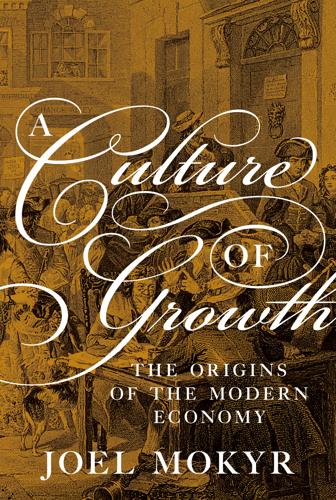
A Culture of Growth: The Origins of the Modern Economy
by
Joel Mokyr
Published 8 Jan 2016
Review of Peter J. Richerson and Morten H. Christiansen, 2013. Journal of Economic Perspectives Vol. 54, No. 2, pp. 522–33. Glaeser, Edward L. 2005. “The Political Economy of Hatred.” Quarterly Journal of Economics Vol. 120, No. 1, pp. 45–86. Glaeser, Edward L, R. La Porta, F. Lopez-de-Silanes, and Andrei Shleifer. 2004. “Do Institutions Cause Growth?” Journal of Economic Growth Vol. 9, pp. 271–303. Glanvill, Joseph. 1661. The Vanity of Dogmatizing. London: Printed by E. C. for Henry Eversden. ———. 1665. Scepsis Scientifica, or, Confest Ignorance, the Way to Science. London: Printed by E. Cotes for Henry Eversden. ———. 1668.

Termites of the State: Why Complexity Leads to Inequality
by
Vito Tanzi
Published 28 Dec 2017
Kropotkin, Pietro, [1905] 2008, Lo Stato (Salerno, Italy: Galzerano Editore). KPMG International, 2012, KPMG’s Individual Income Tax and Social Security Rate Survey, October, Publication Number 120916. Krueger, Anne O., 2000, Economic Policy Reform: The Second Stage (Chicago, IL: The University of Chicago Press). La Porta, Rafael, Florencio Lopez-Silanes, Andrei Shleifer, and Robert Vishny, 1998, “The Quality of Government.” Unpublished mimeo Lacey, A. R., 2001, Robert Nozick (Princeton, NJ: Princeton University Press). Laffont, Jean-Jacques and Jean Tirole, 1993, A Theory of Incentives in Procurement and Regulations (Cambridge, MA: MIT Press). Landes, David, 1983, Revolution in Time: Clocks and the Making of the Modern World (Cambridge, MA: Harvard University Press). 1998, The Wealth and Poverty of Nations: Why Some Are So Rich and Some so Poor (New York and London: W.
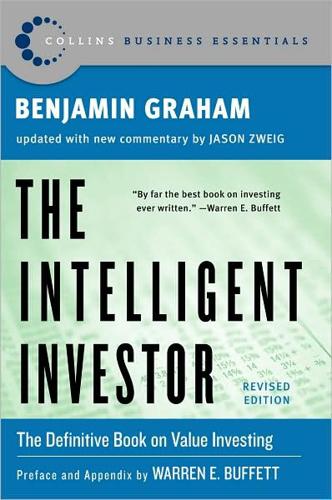
The Intelligent Investor (Collins Business Essentials)
by
Benjamin Graham
and
Jason Zweig
Published 1 Jan 1949
Sirri and Peter Tufano, “Costly Search and Mutual Fund Flows,” The Journal of Finance, vol. 53, no. 8, October, 1998, pp. 1589–1622; Keith C. Brown, W. V. Harlow, and Laura Starks, “Of Tournaments and Temptations,” The Journal of Finance, vol. 51, no. 1, March, 1996, pp. 85–110; Josef Lakonishok, Andrei Shleifer, and Robert Vishny, “What Do Money Managers Do?” working paper, University of Illinois, February, 1997; Stanley Eakins, Stanley Stansell, and Paul Wertheim, “Institutional Portfolio Composition,” Quarterly Review of Economics and Finance, vol. 38, no. 1, Spring, 1998, pp. 93–110; Paul Gompers and Andrew Metrick, “Institutional Investors and Equity Prices,” The Quarterly Journal of Economics, vol. 116, no. 1, February, 2001, pp. 229–260. 5 Amazingly, this illustration understates the advantage of index funds, since the database from which it is taken does not include the track records of hundreds of funds that disappeared over these periods.
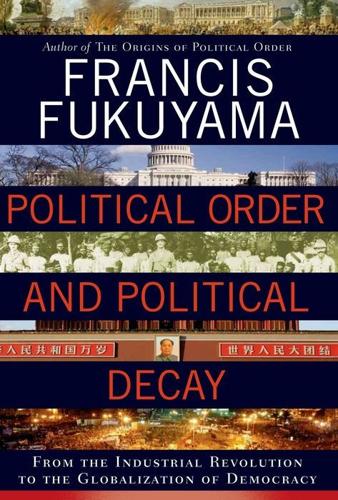
Political Order and Political Decay: From the Industrial Revolution to the Globalization of Democracy
by
Francis Fukuyama
Published 29 Sep 2014
(New Brunswick, NJ: Transaction, 2001); Robert Leiken, “Controlling the Global Corruption Epidemic,” Foreign Policy 105 (1997): 55–73; Robert Klitgaard, Controlling Corruption (Berkeley: University of California Press, 1988), and Tropical Gangsters: One Man’s Experience with Development and Decadence in Deepest Africa (New York: Basic Books, 1990); Andrei Shleifer and Robert W. Vishny, “Corruption,” Quarterly Journal of Economics 108, no. 3 (1993): 599–617; Johnston, Syndromes of Corruption: Wealth, Power, and Democracy (New York: Cambridge University Press, 2005. 4. See for example the definition in Johnston, Syndromes of Corruption, p. 11. 5. On the Wanli emperor, see Fukuyama, Origins of Political Order, p. 312. 6.
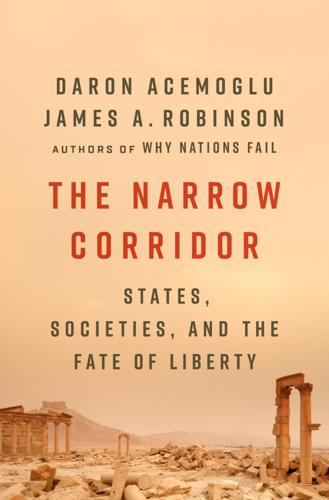
The Narrow Corridor: States, Societies, and the Fate of Liberty
by
Daron Acemoglu
and
James A. Robinson
Published 23 Sep 2019
Dean, Trevor (1987). Land and Power: Ferrara Under the Este, 1350–1450. New York: Cambridge University Press. ——— (1999). “The Rise of the Signori.” In The New Cambridge Medieval History, edited by David Abulafia, vol. 5, 1198–1300. New York: Cambridge University Press. DeLong, J. Bradford, and Andrei Shleifer (1993). “Princes and Merchants: European City Growth Before the Industrial Revolution.” Journal of Law and Economics 36, no. 2: 671–702. Department of Justice (2015). “Investigation of the Ferguson Police Department.” https://www.justice.gov/sites/default/files/opa/press-releases/attachments/2015/03/04/ferguson_police_department_report.pdf.
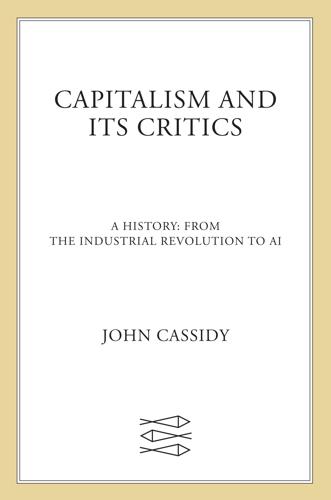
Capitalism and Its Critics: A History: From the Industrial Revolution to AI
by
John Cassidy
Published 12 May 2025
Stiglitz, The Roaring Nineties: A New History of the World’s Most Prosperous Decade (New York: W. W. Norton, 2003). 42. Stiglitz, Road to Freedom, 229. 43. Lawrence H. Summers, “Does the Stock Market Rationally Reflect Fundamental Values?,” The Journal of Finance 41, no. 3 (July 1986); and Andrei Shleifer and Lawrence H. Summers, “Breach of Trust in Hostile Takeovers,” in Corporate Takeovers: Causes and Consequences, Alan J. Auerbach, ed. (Chicago: University of Chicago Press, 1988). 44. John Cassidy, “The Triumphalist,” The New Yorker, June 28, 1998. 45. Daniel Yergin and Joseph Stanislaw, The Commanding Heights (New York: Simon and Schuster, 1998), 150–51. 46.

Post Wall: Rebuilding the World After 1989
by
Kristina Spohr
Published 23 Sep 2019
GHWBPL Telcon of Bush–Yeltsin call (8.30–9.05 a.m.) 21.8.1991 Kennebunkport pp. 1–4. Bush & Scowcroft A World Transformed pp. 528–30 Back to text 12. Ibid. p. 531. Cf. the heavily redacted record of conversation, GHWBPL Telcon of Bush–Major call 21.8.1991 Kennebunkport Back to text 13. Brown Seven Years pp. 197–9; Reynolds One World Divisible p. 569 Back to text 14. Andrei Shleifer & Robert W. Vishny ‘Reversing the Soviet Economic Collapse’ Brookings Papers on Economic Activity 2 (1991) pp. 340–60 esp. pp. 344–7. See also IMFA-AWP JSSE B3/F1 USSR: August 1990 Fact-Finding Staff Visit – Minutes of Real Sector Meeting R-4, 14.8.1990 Gosplan Moscow pp. 1–3; Minutes of Monetary Policy M1 14.8.1990 Gosbank Moscow pp. 1–4; and Minutes of Real Sector Meeting R-6 14.8.1990 & 15.8.1990 Goskomtsen Moscow pp. 1–4 Back to text 15.